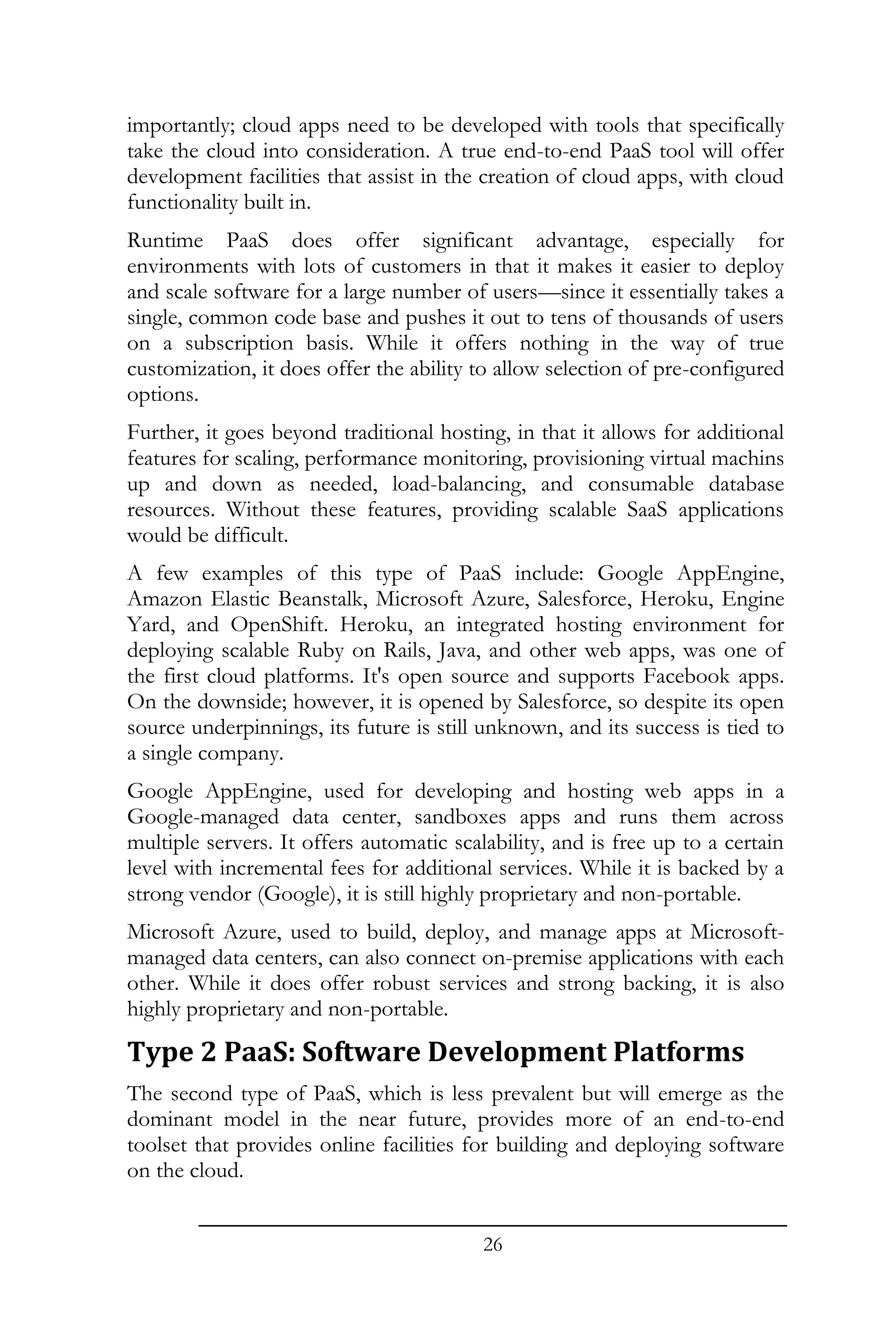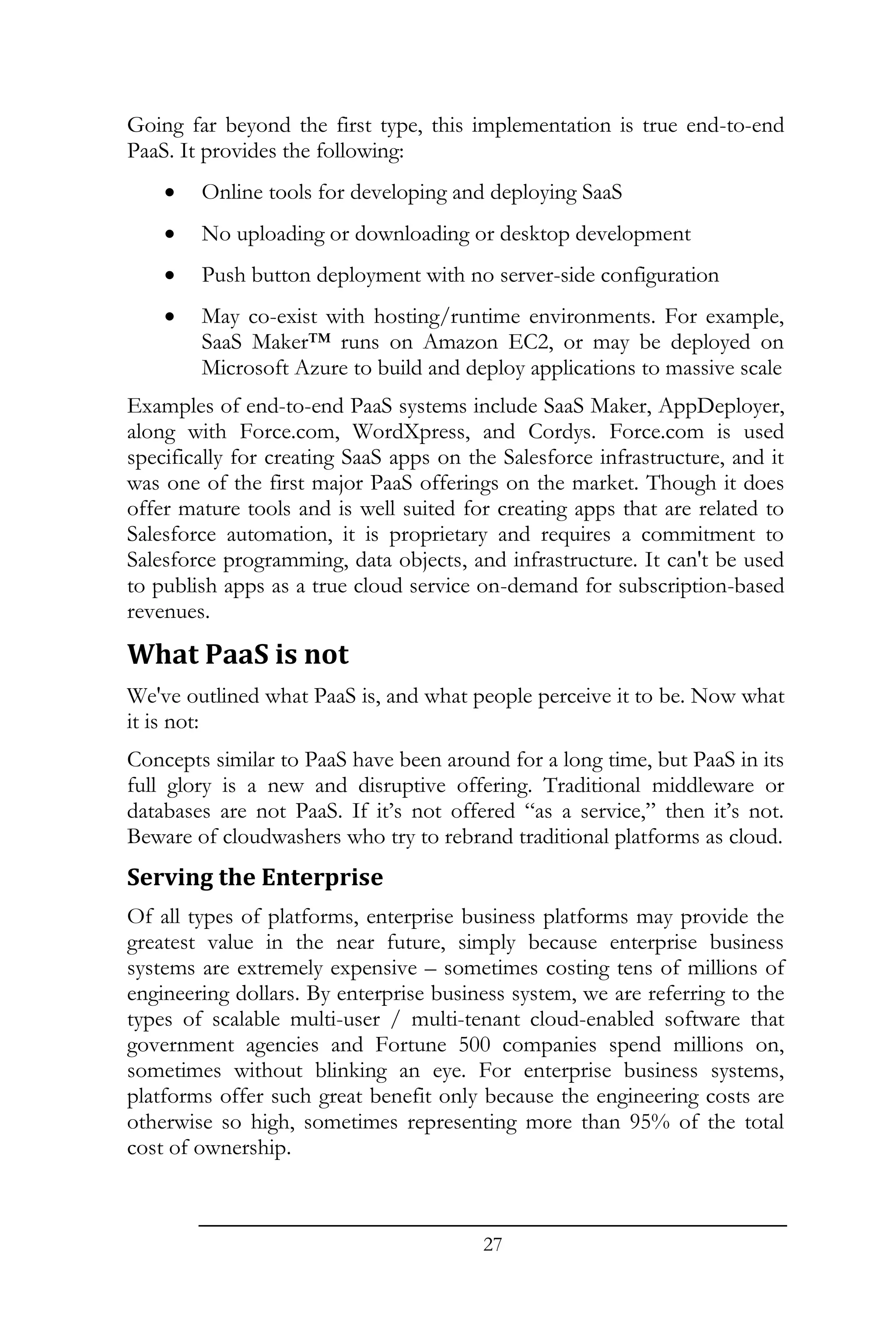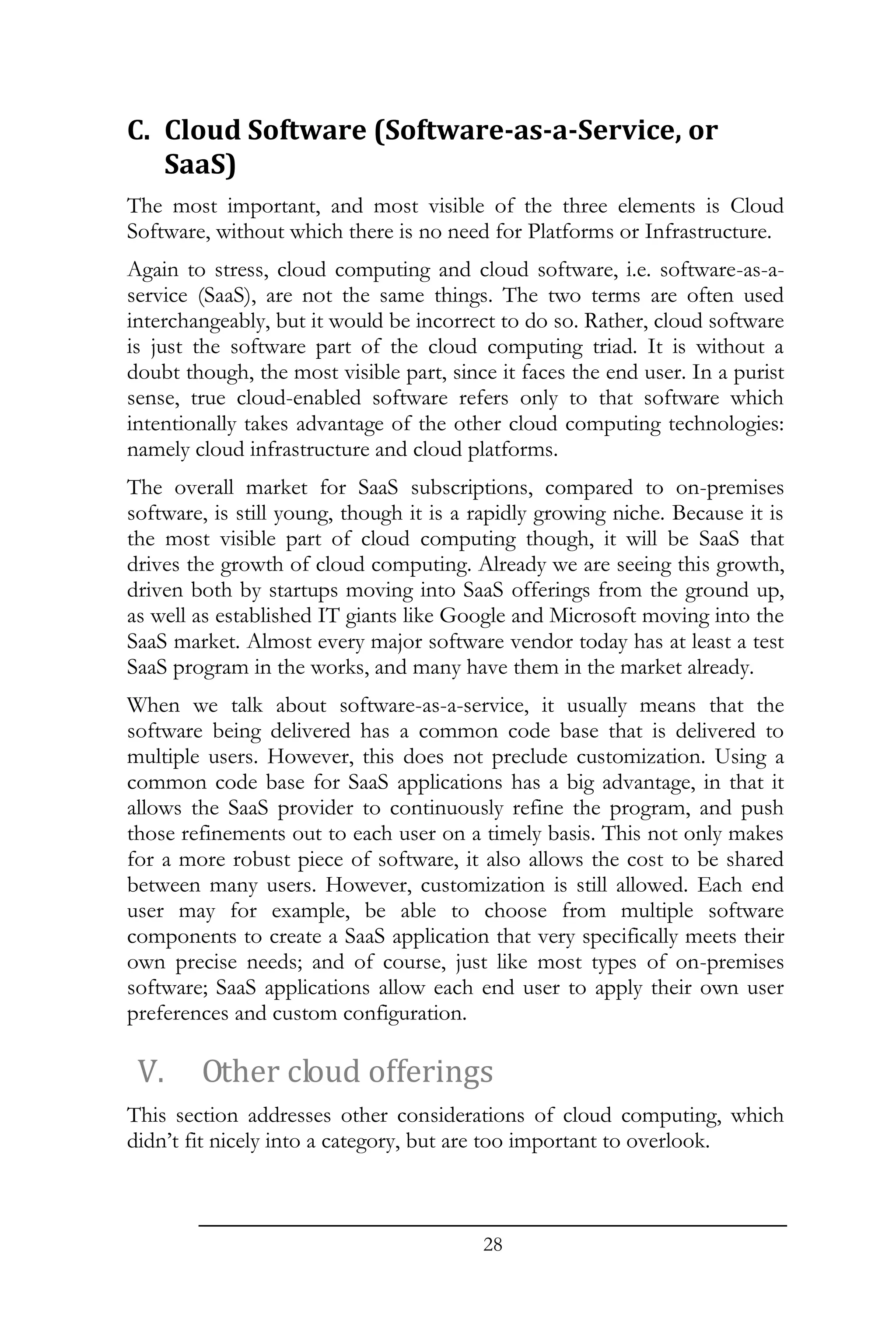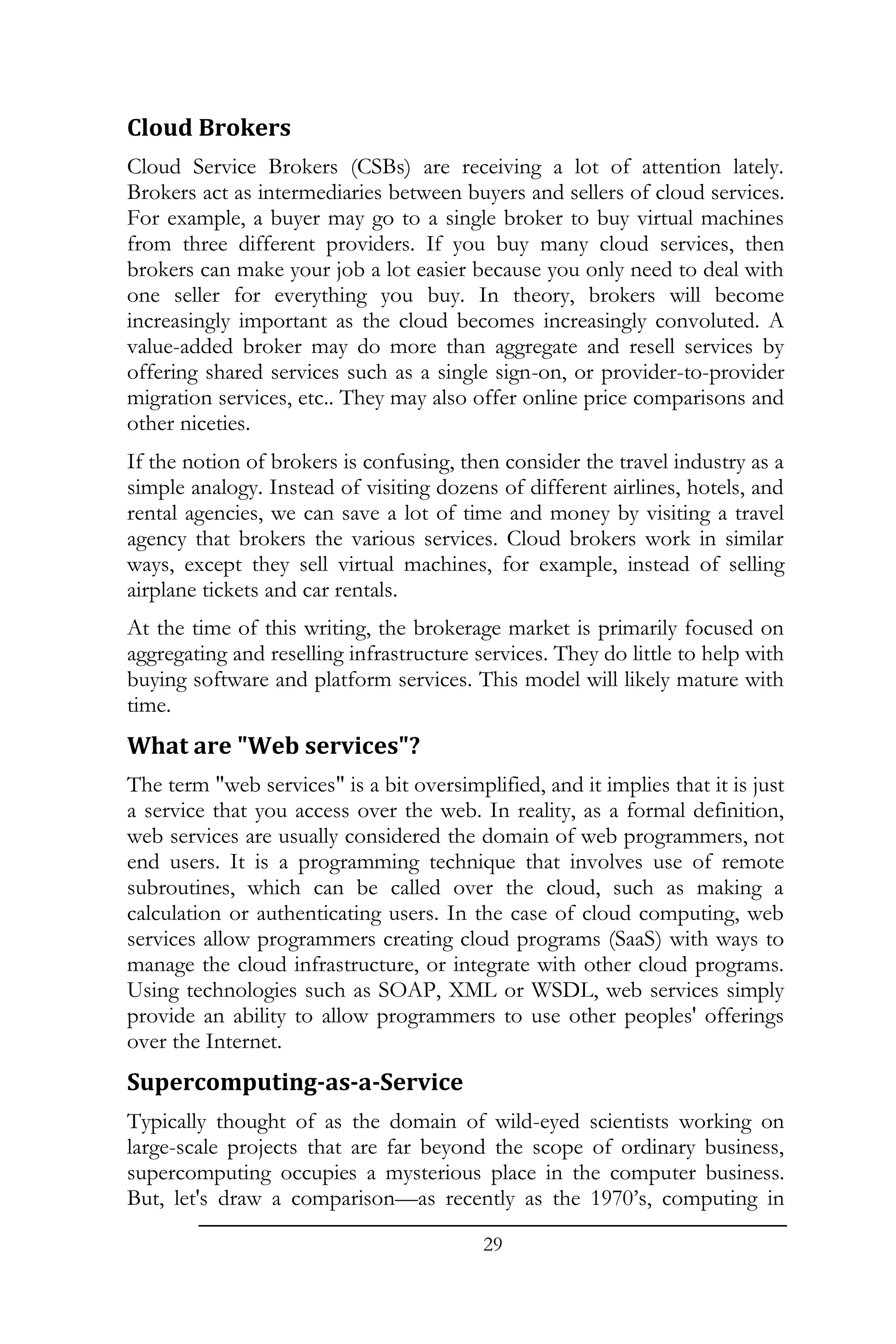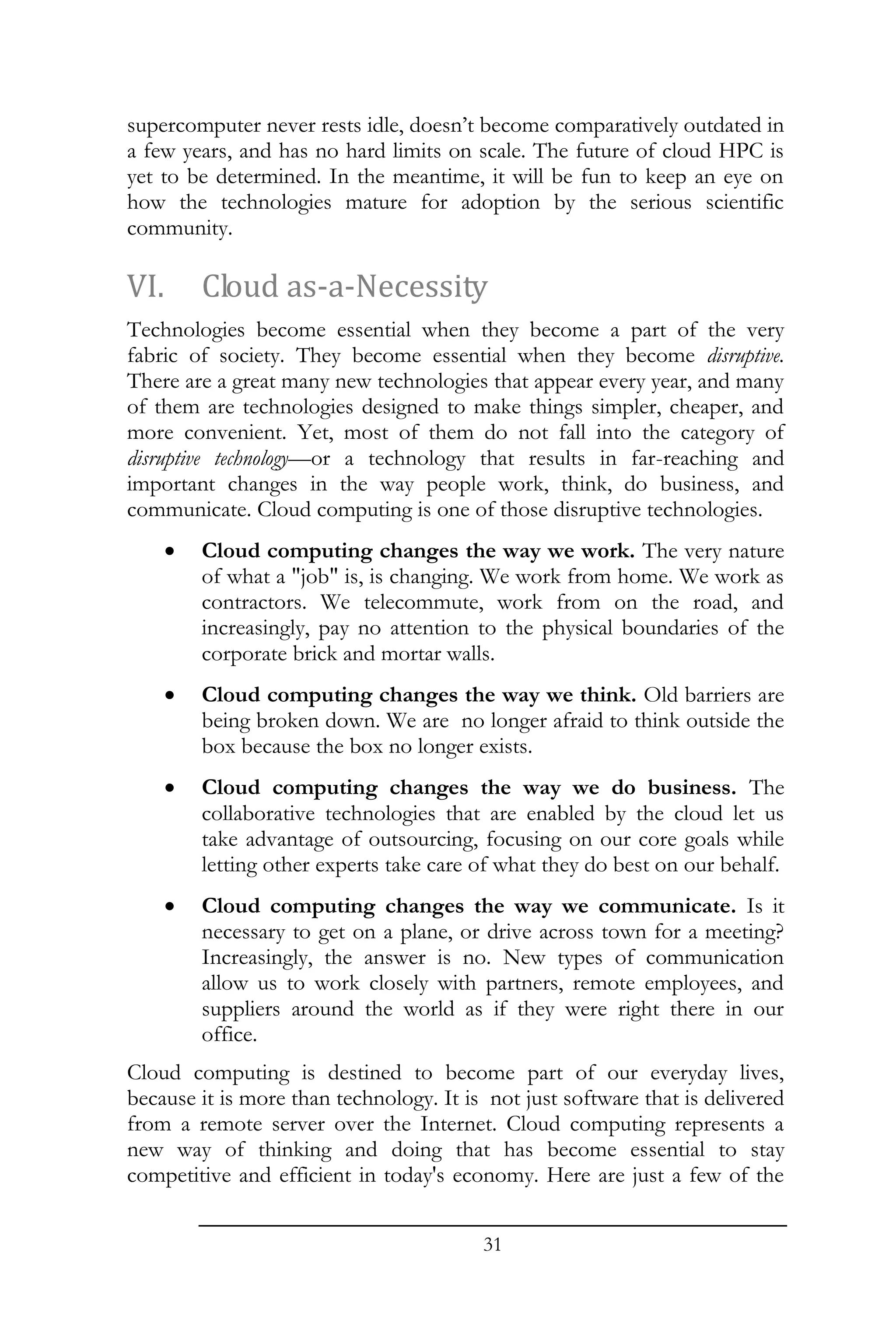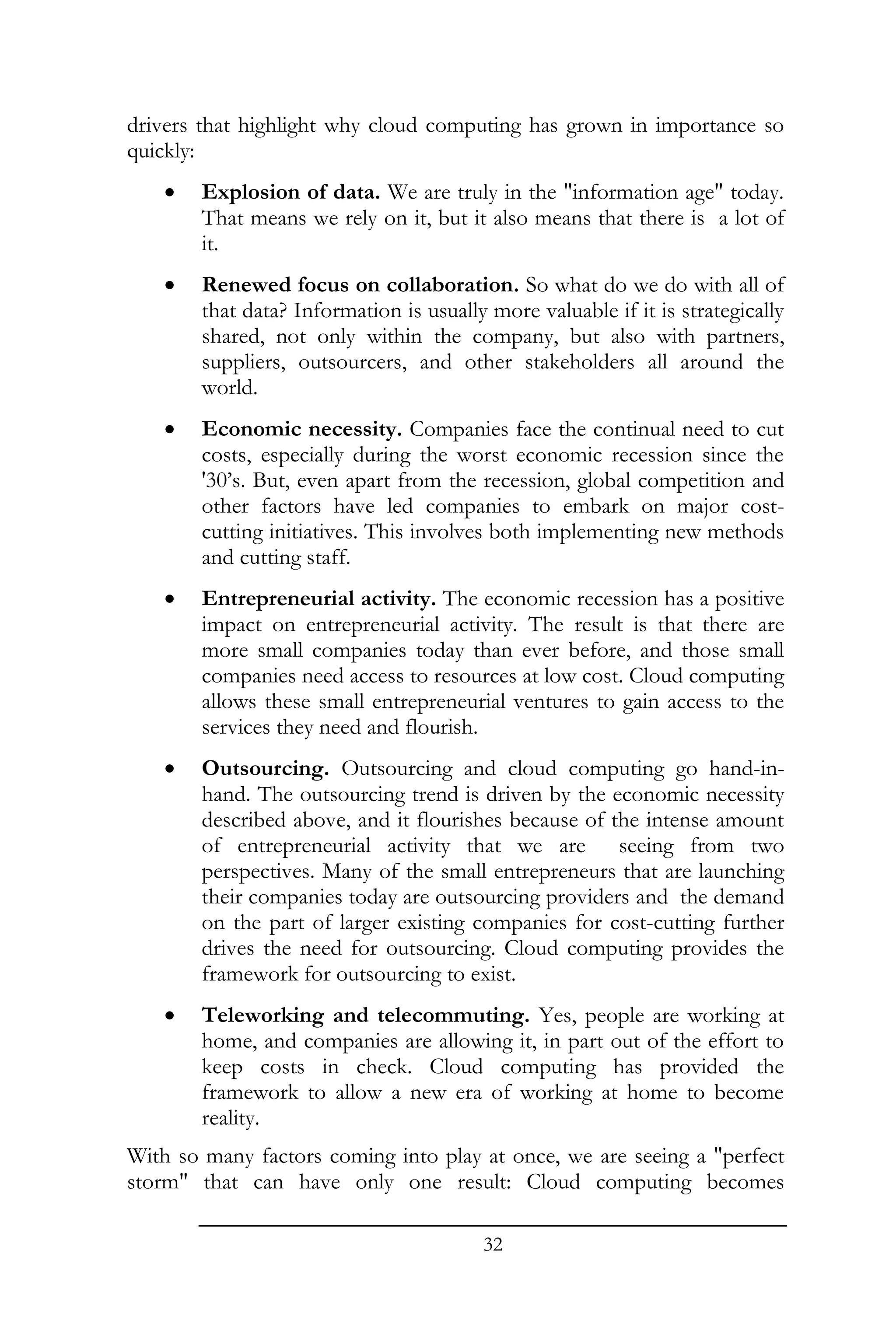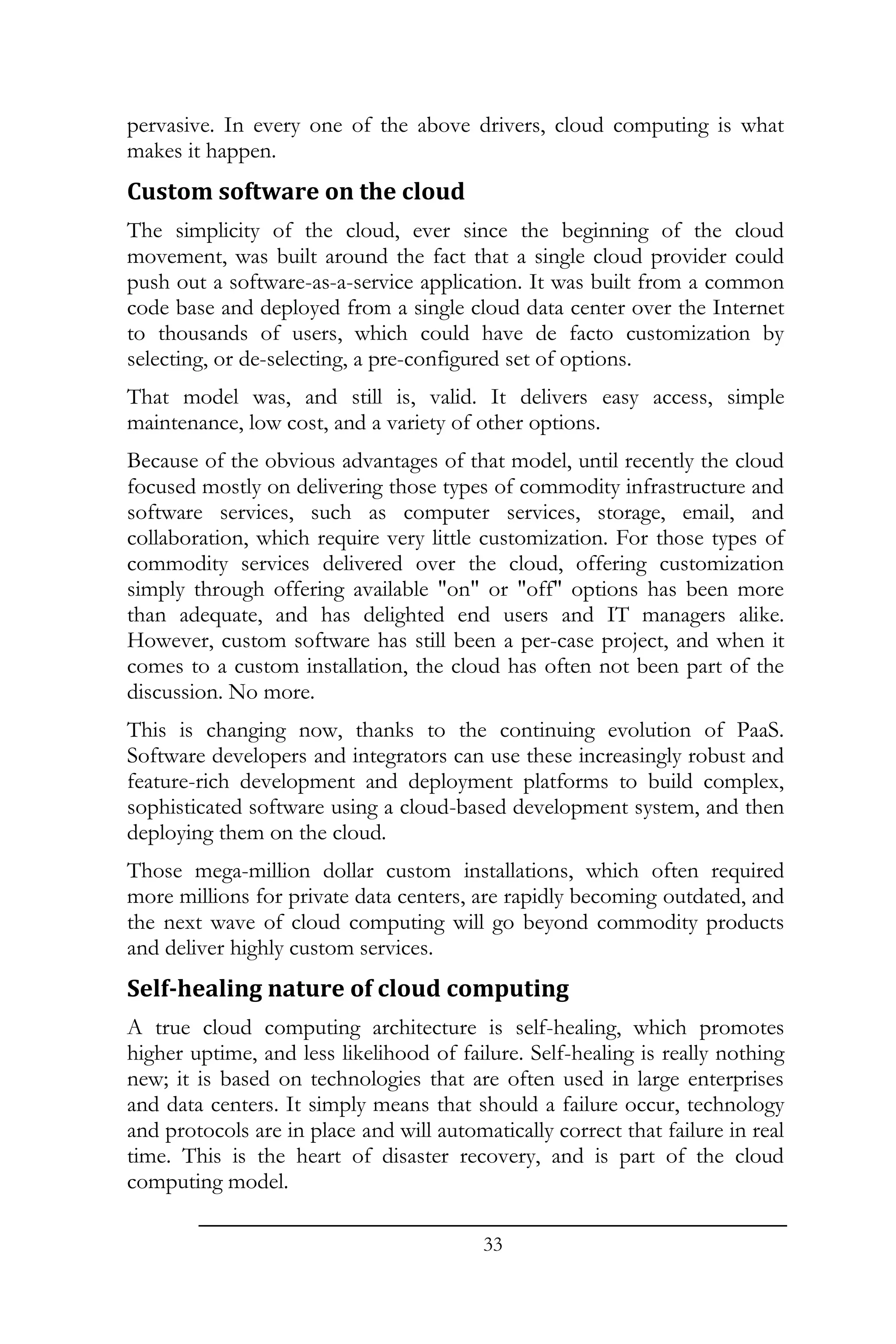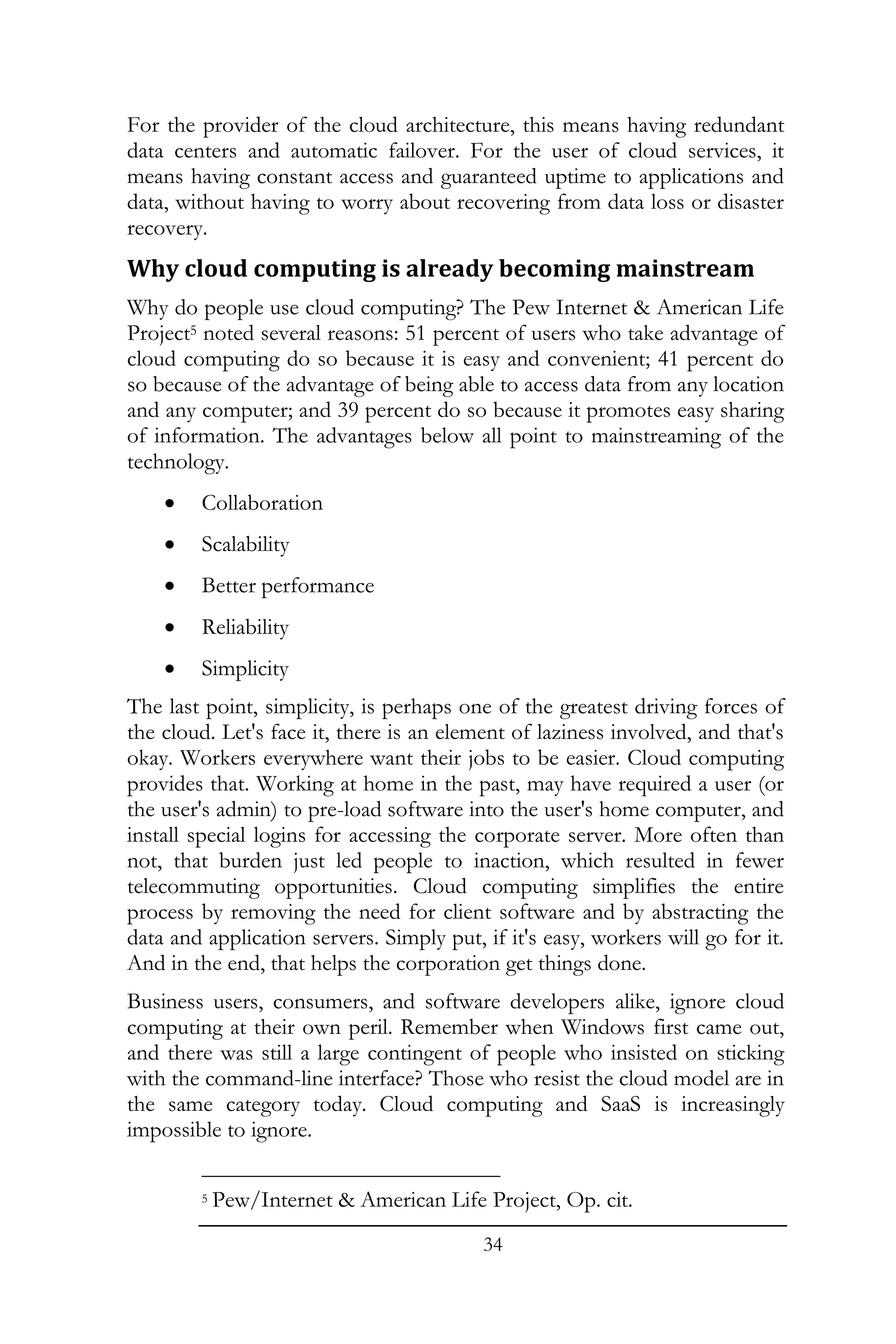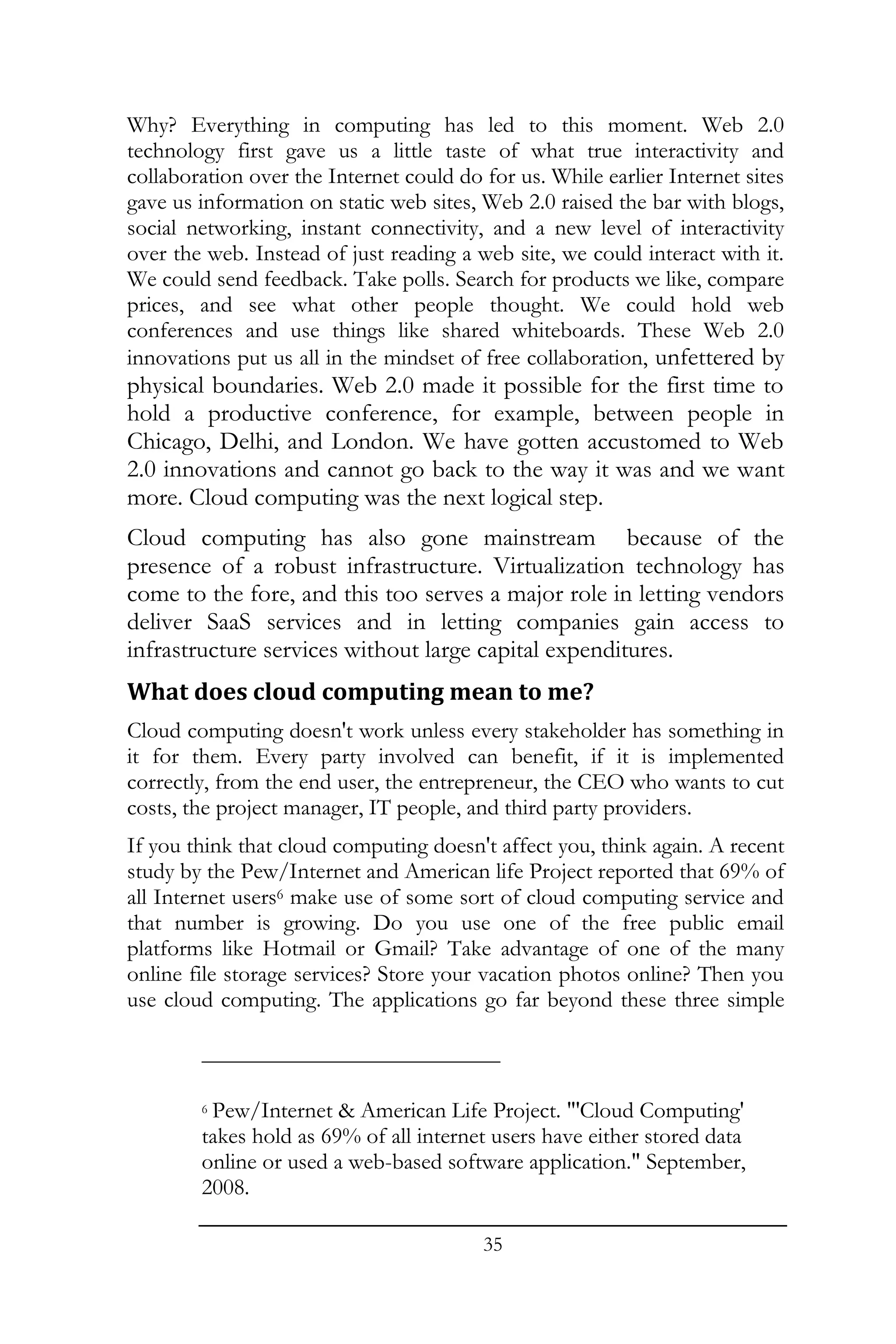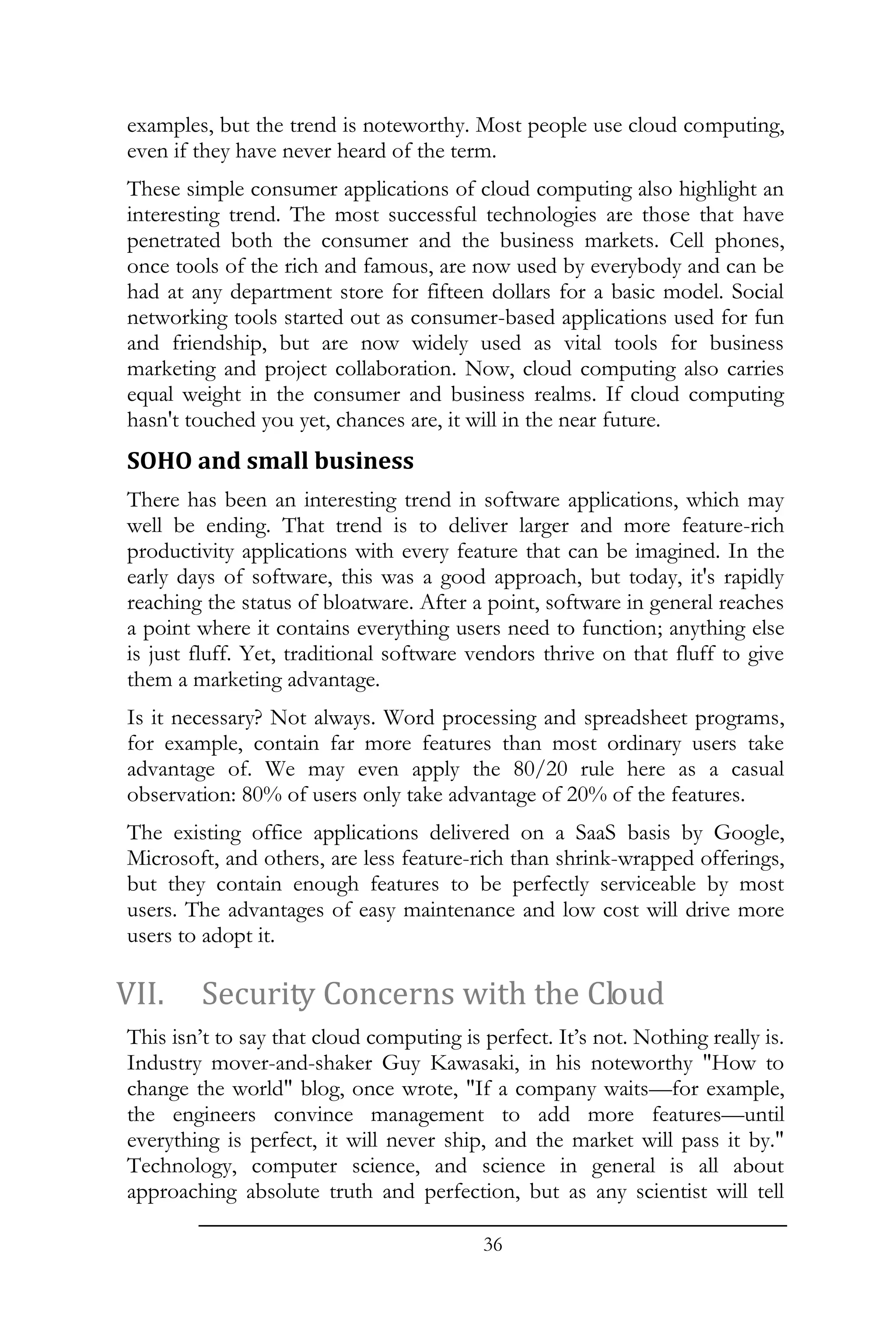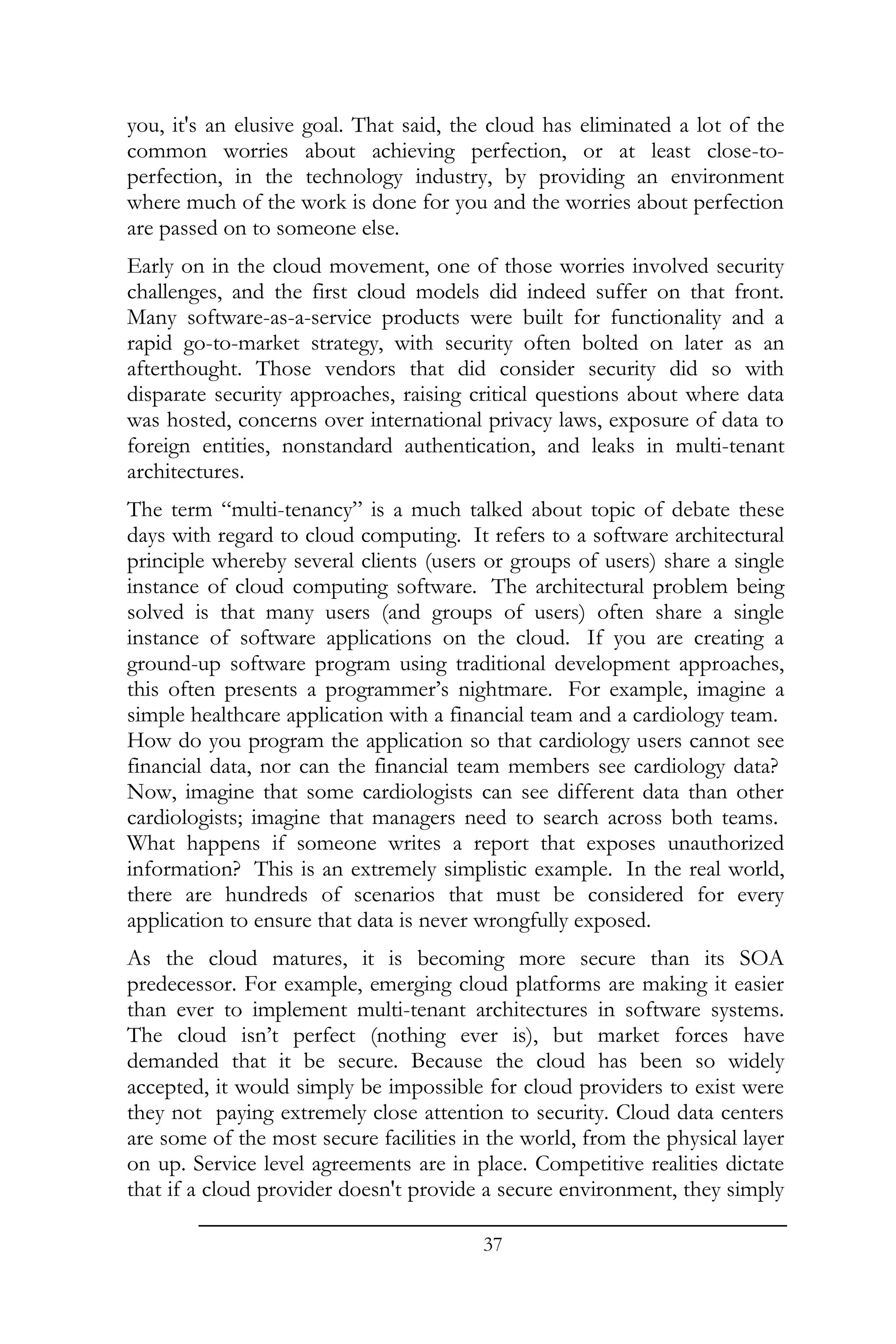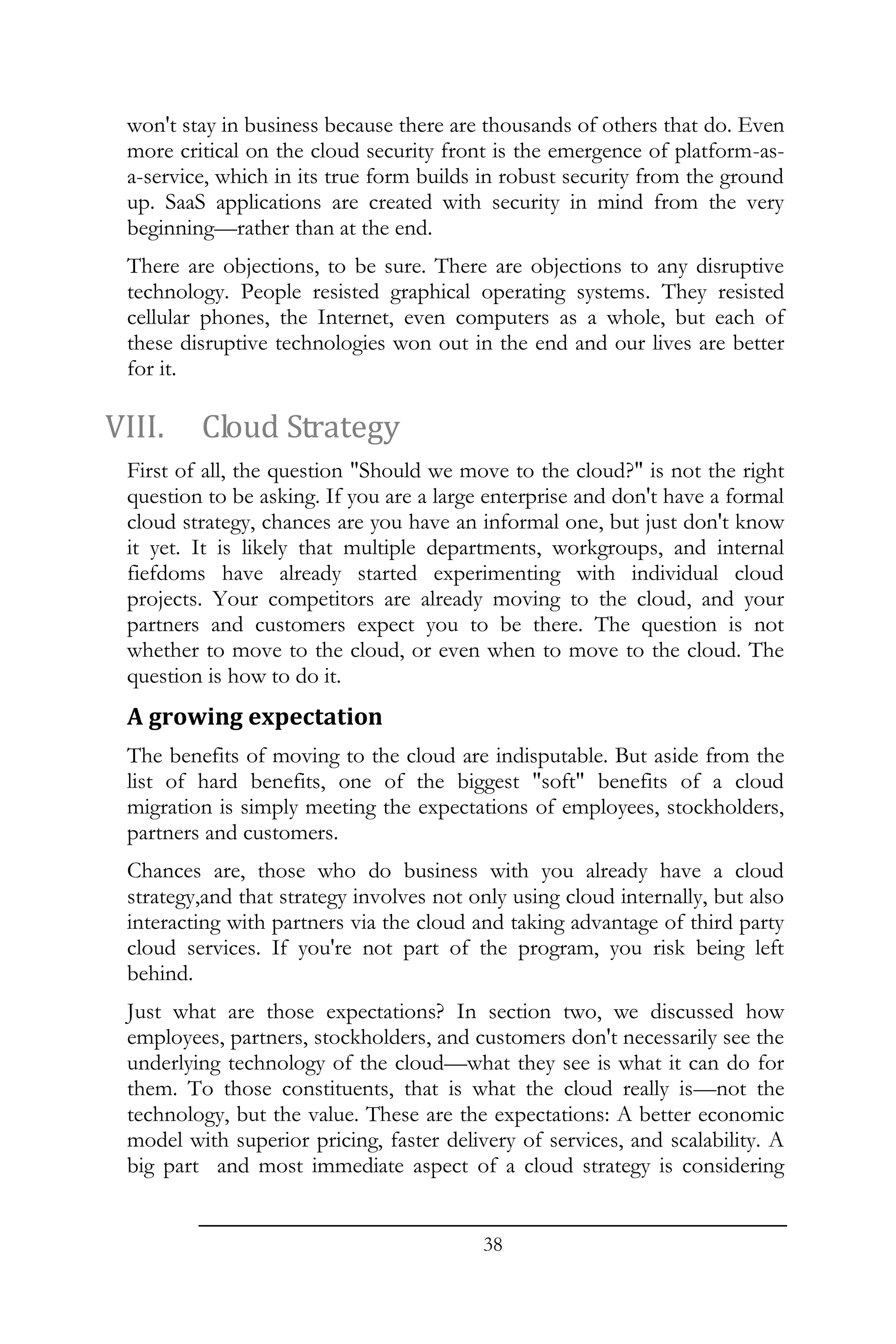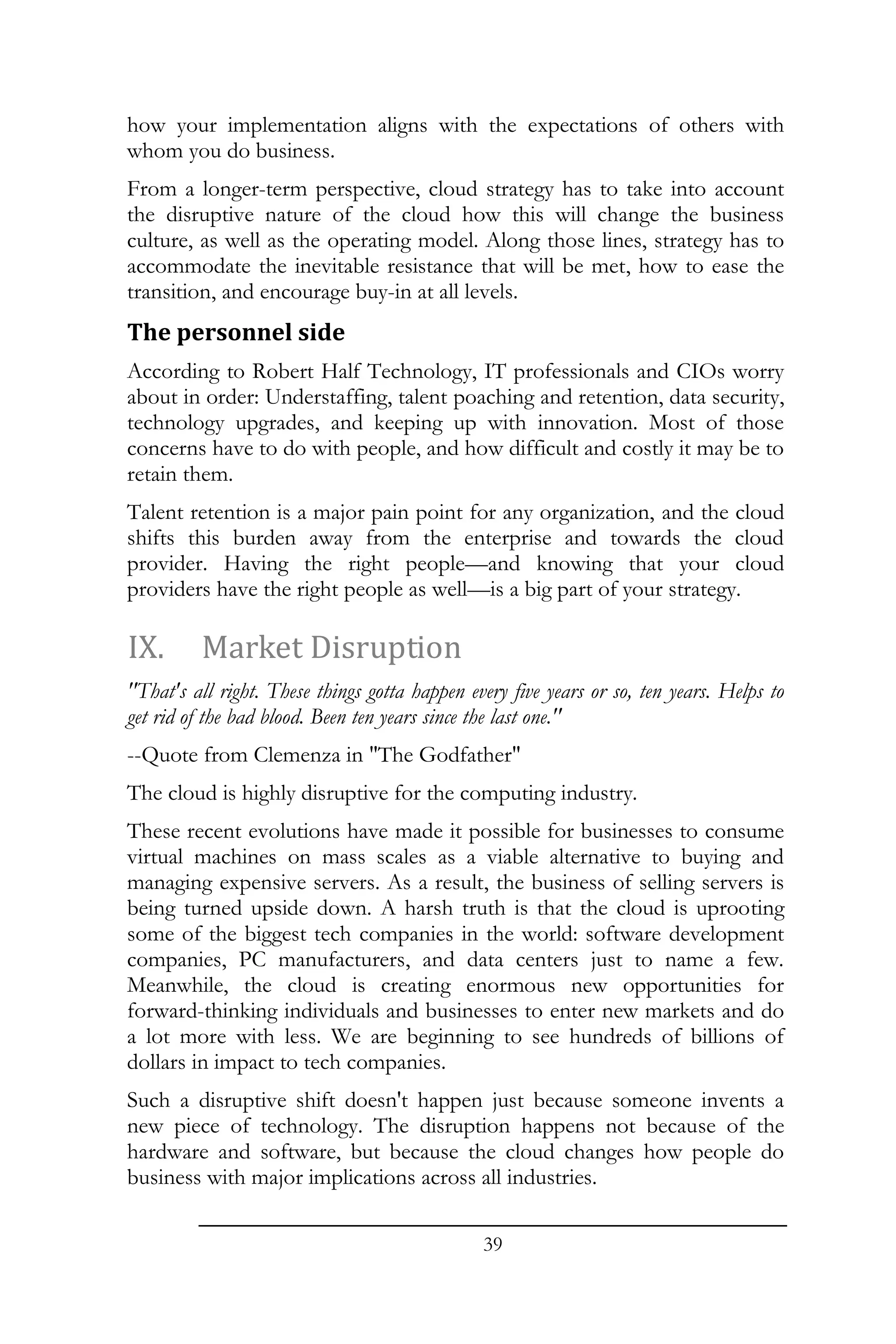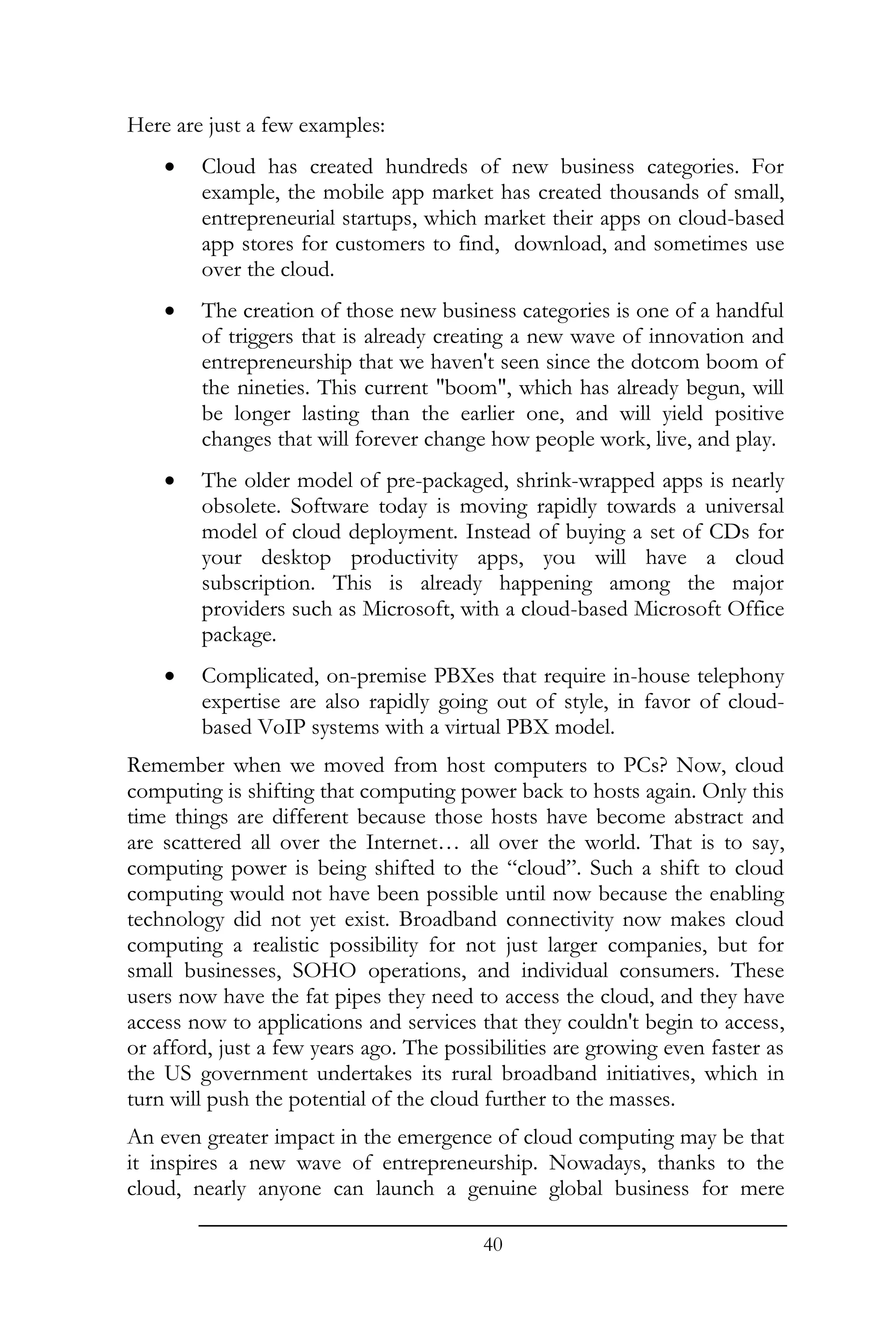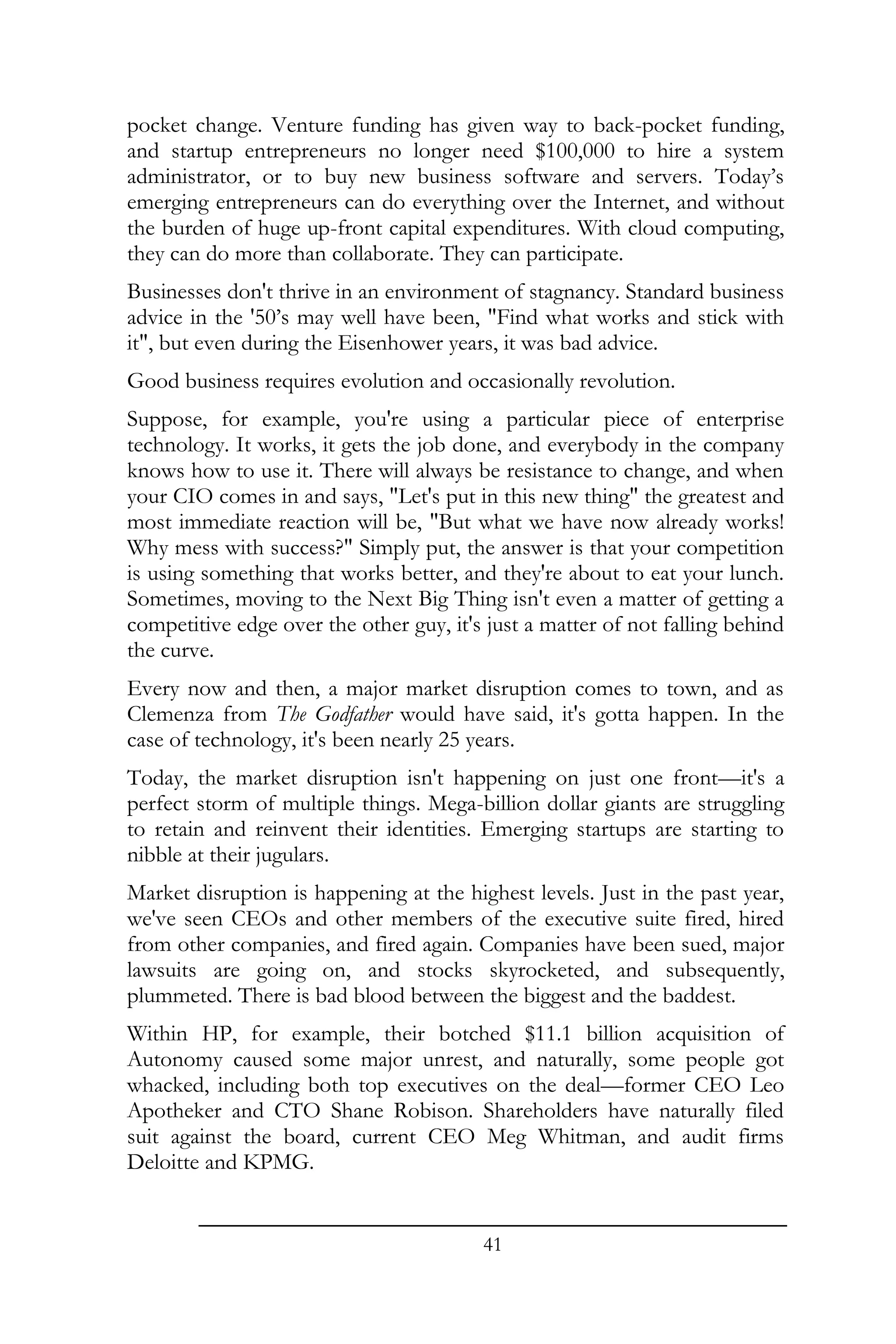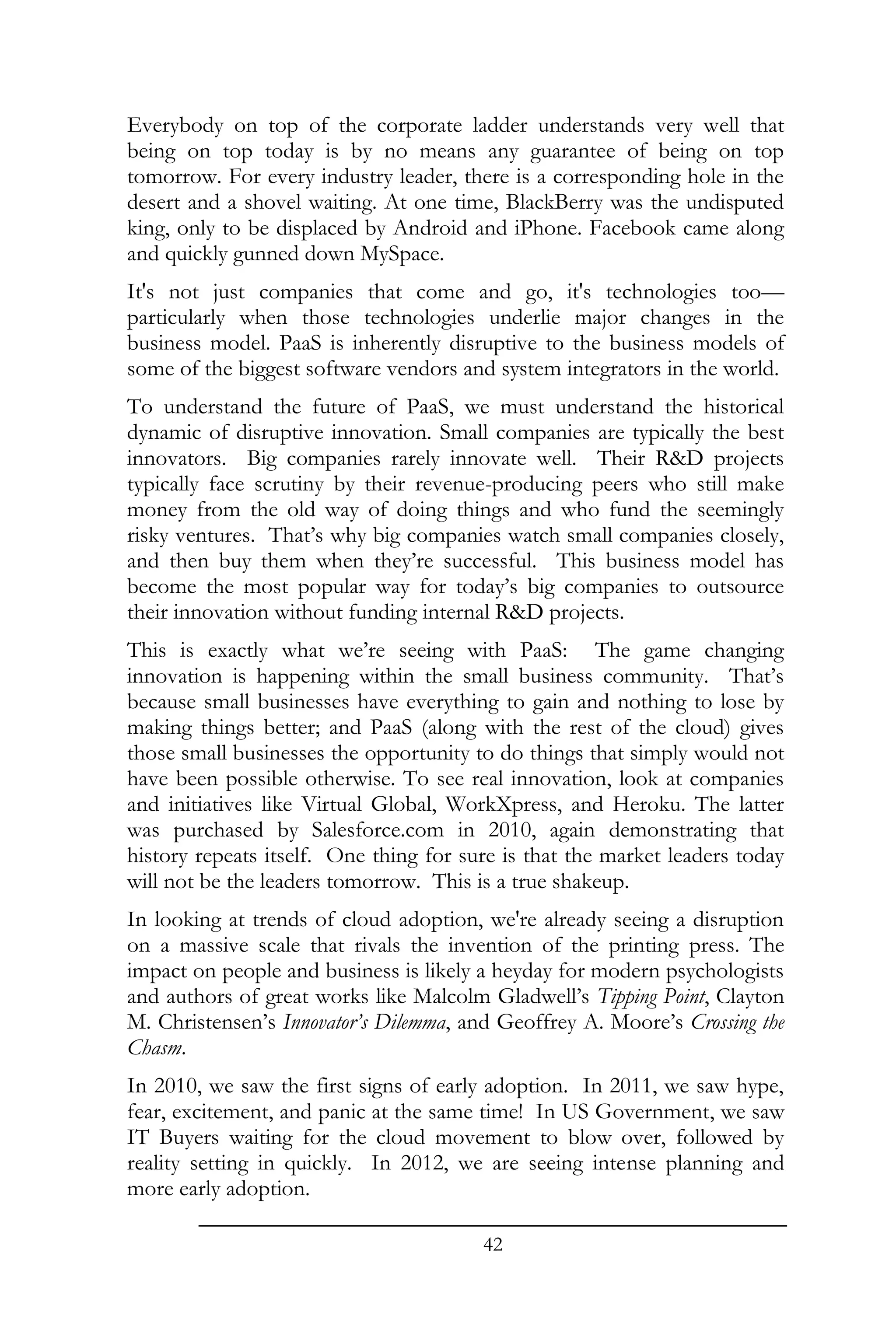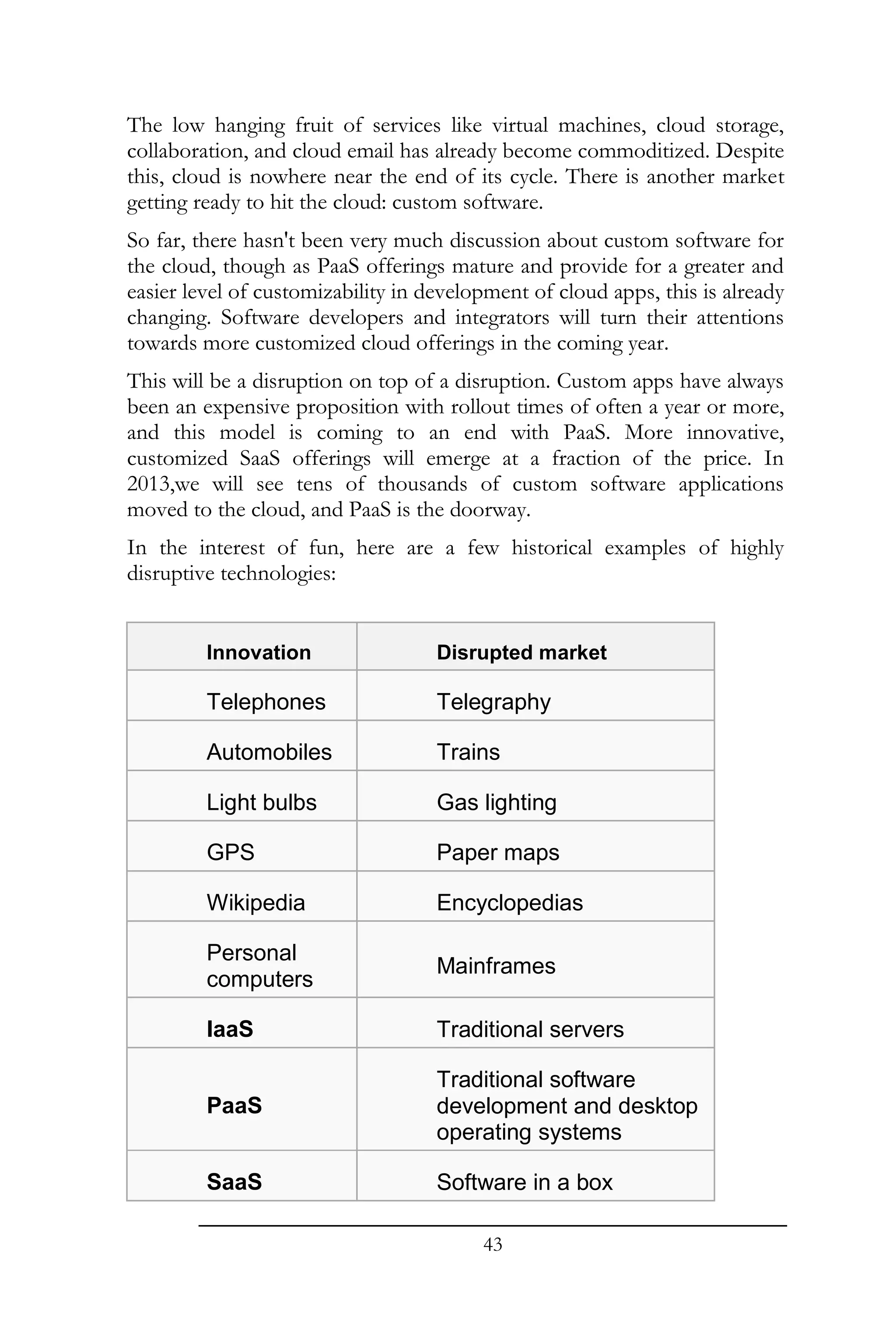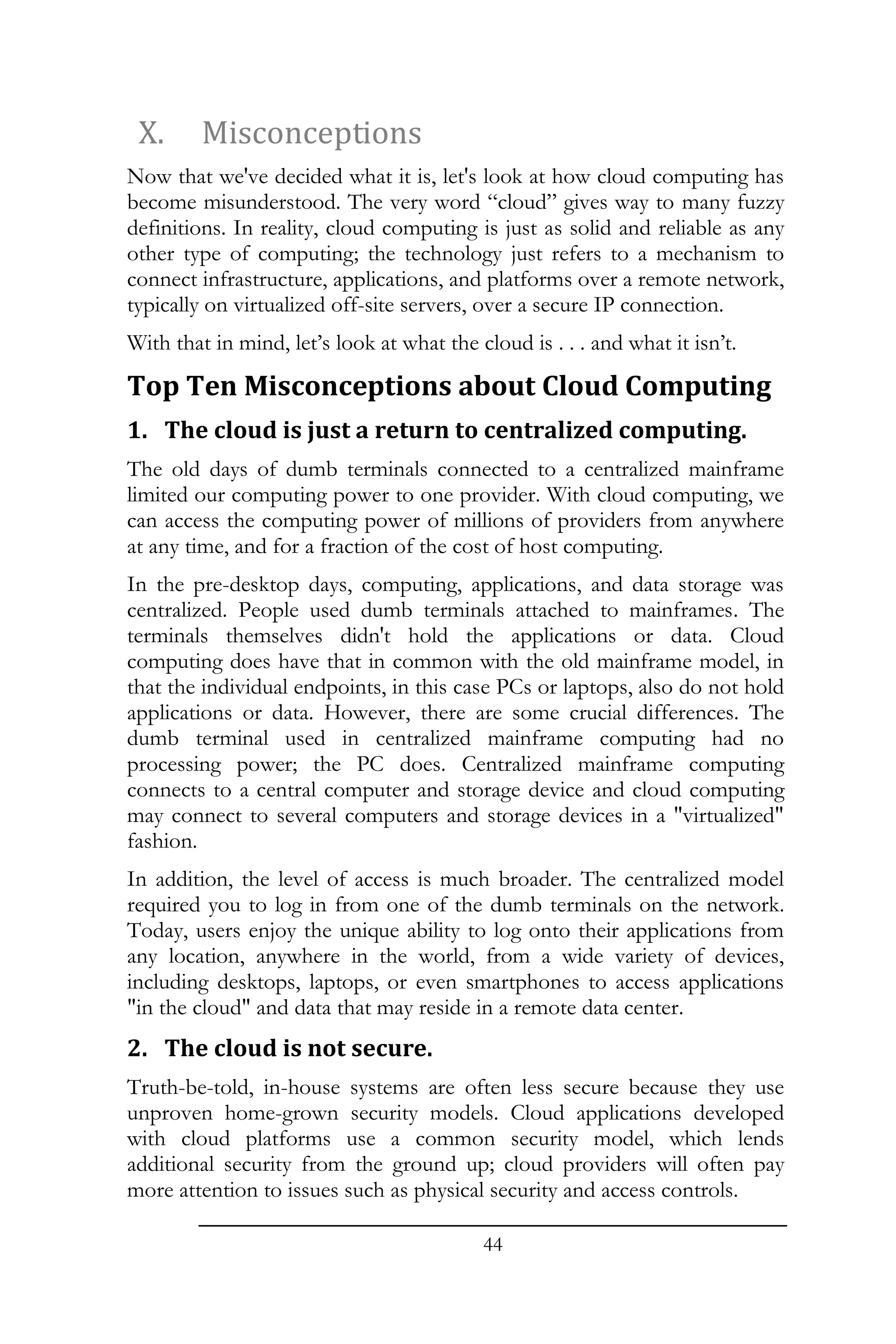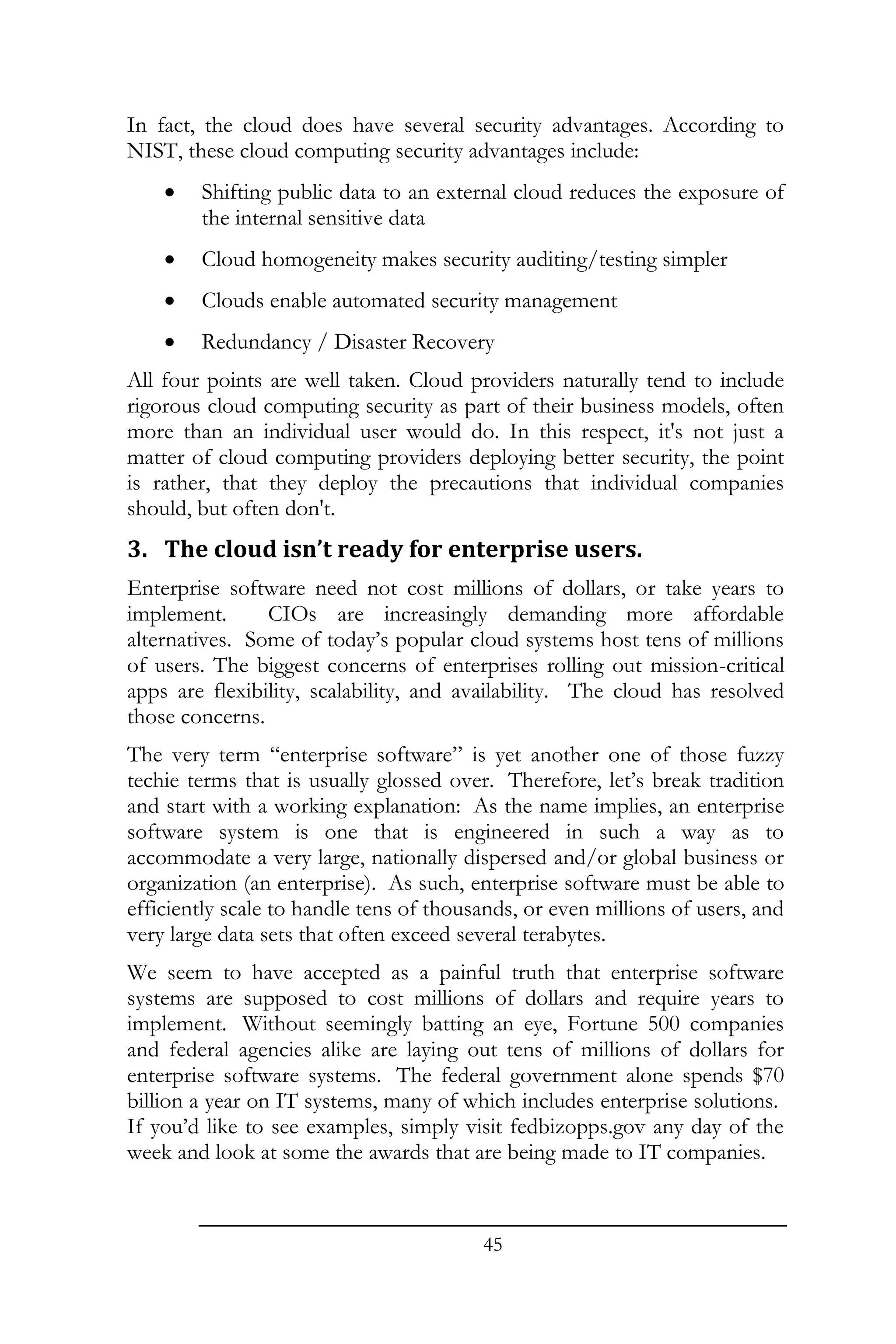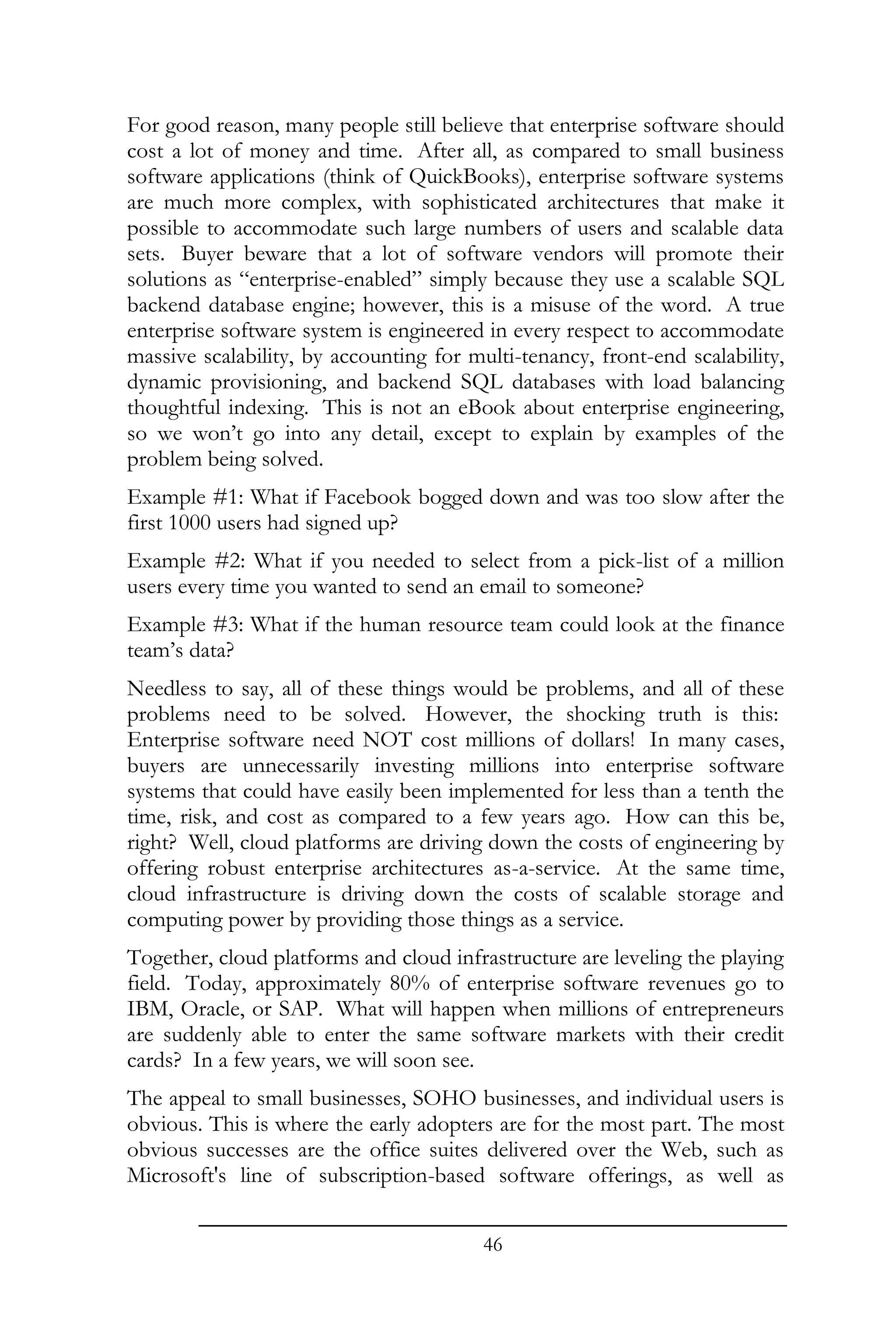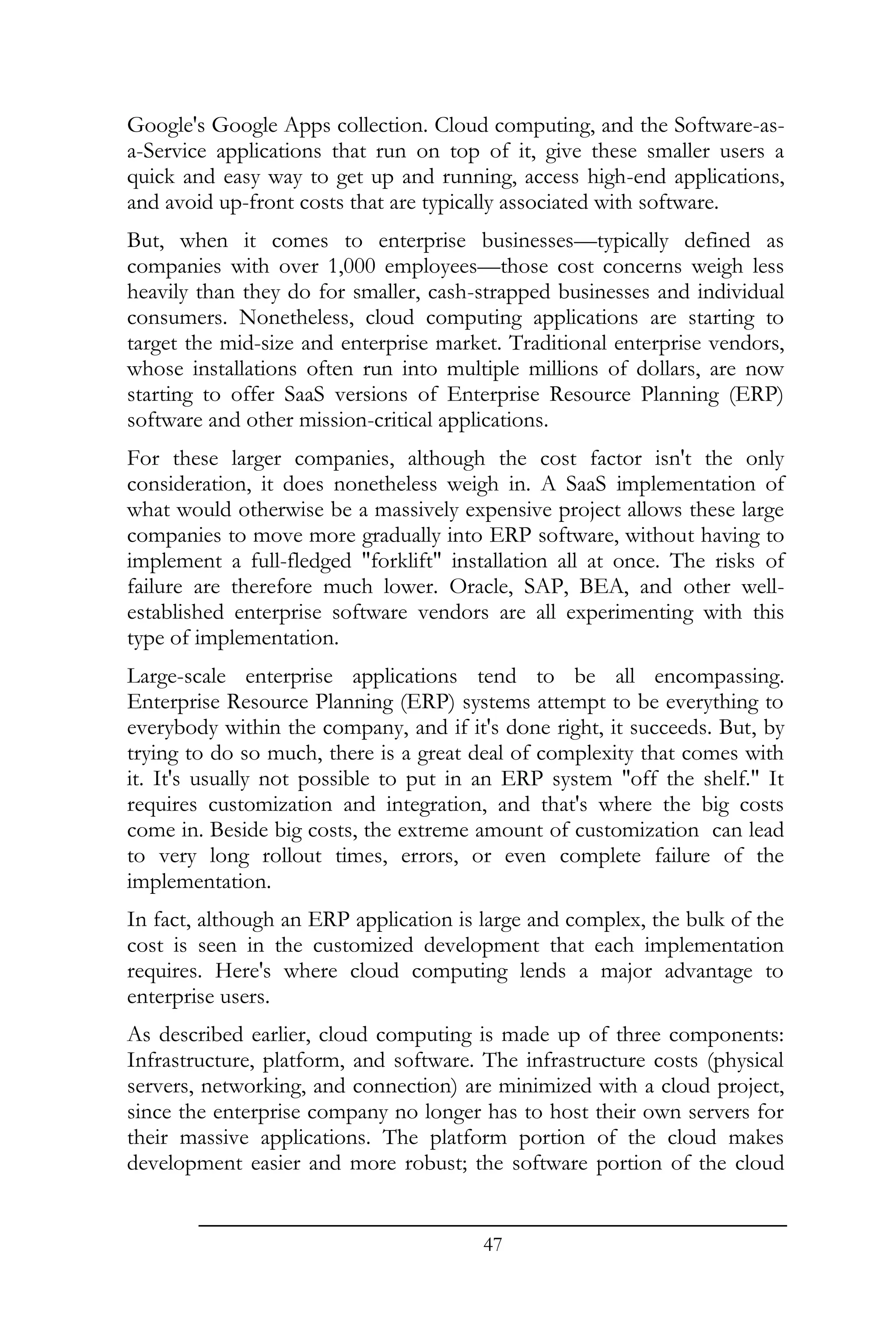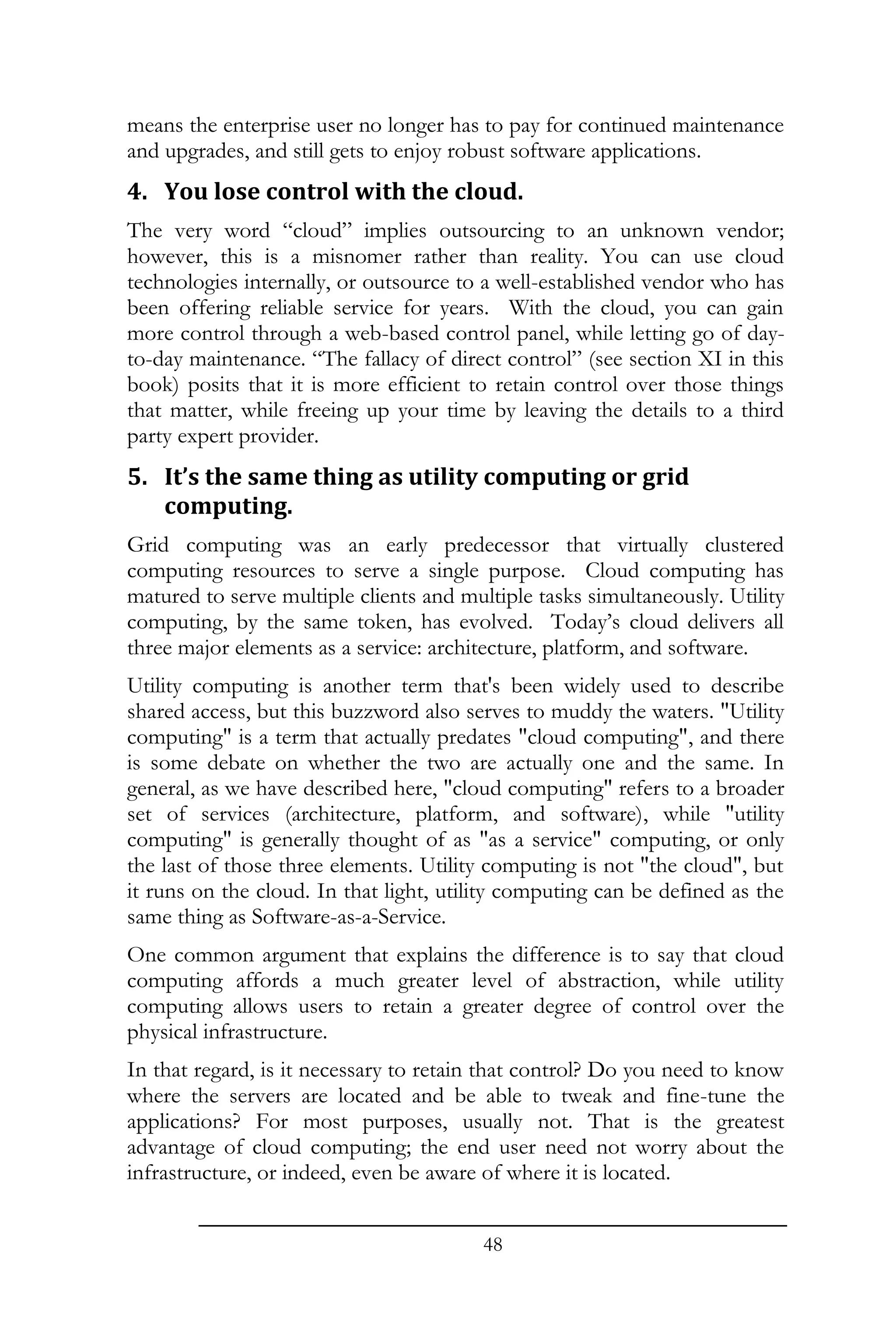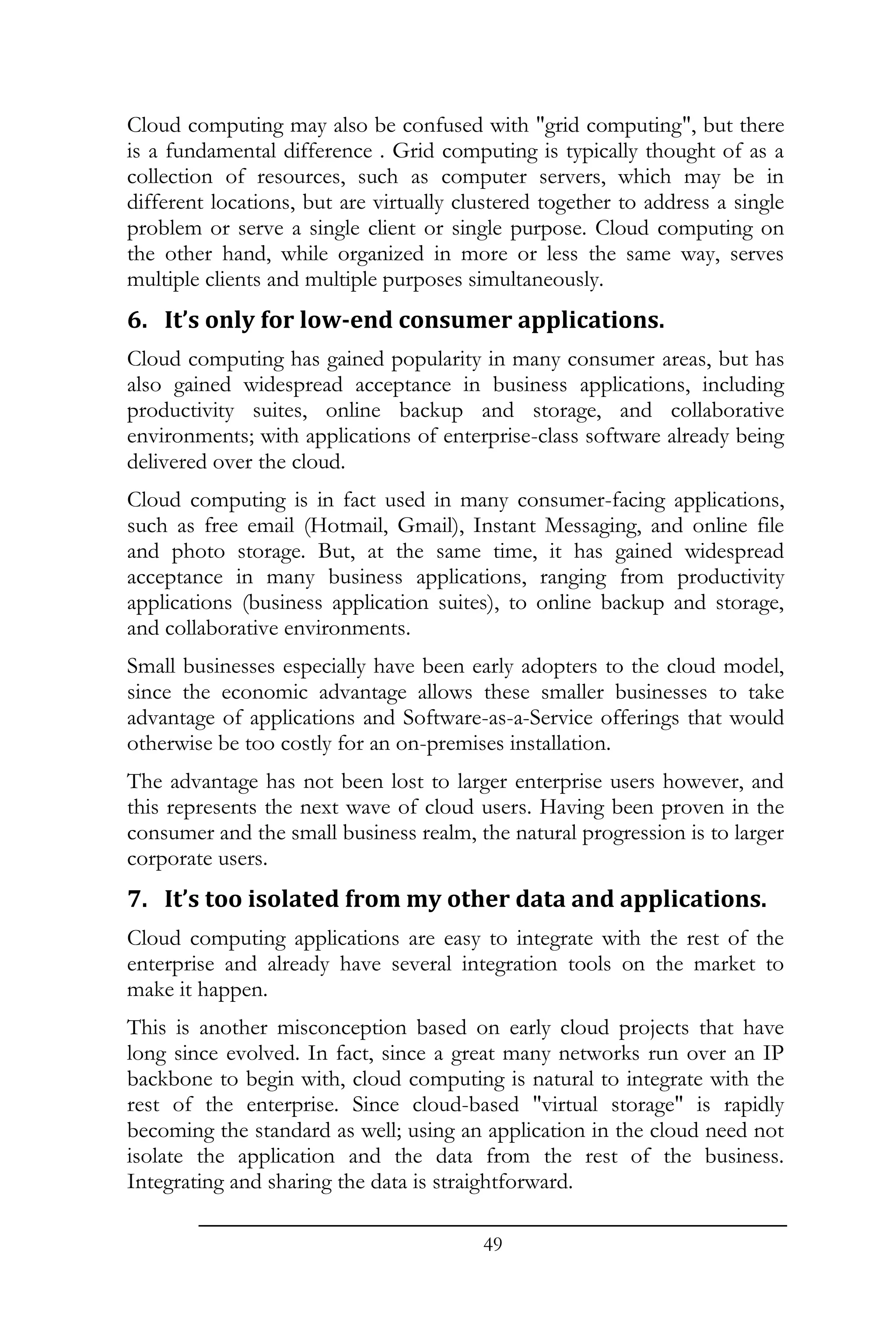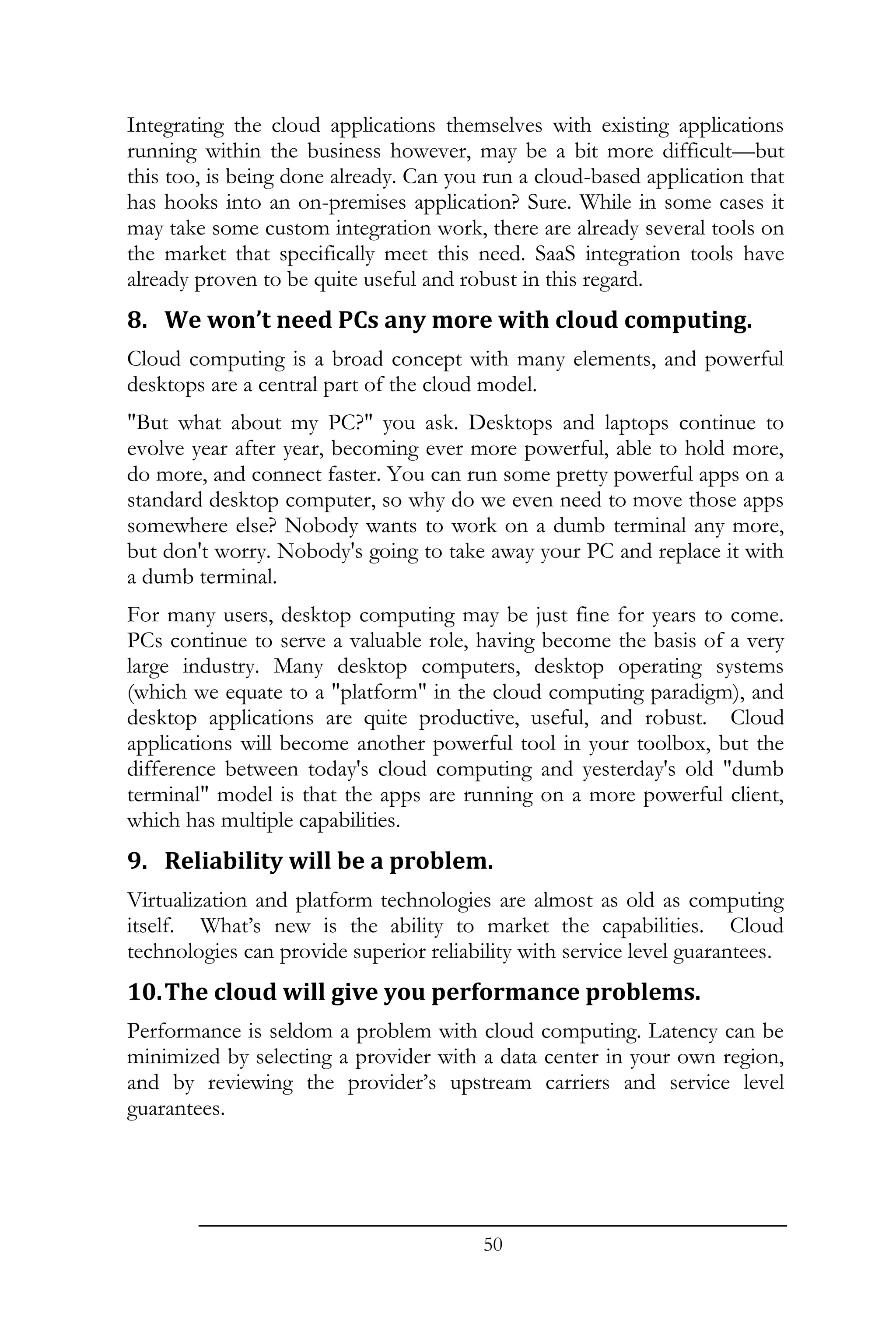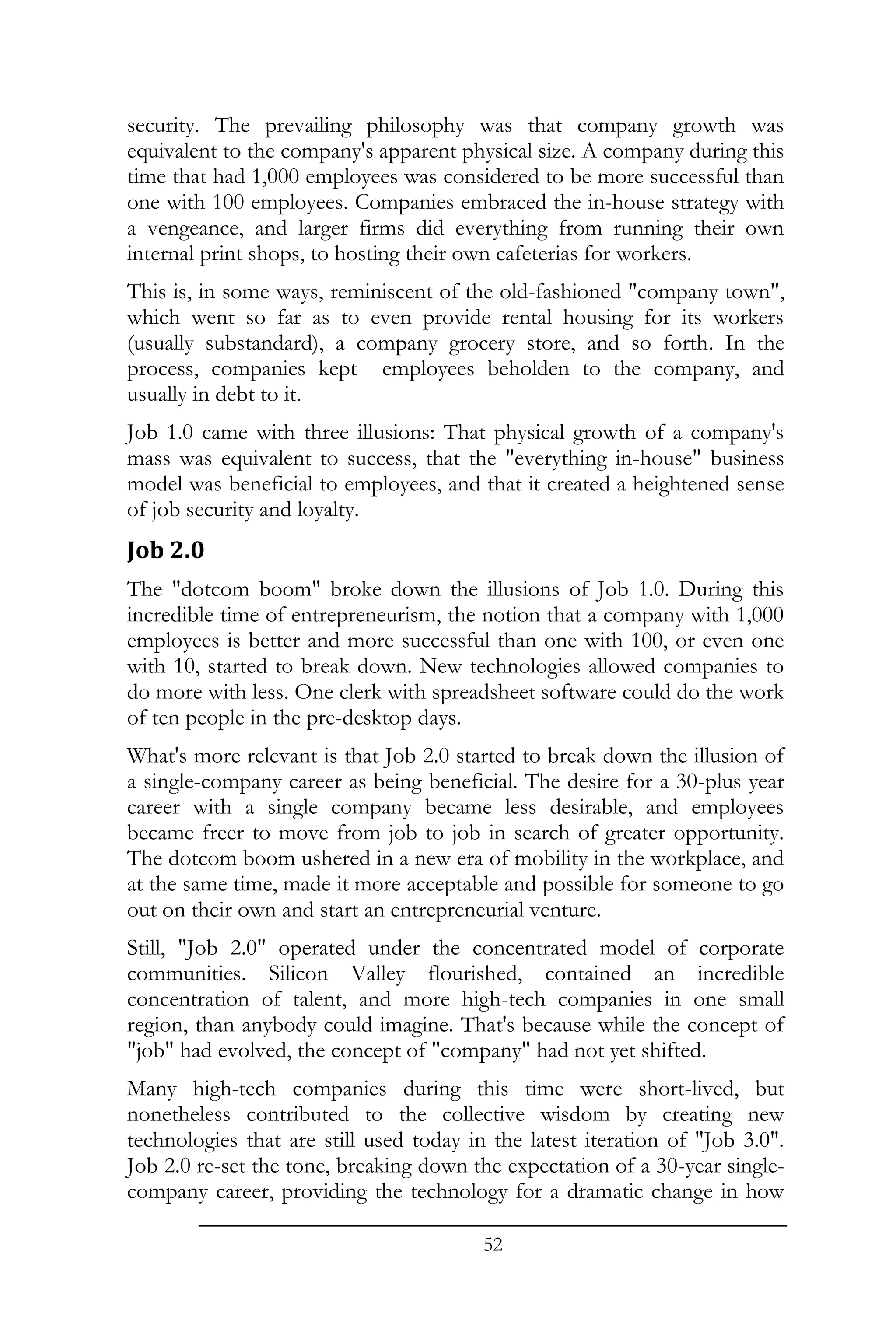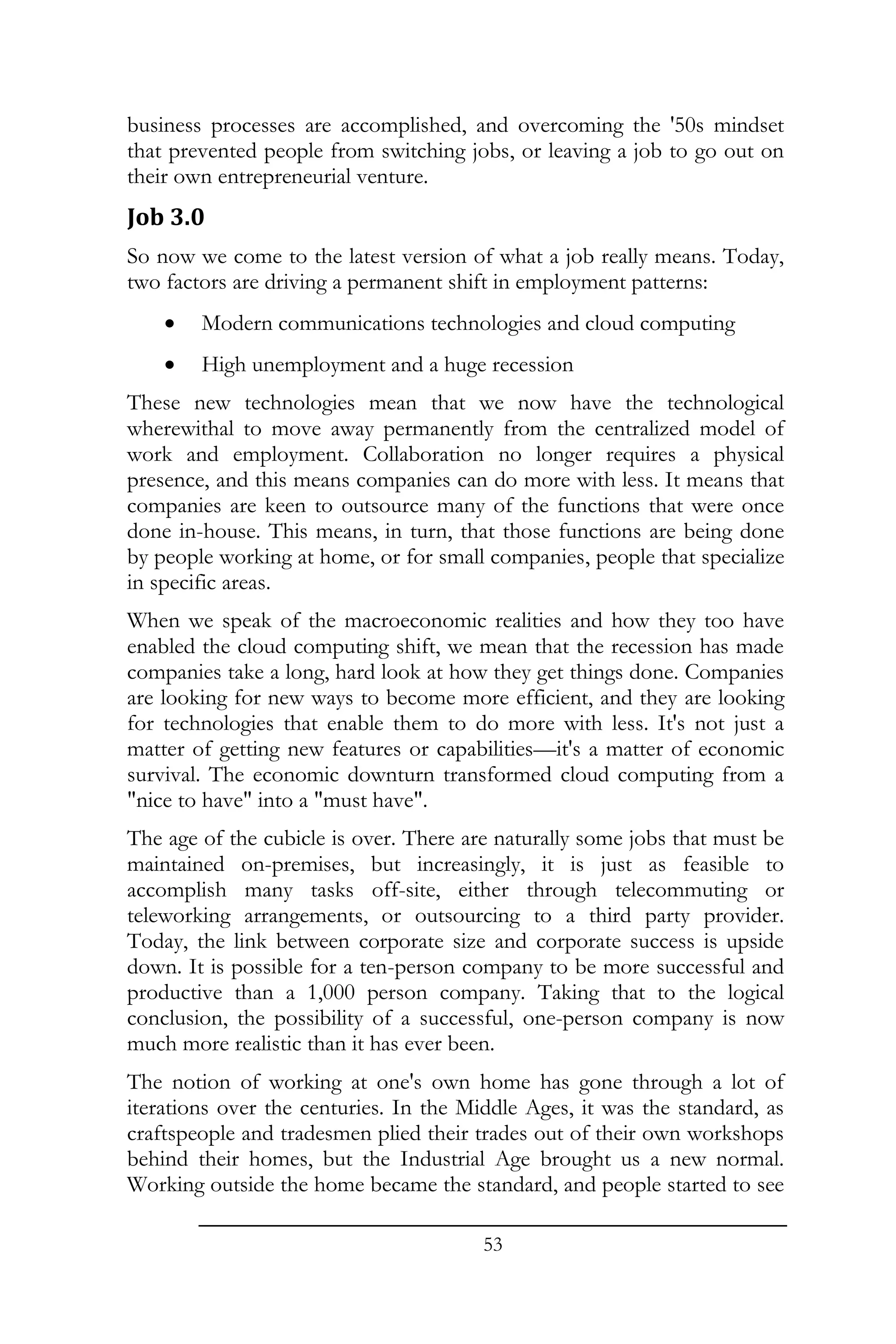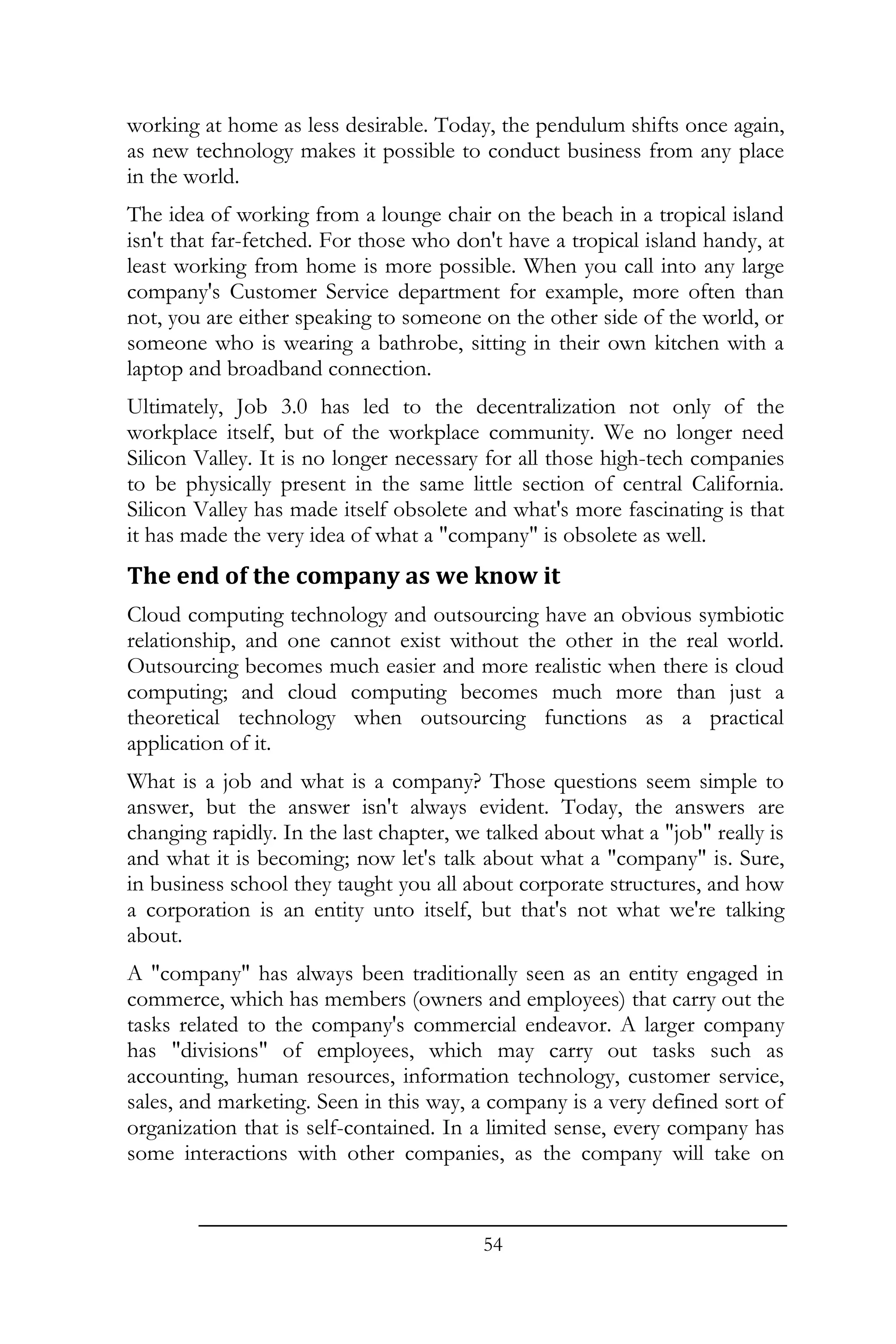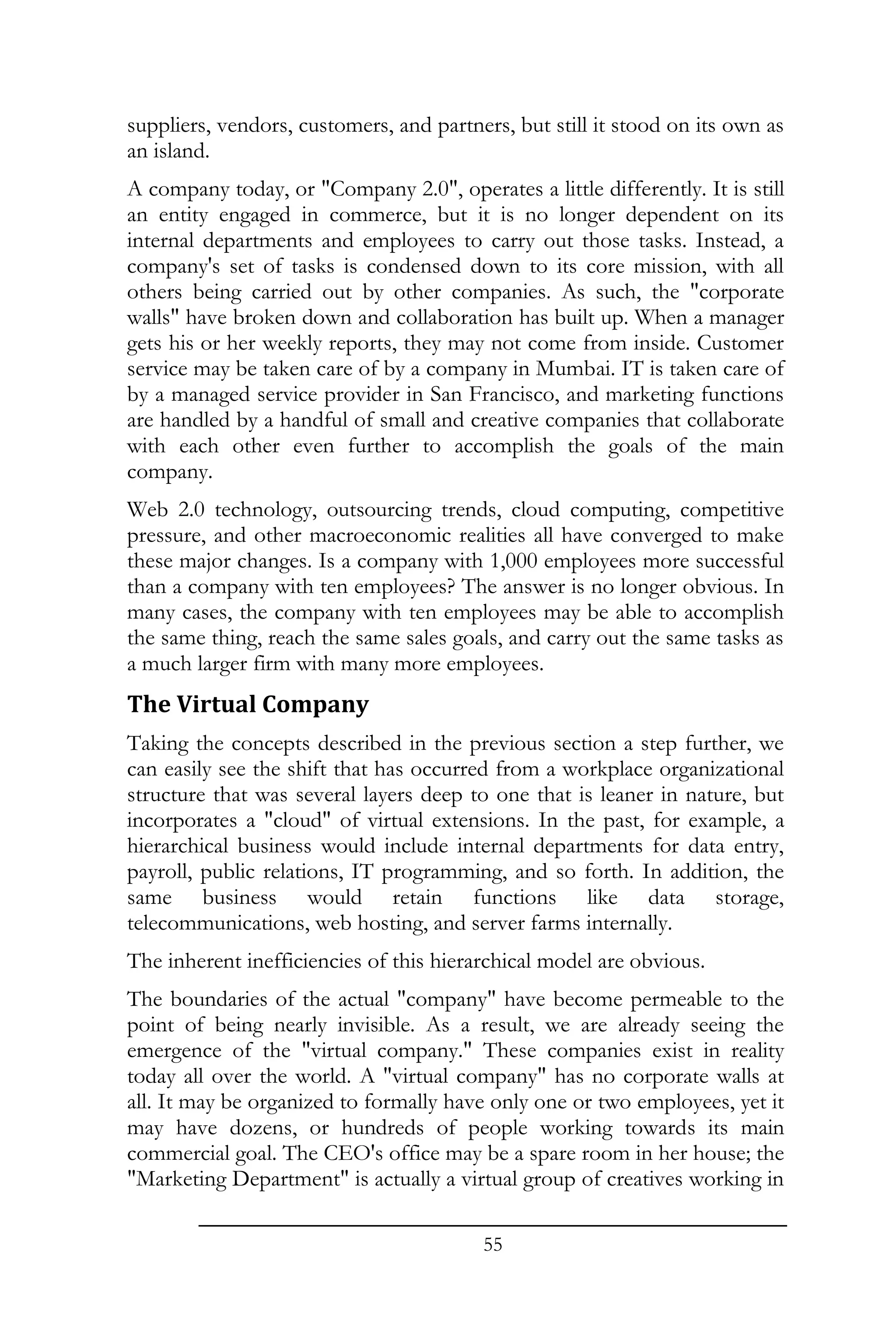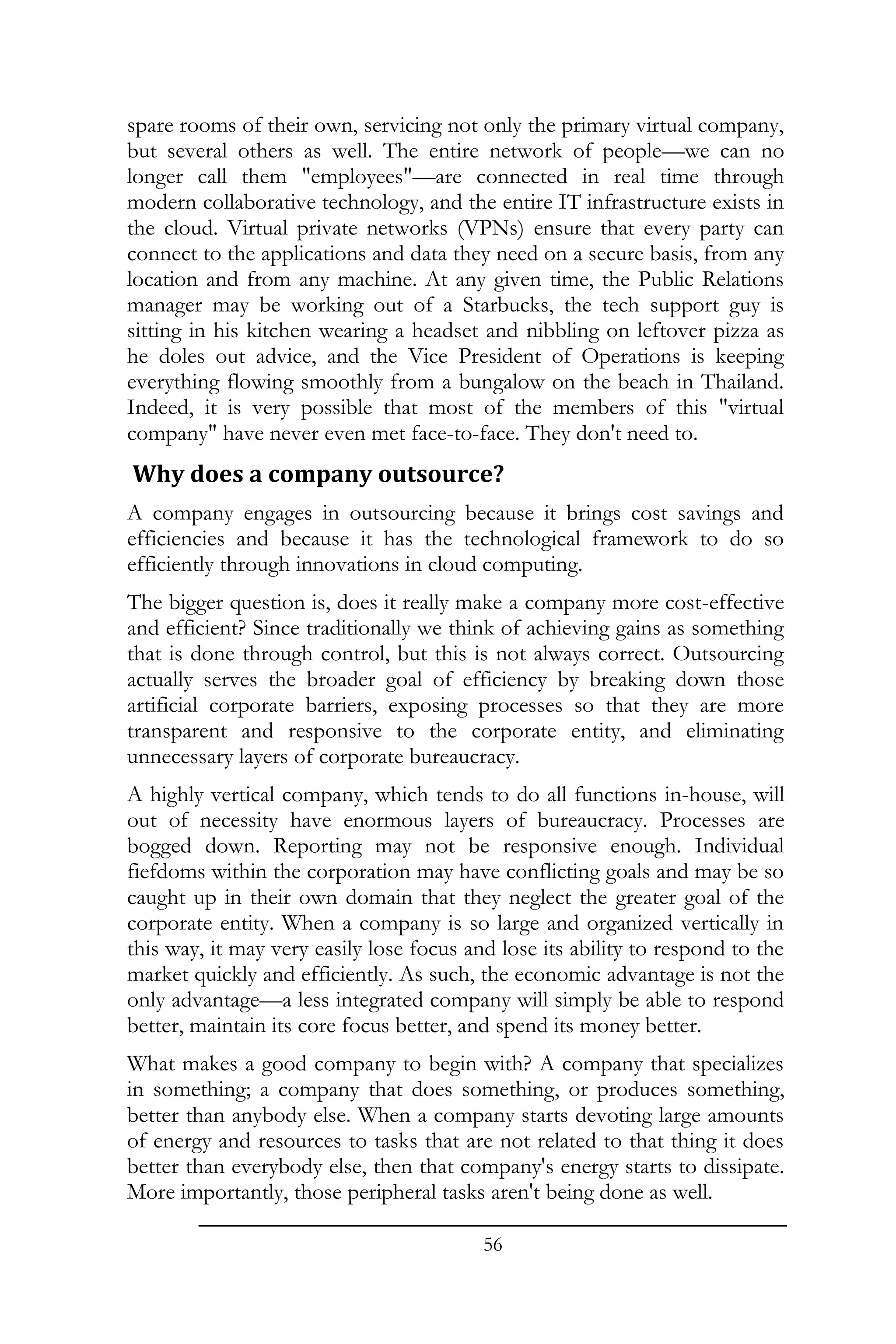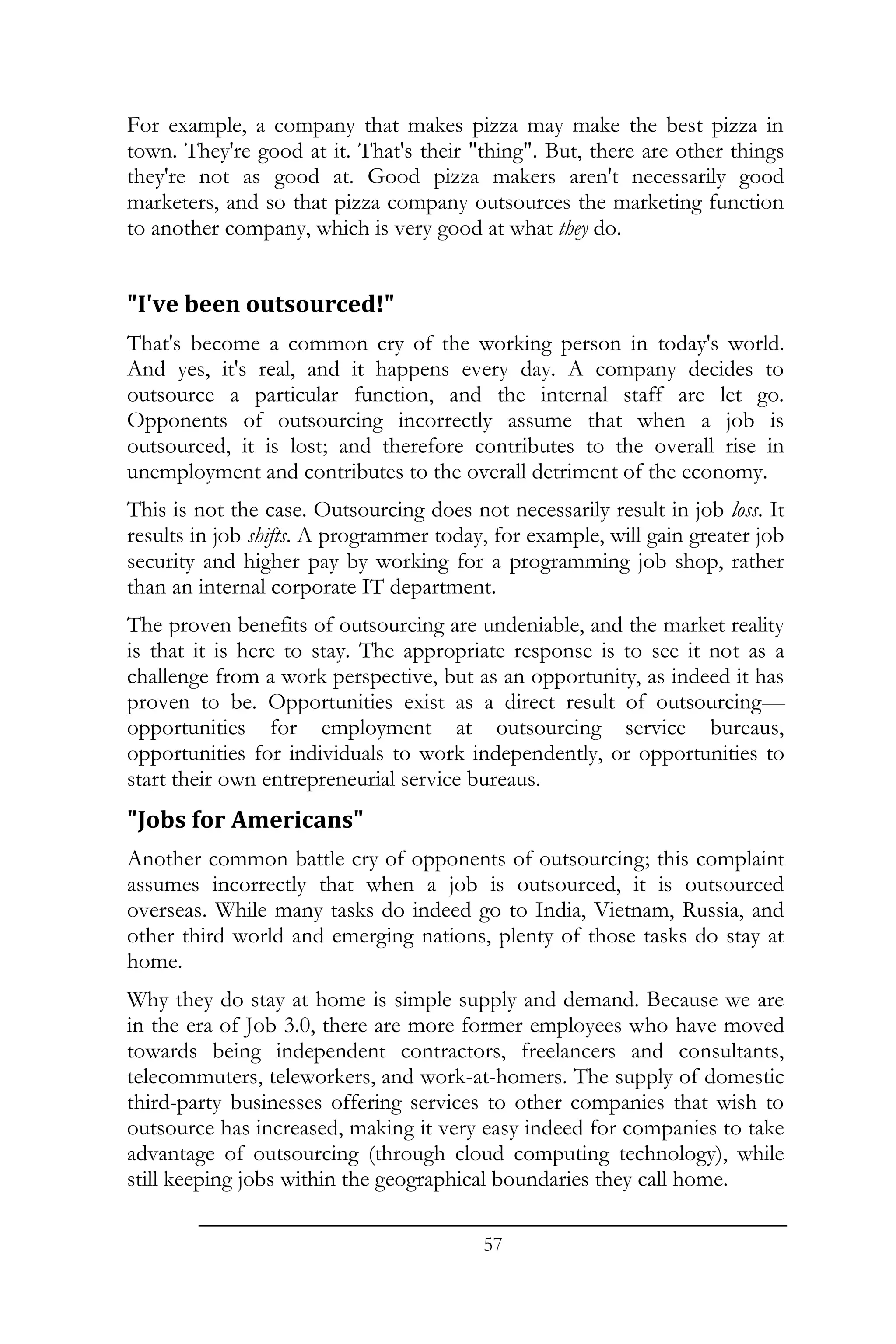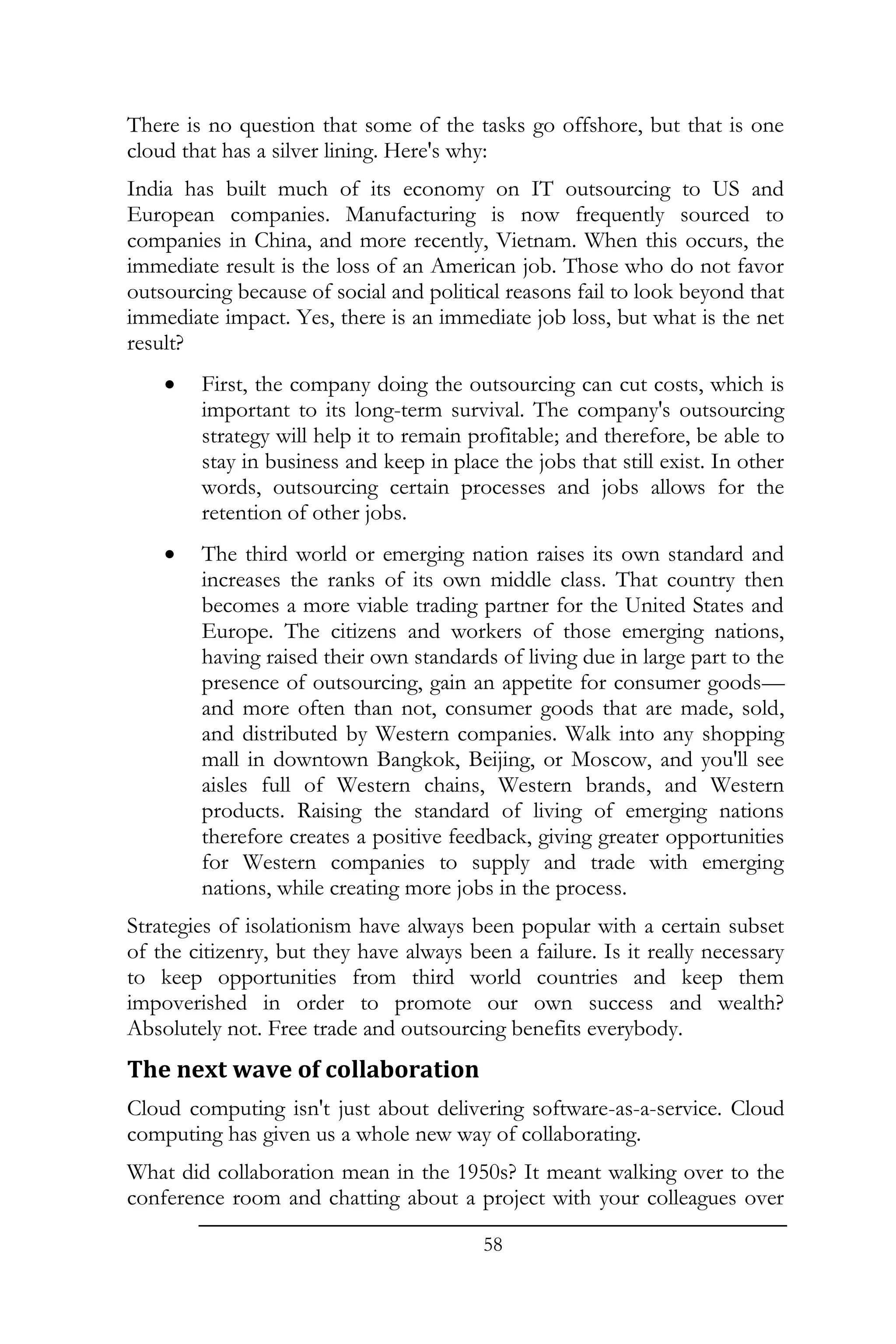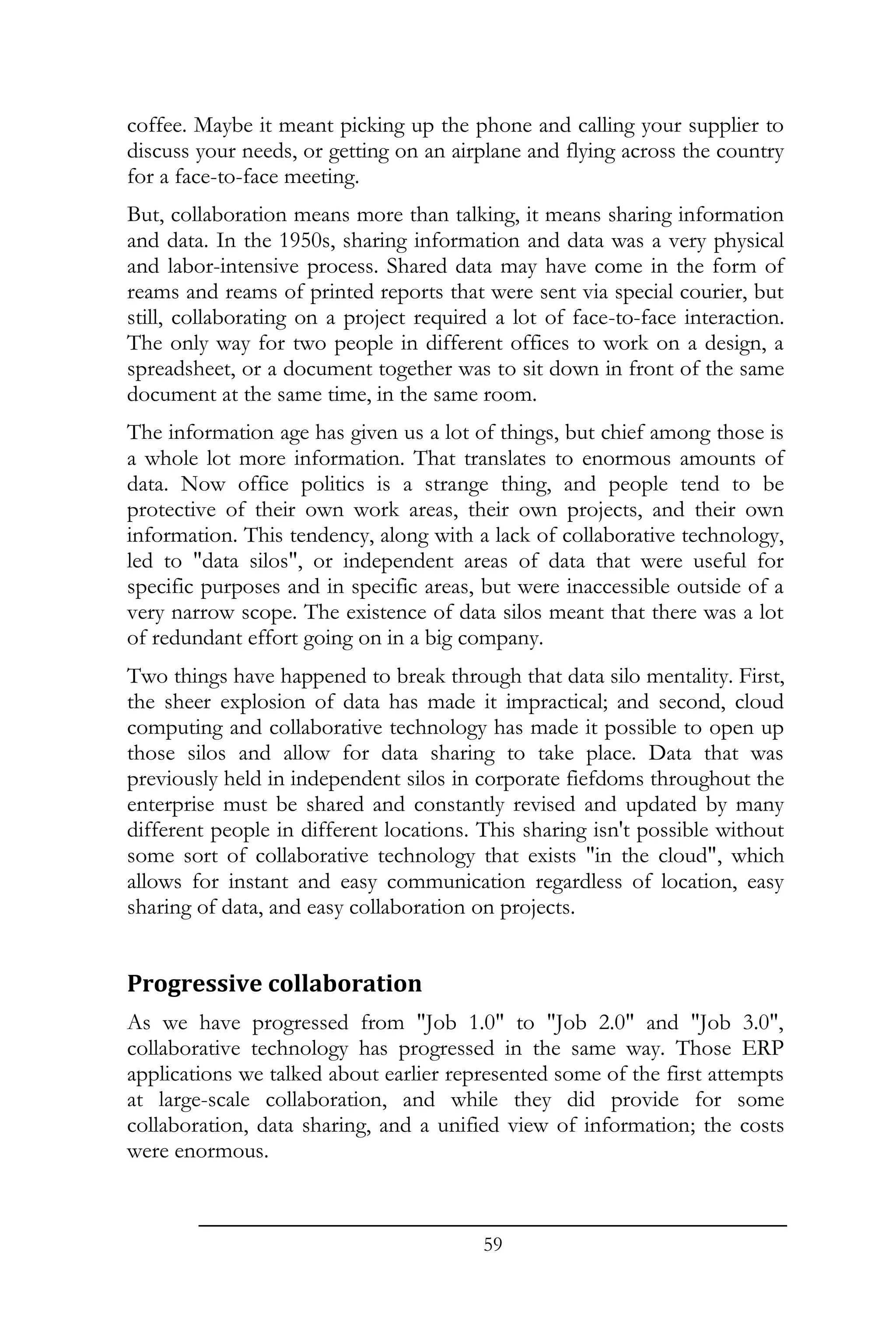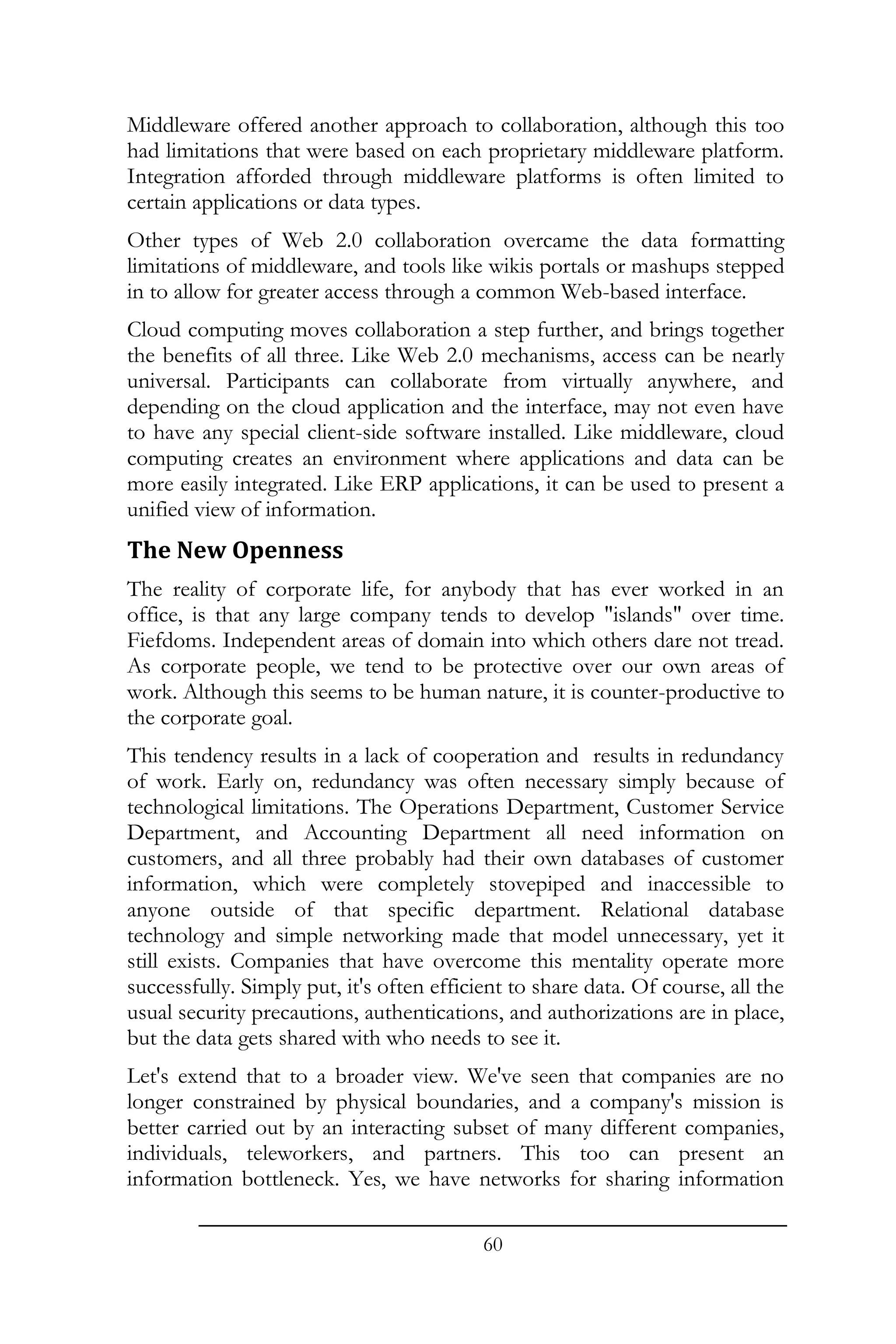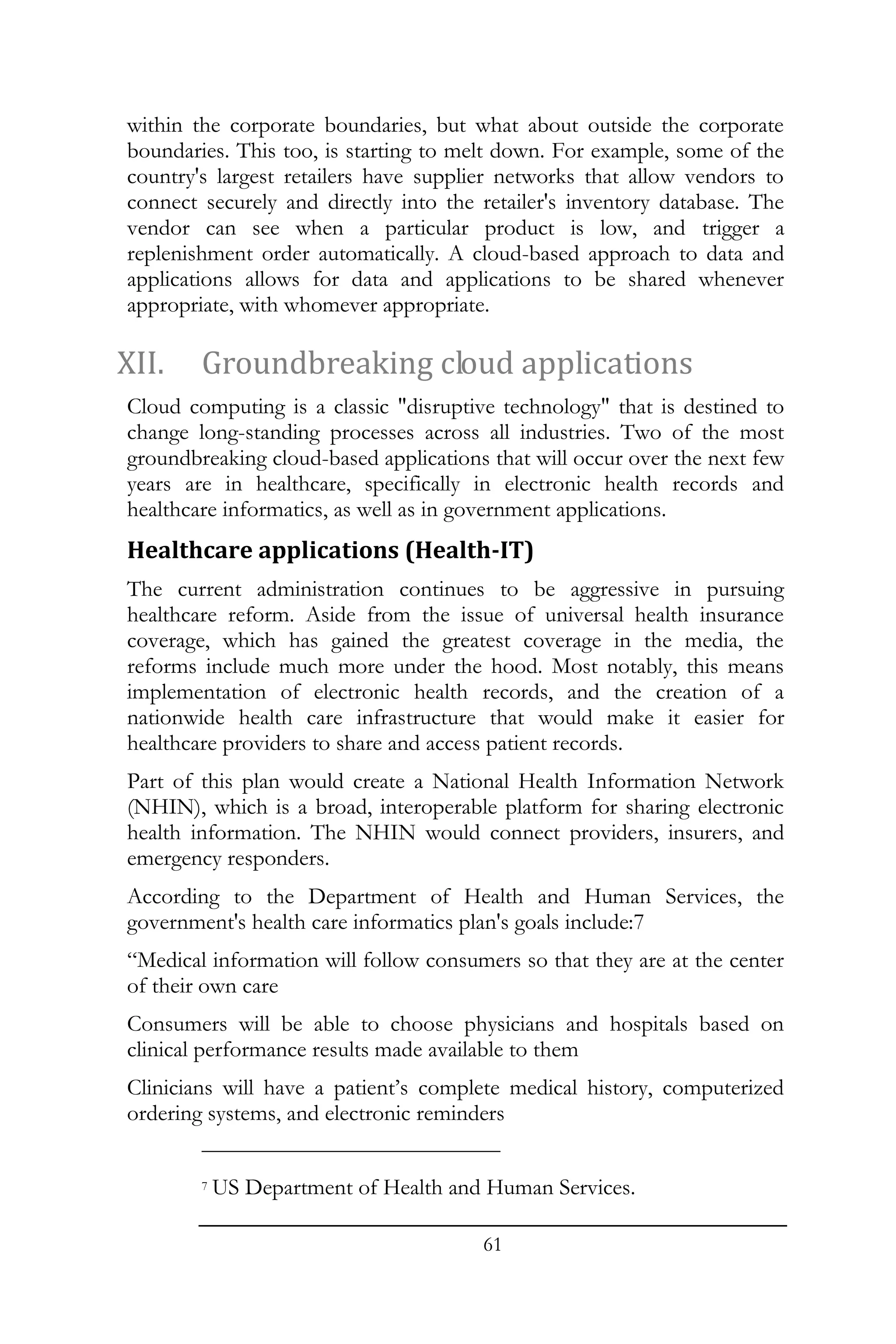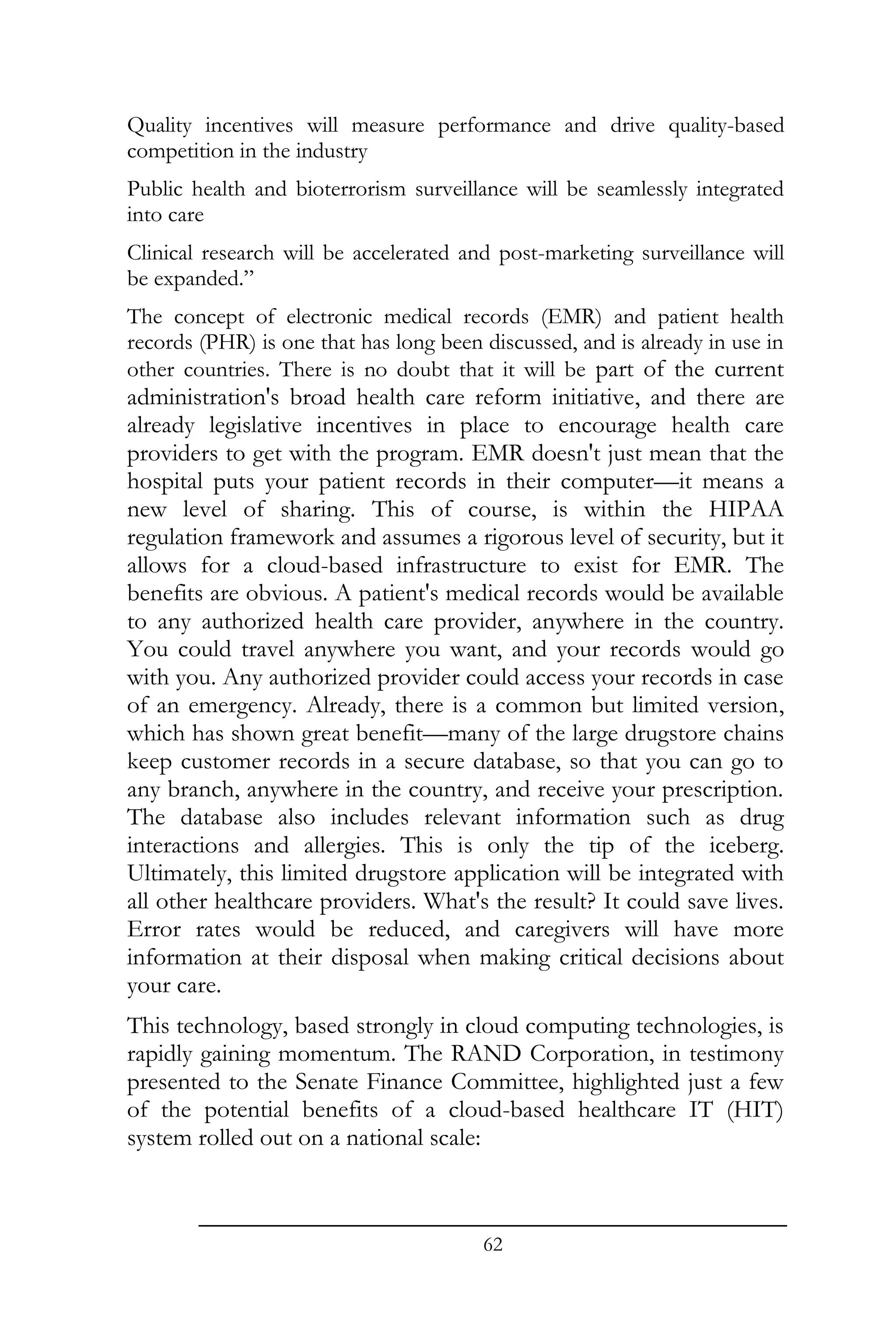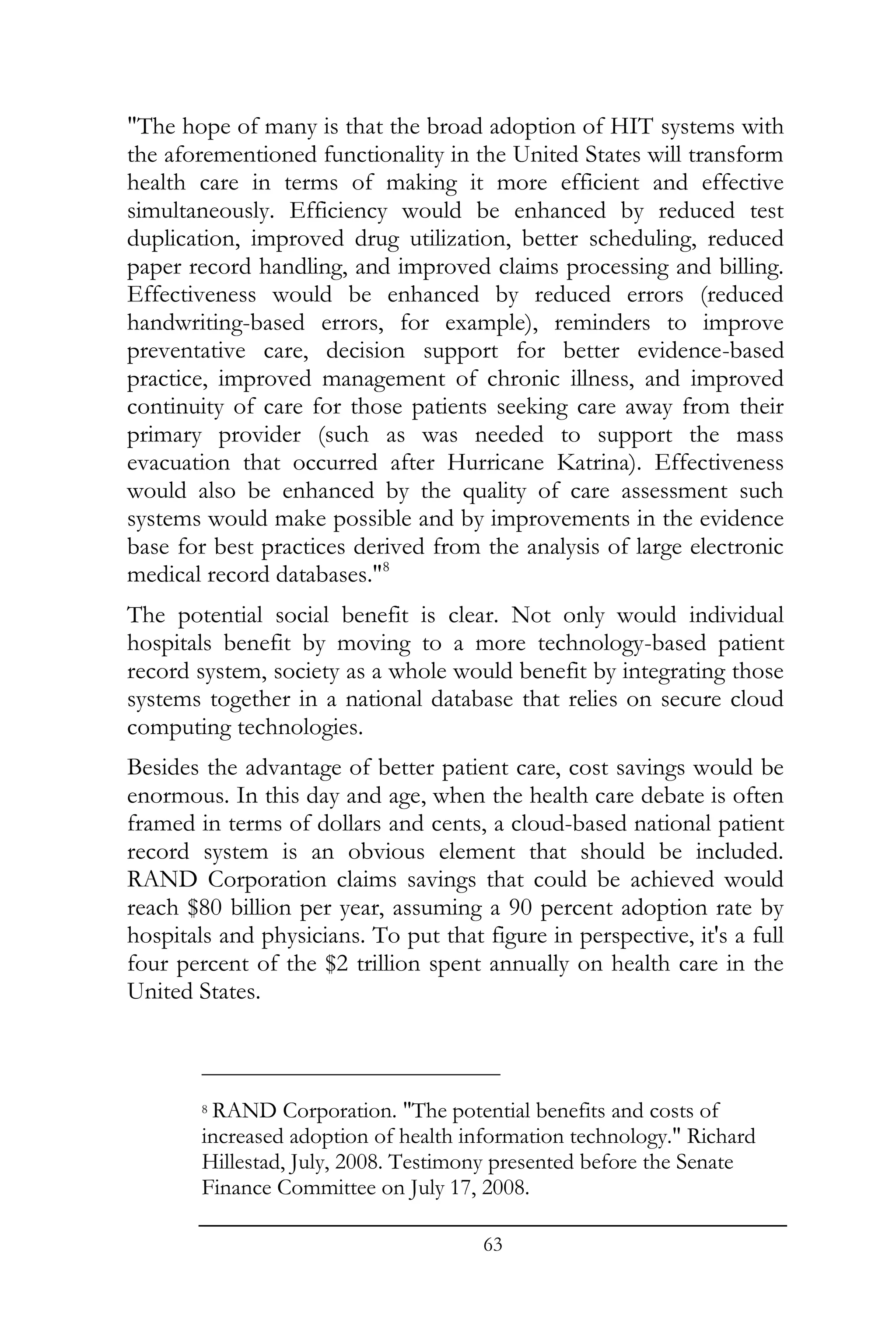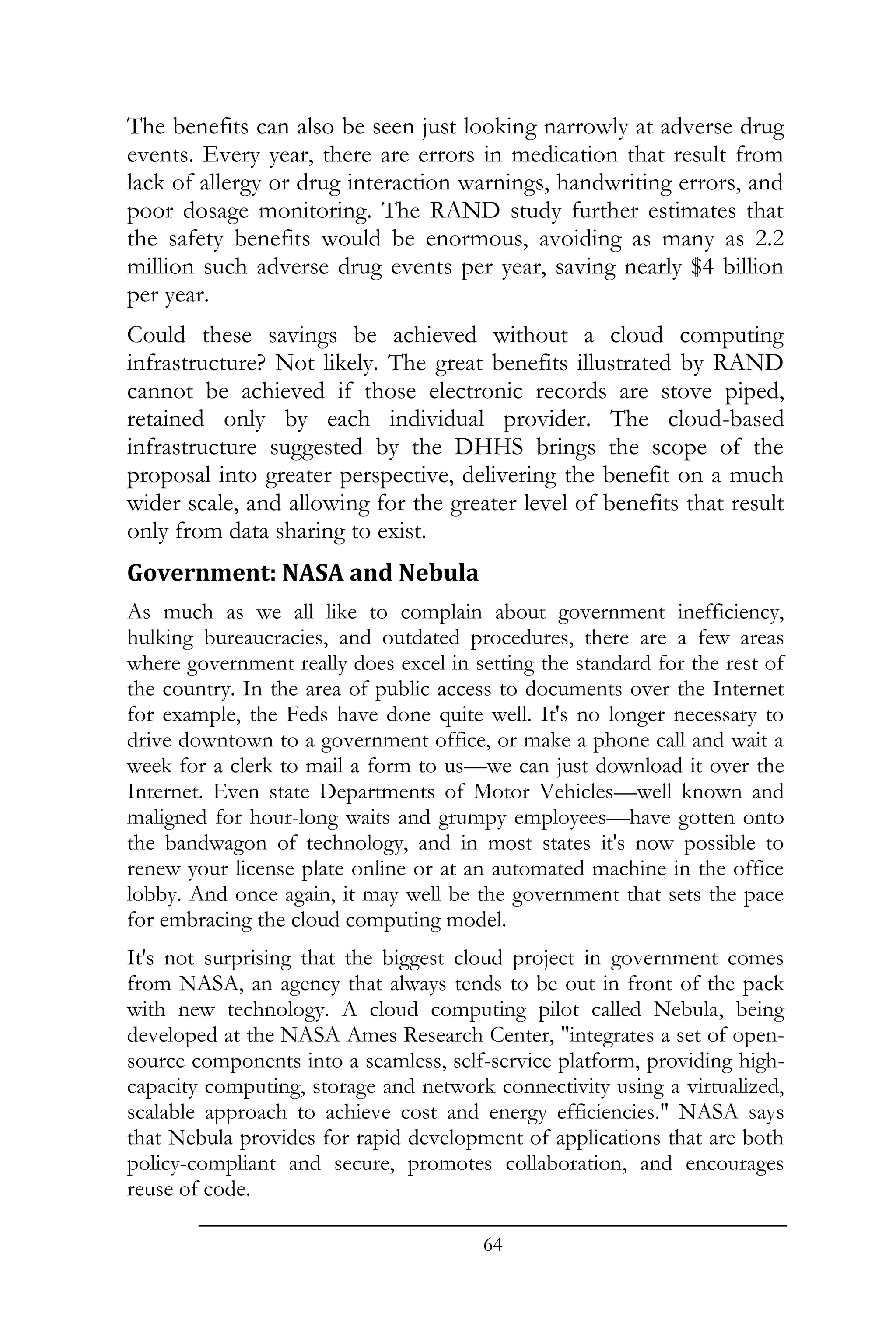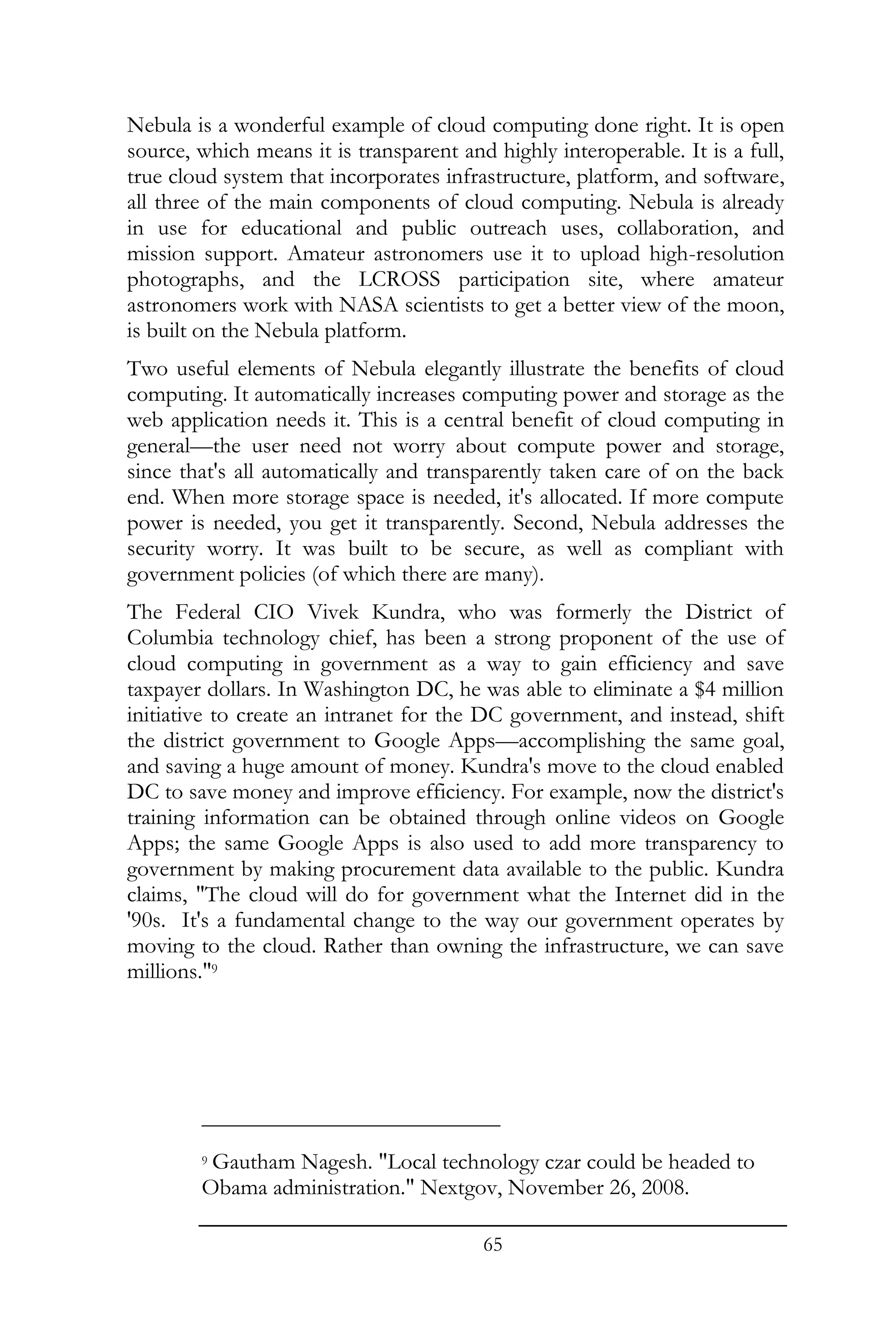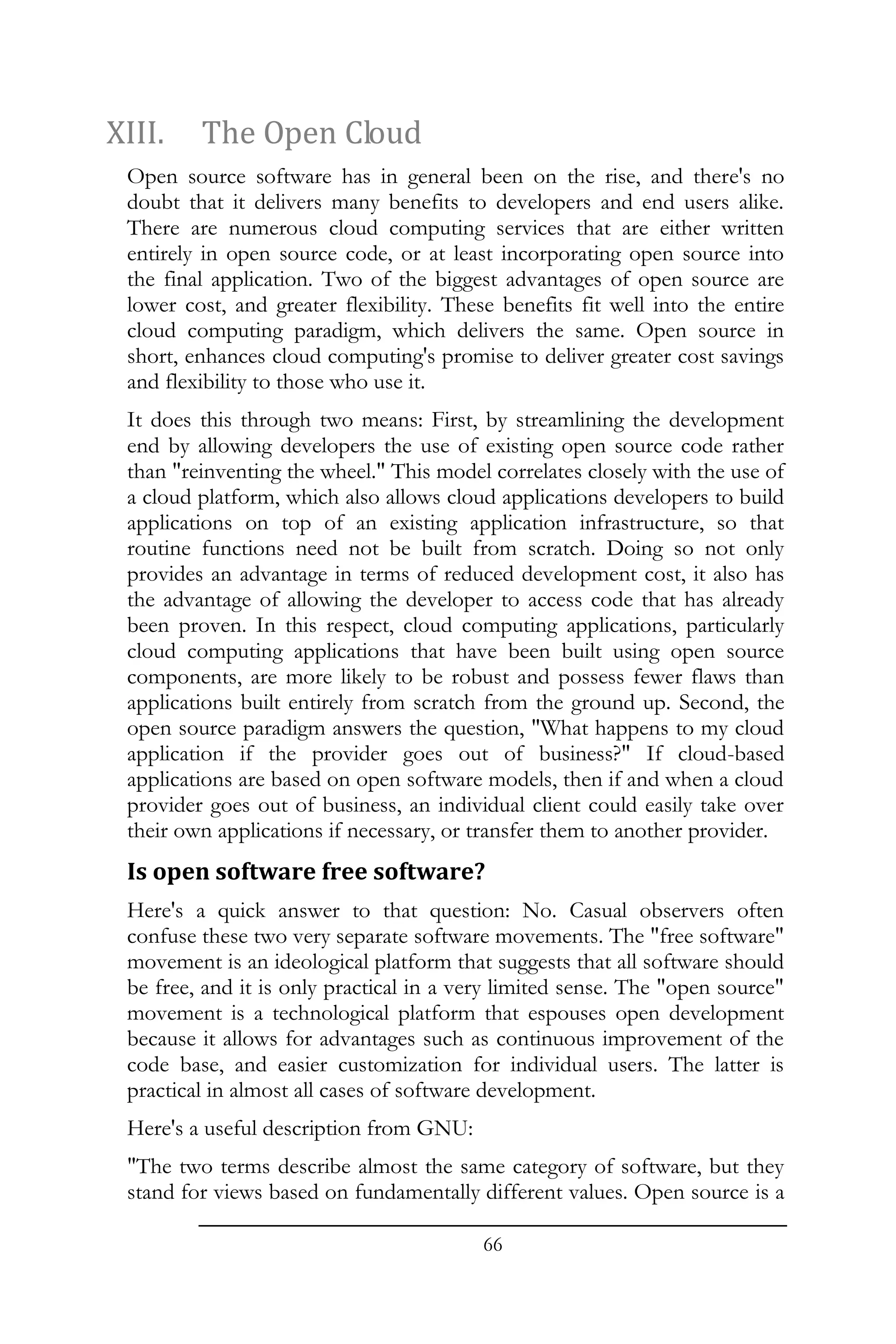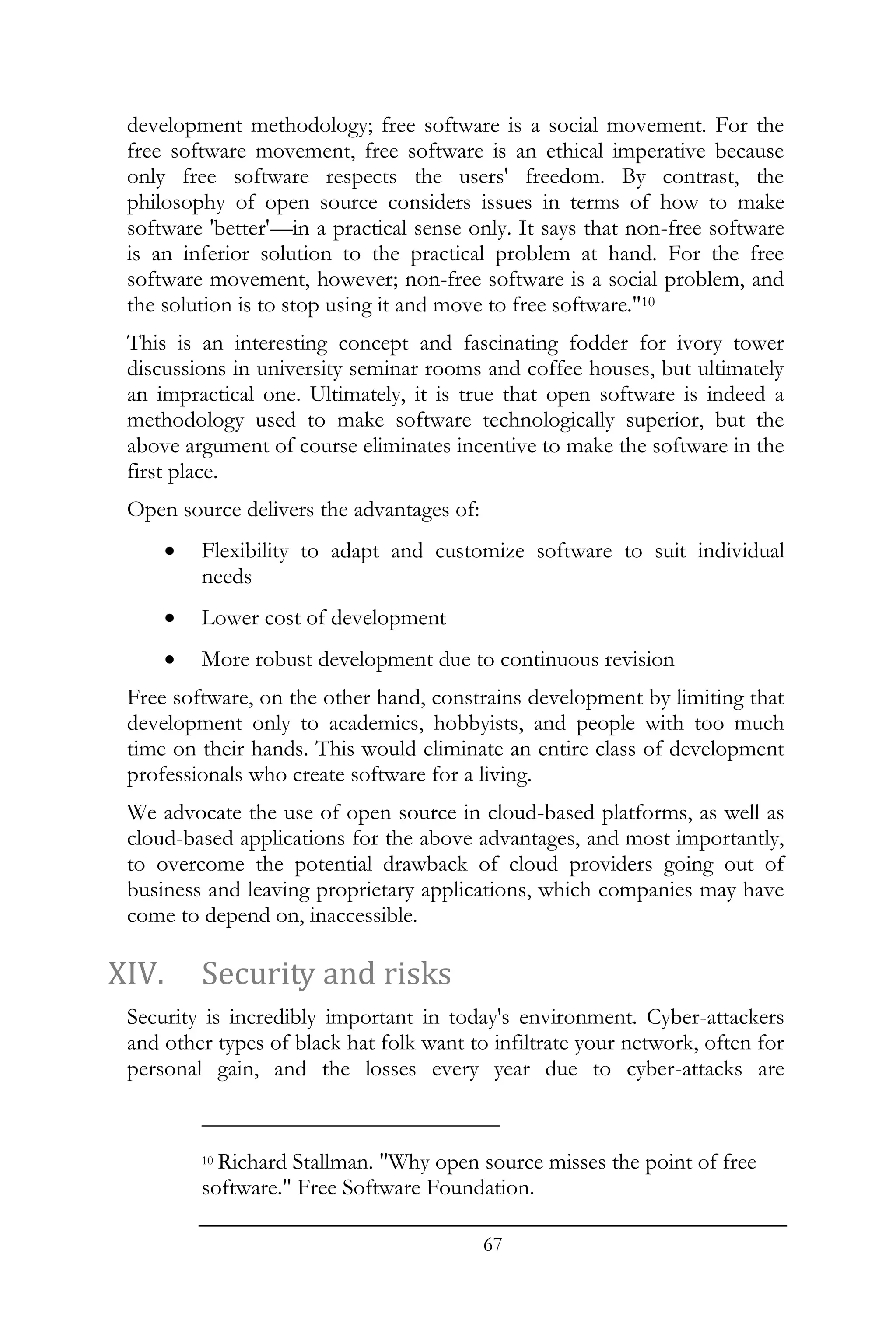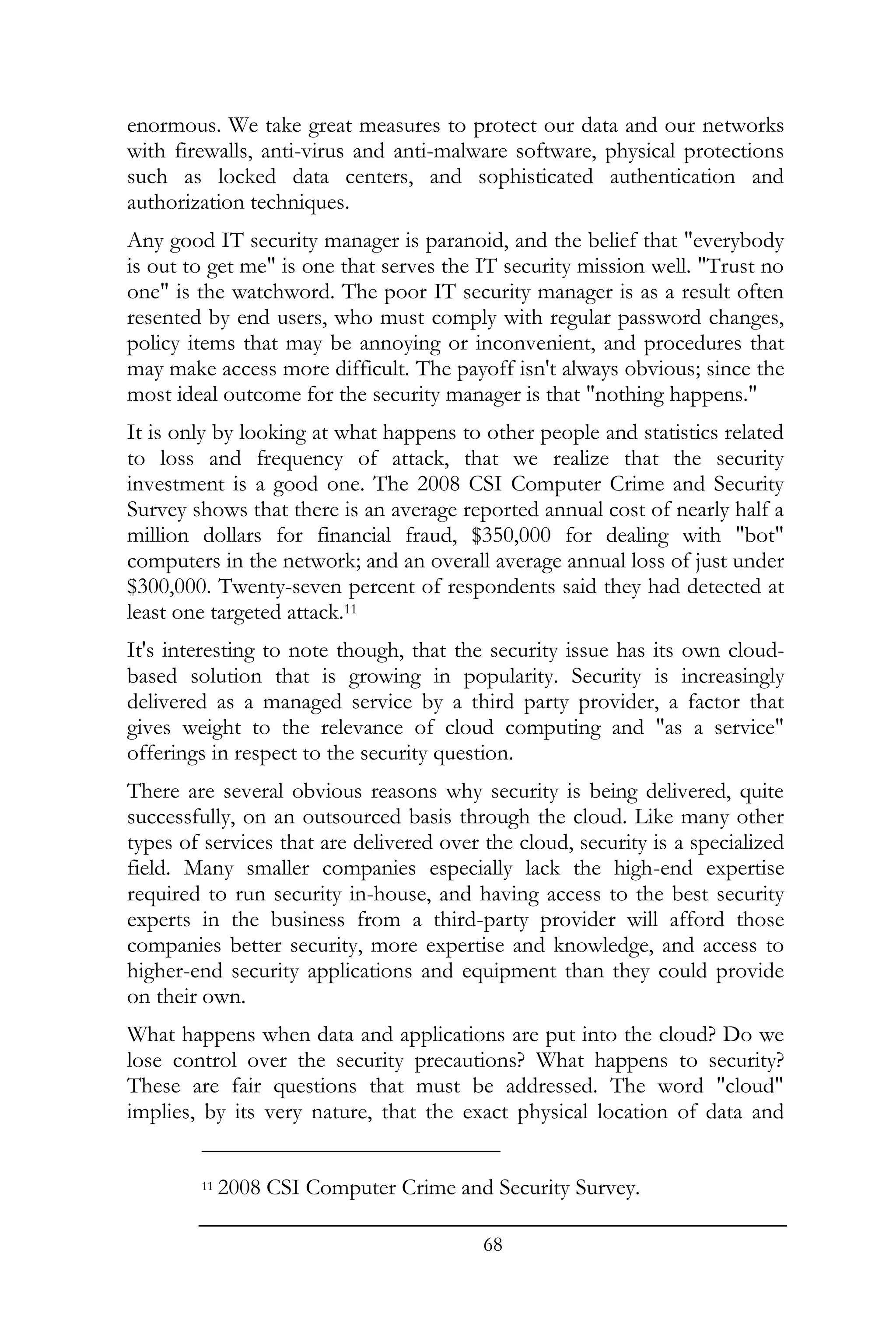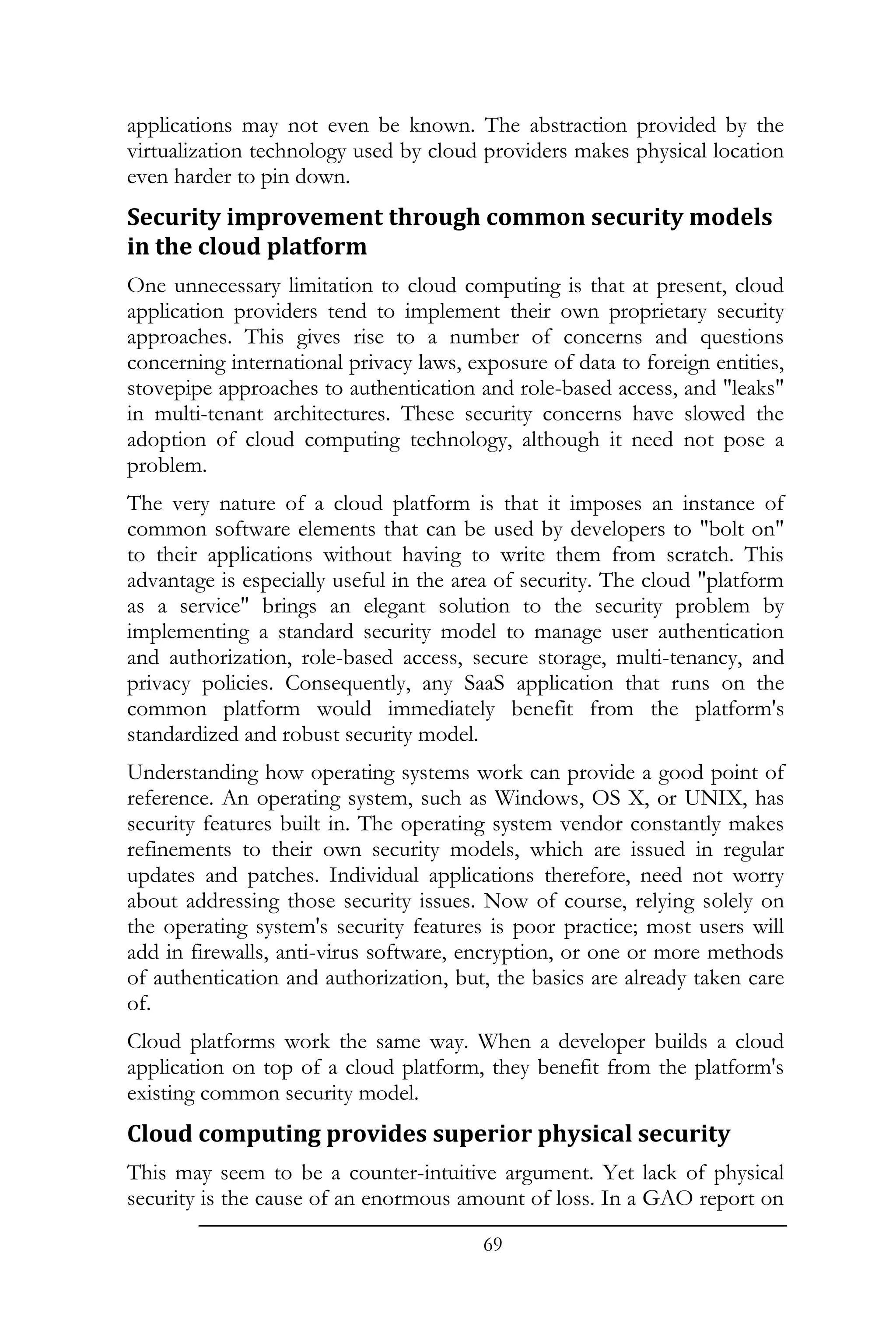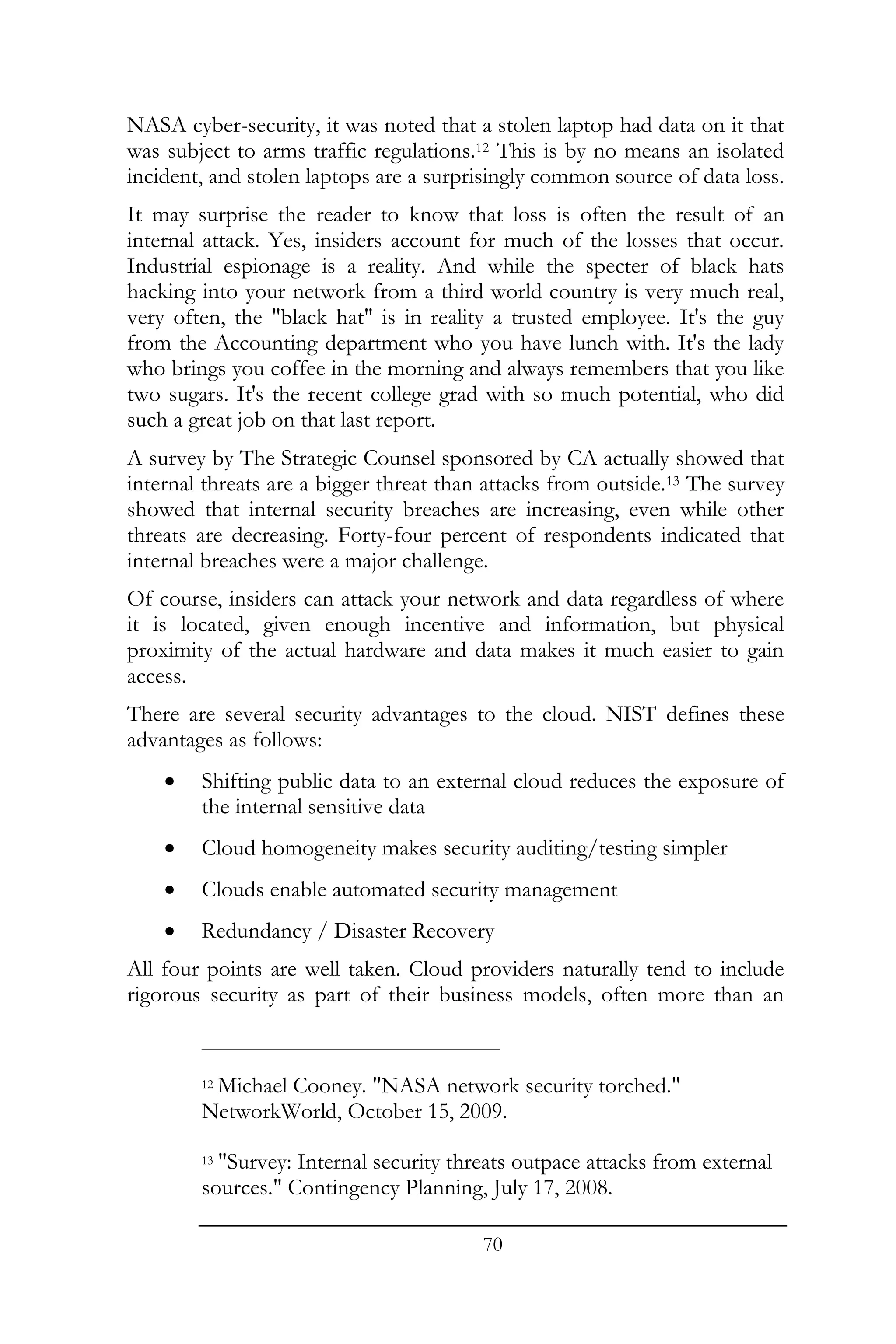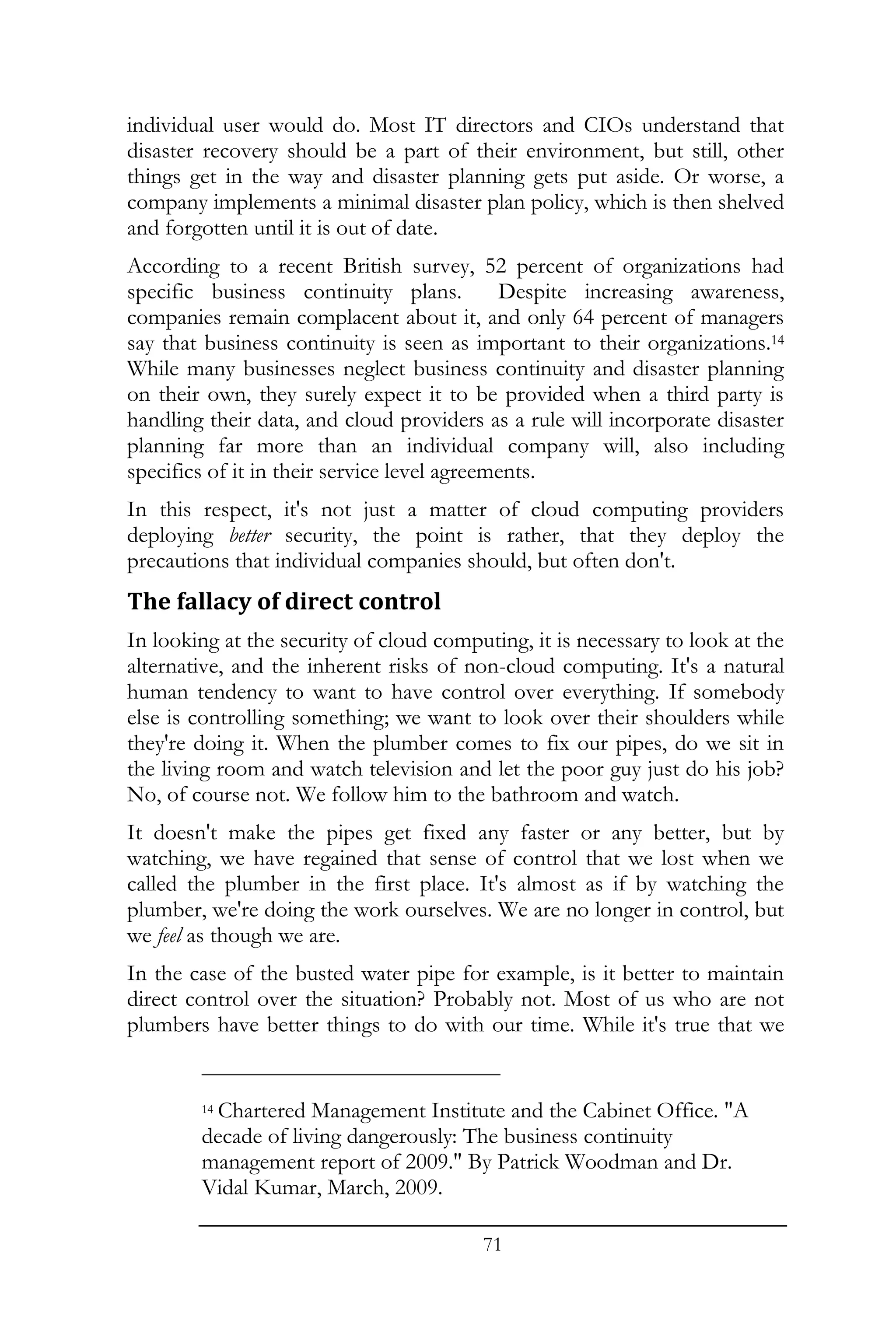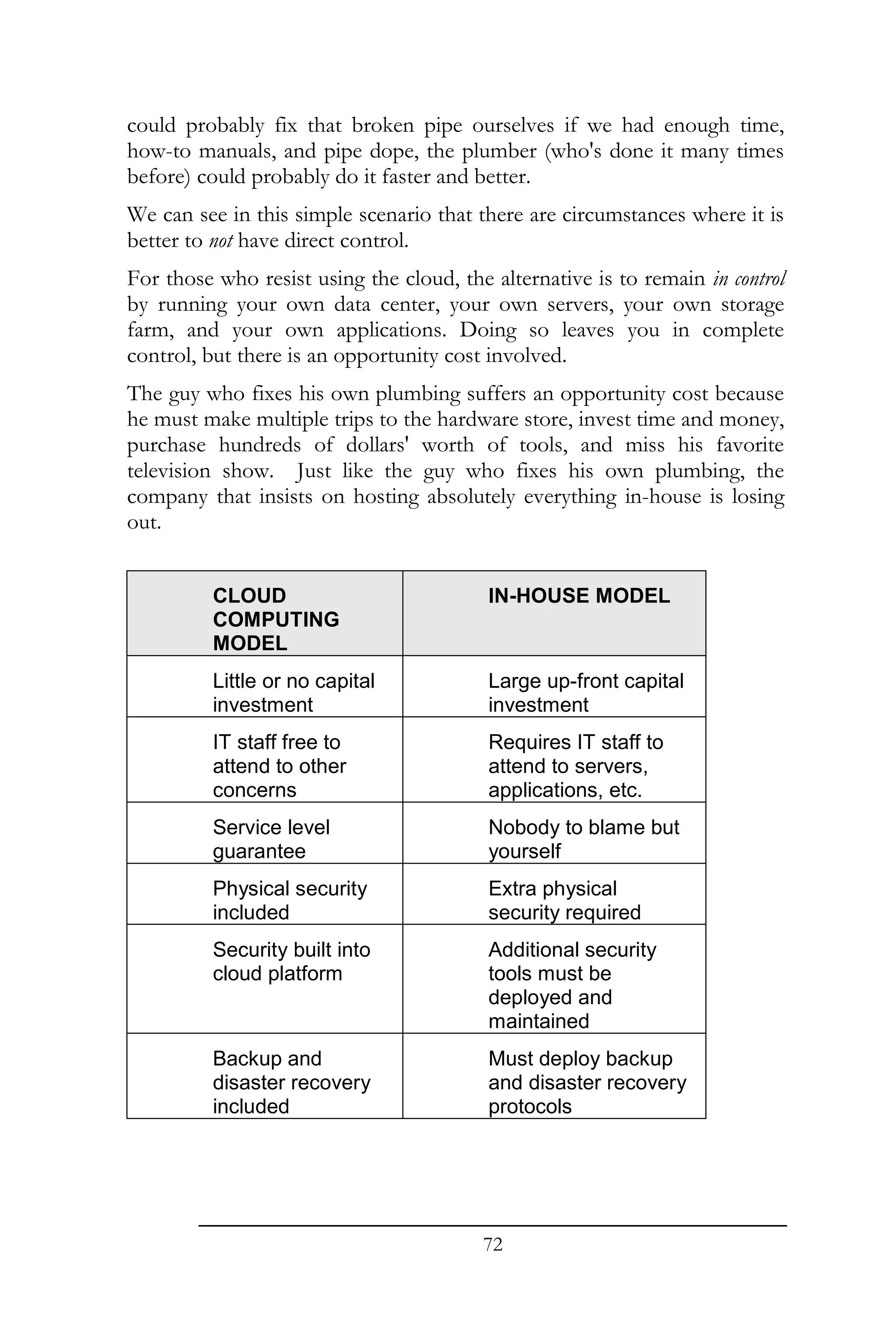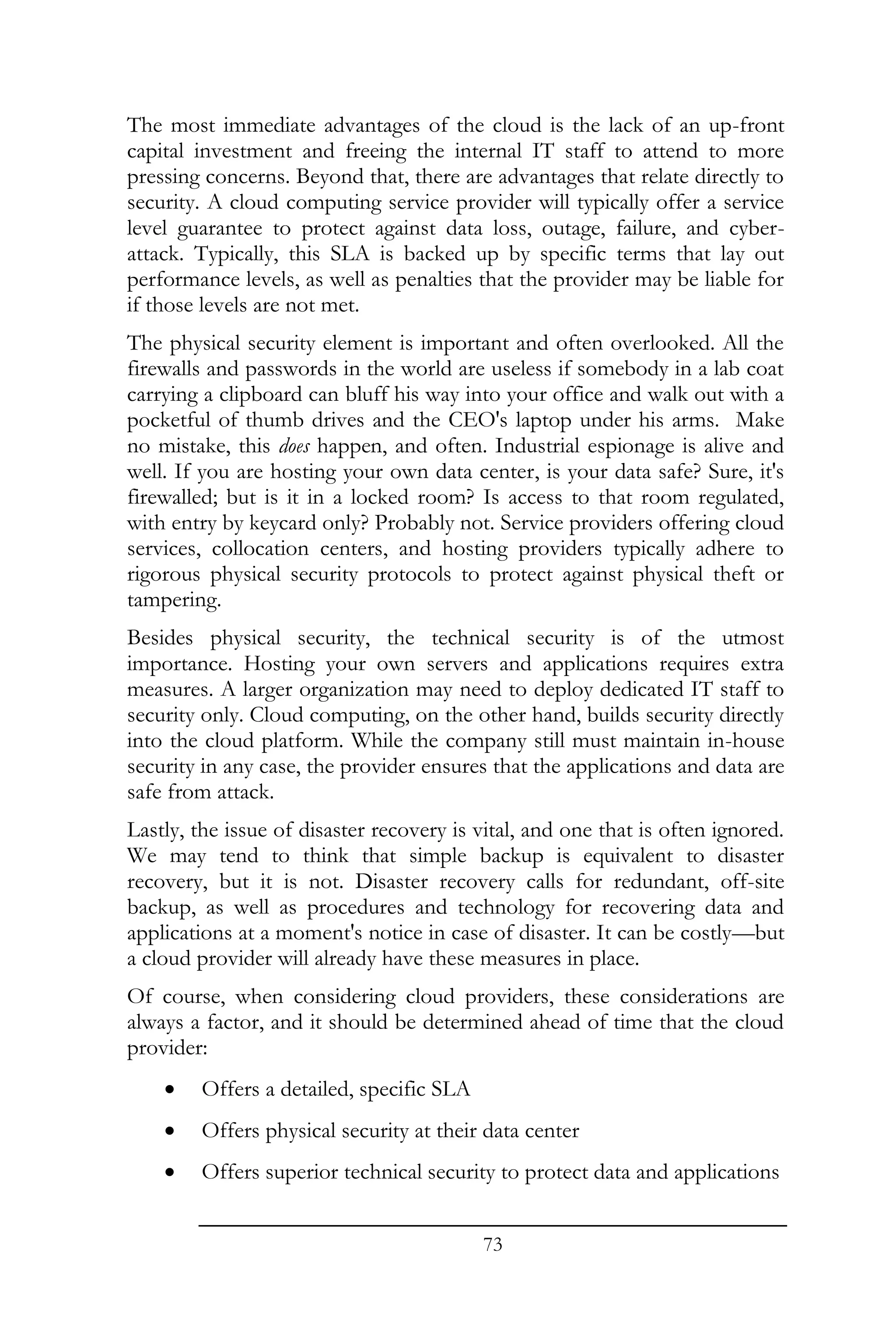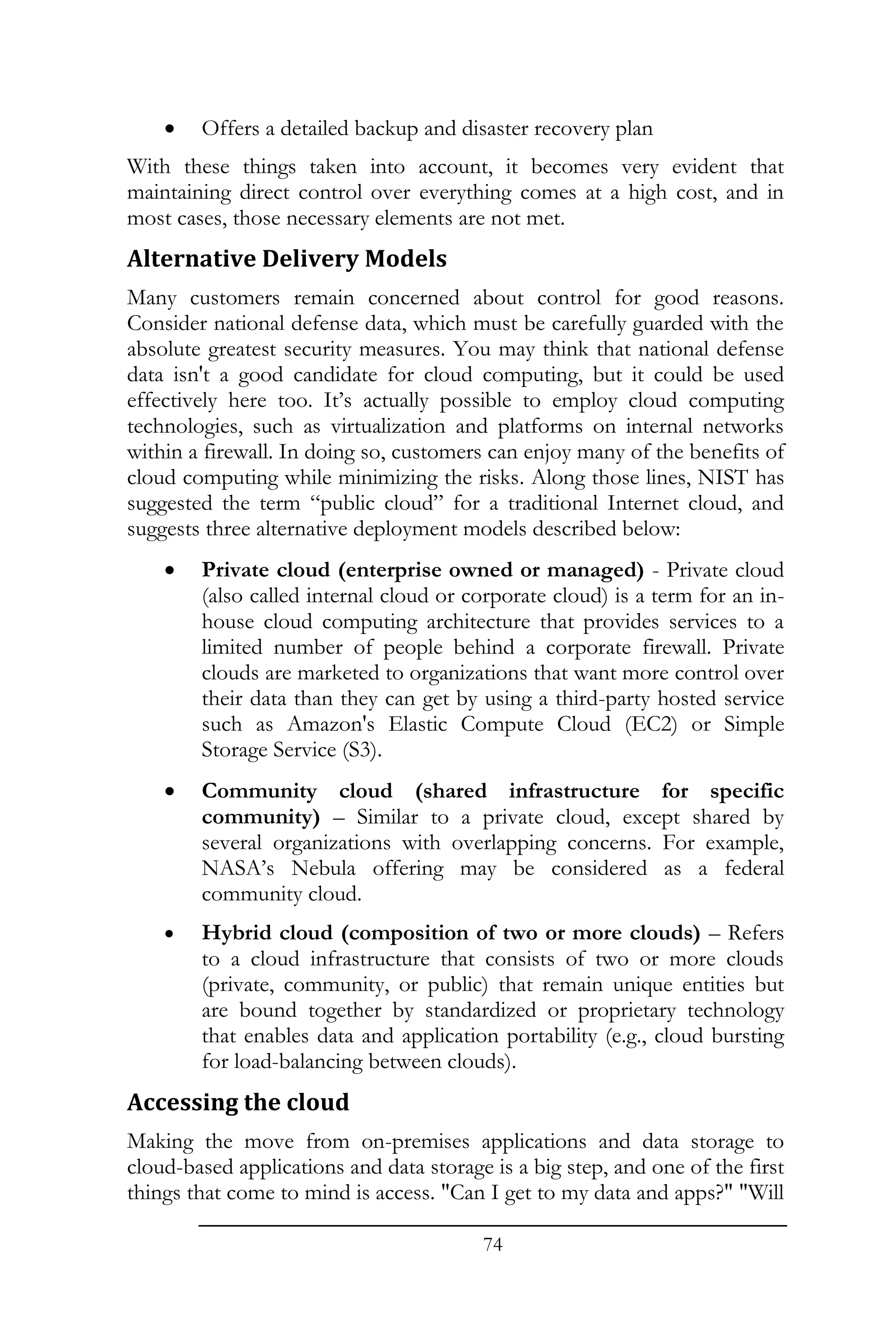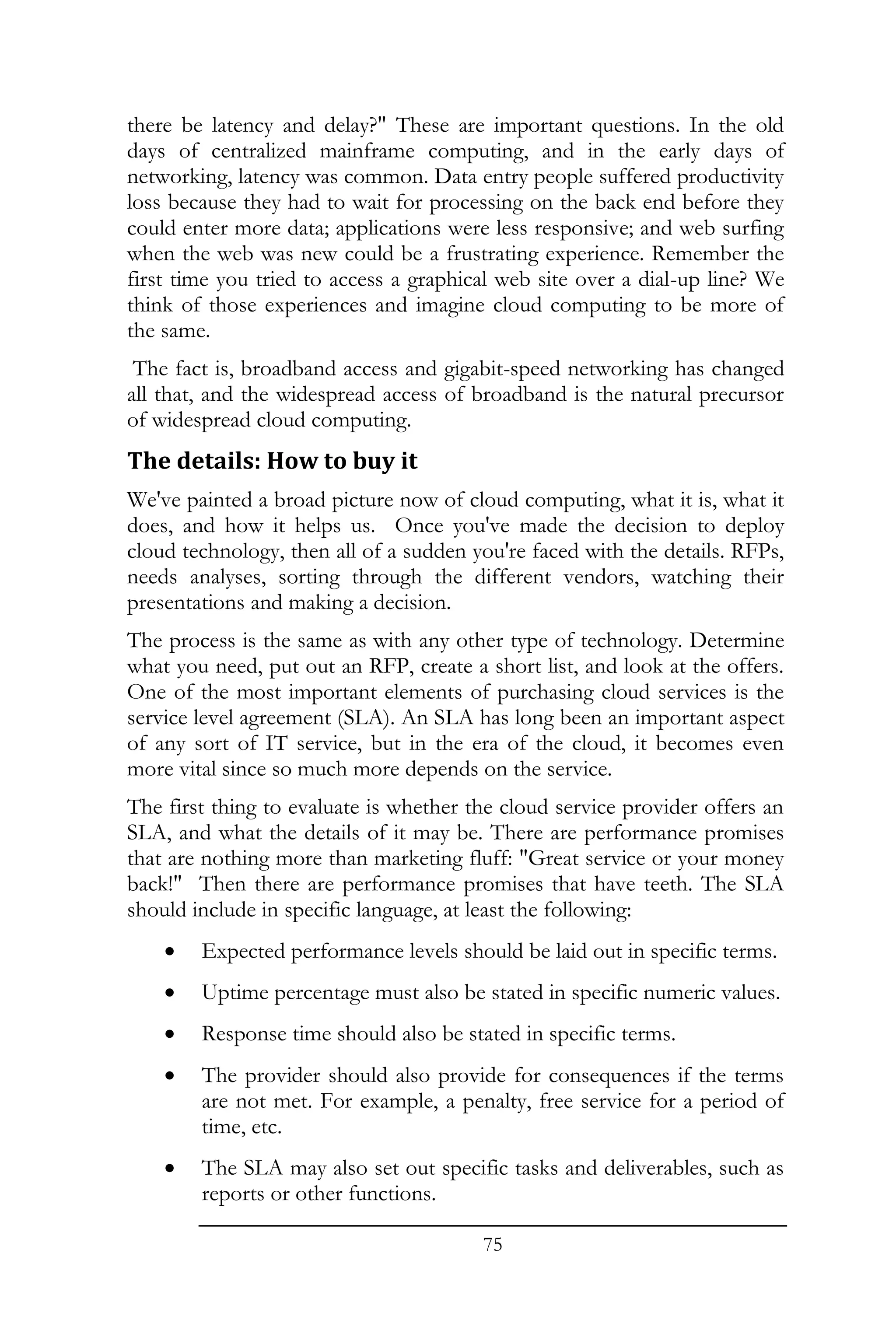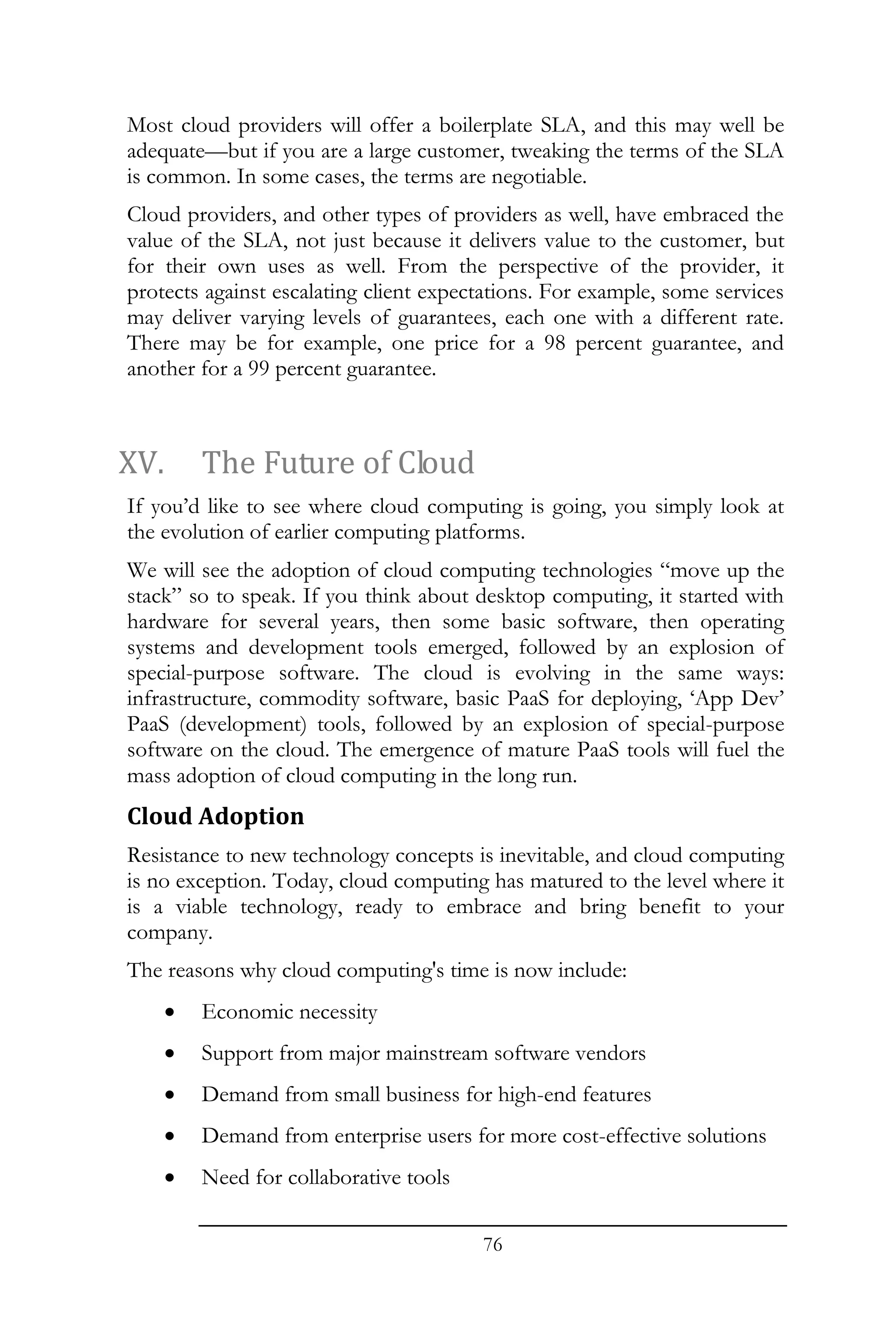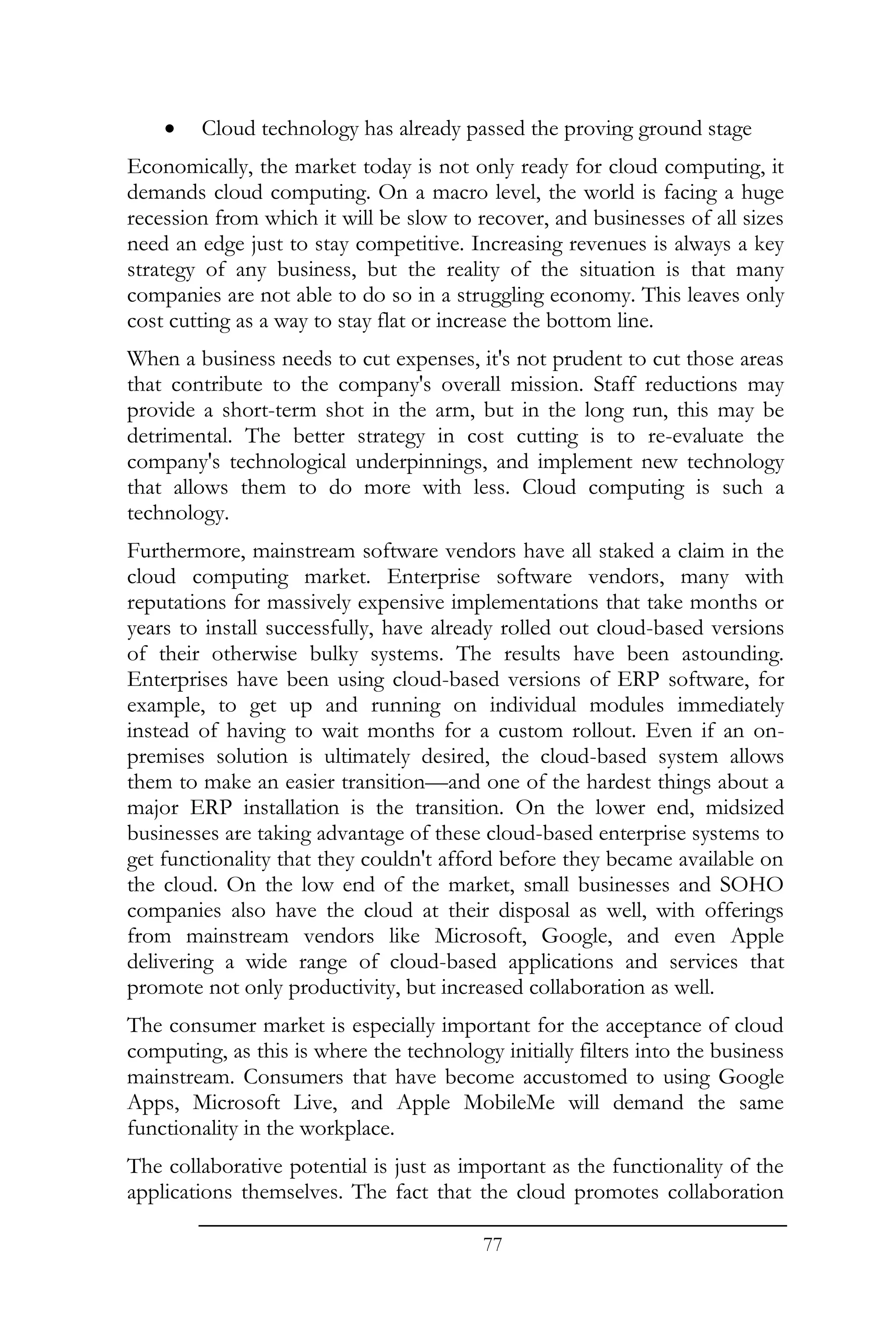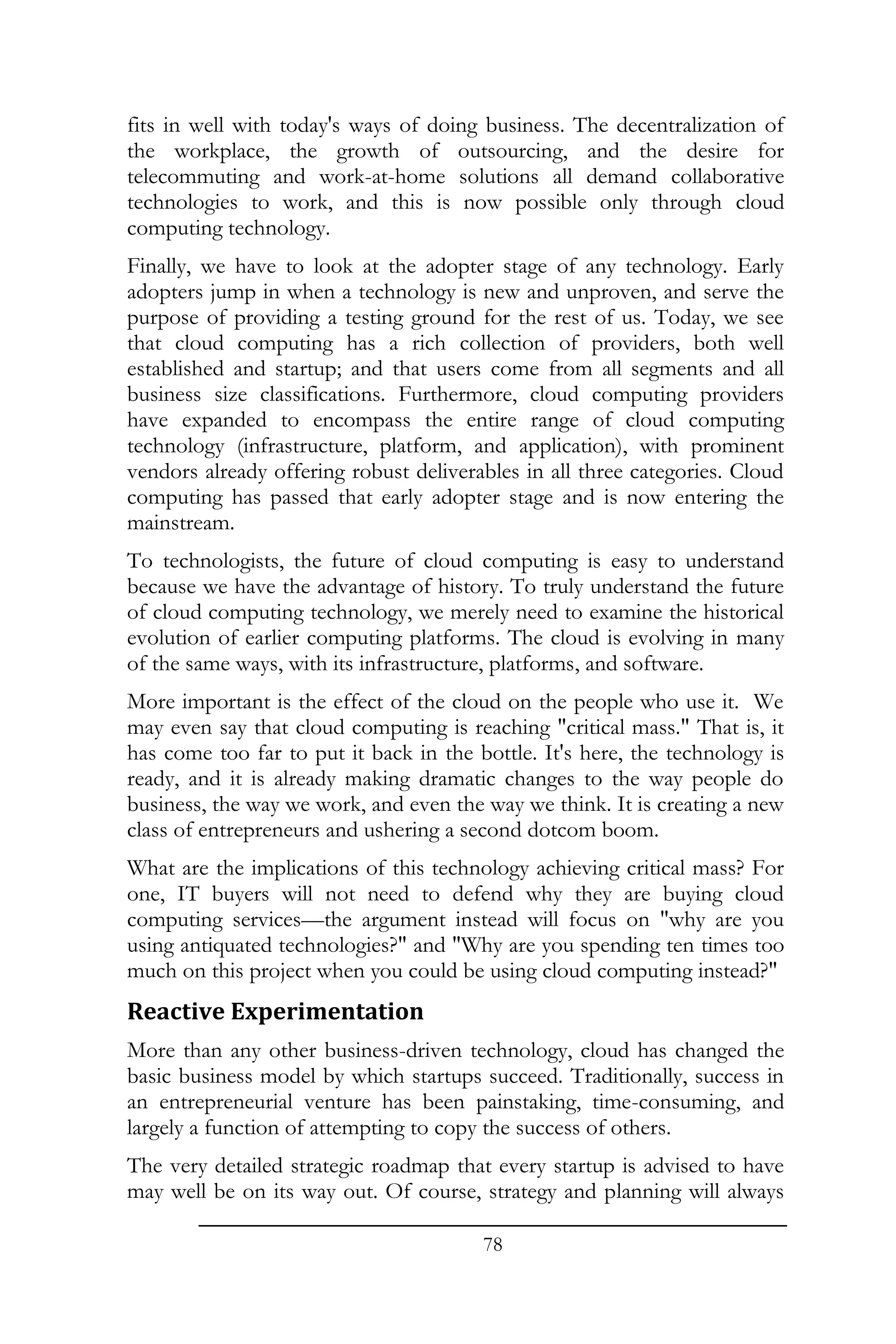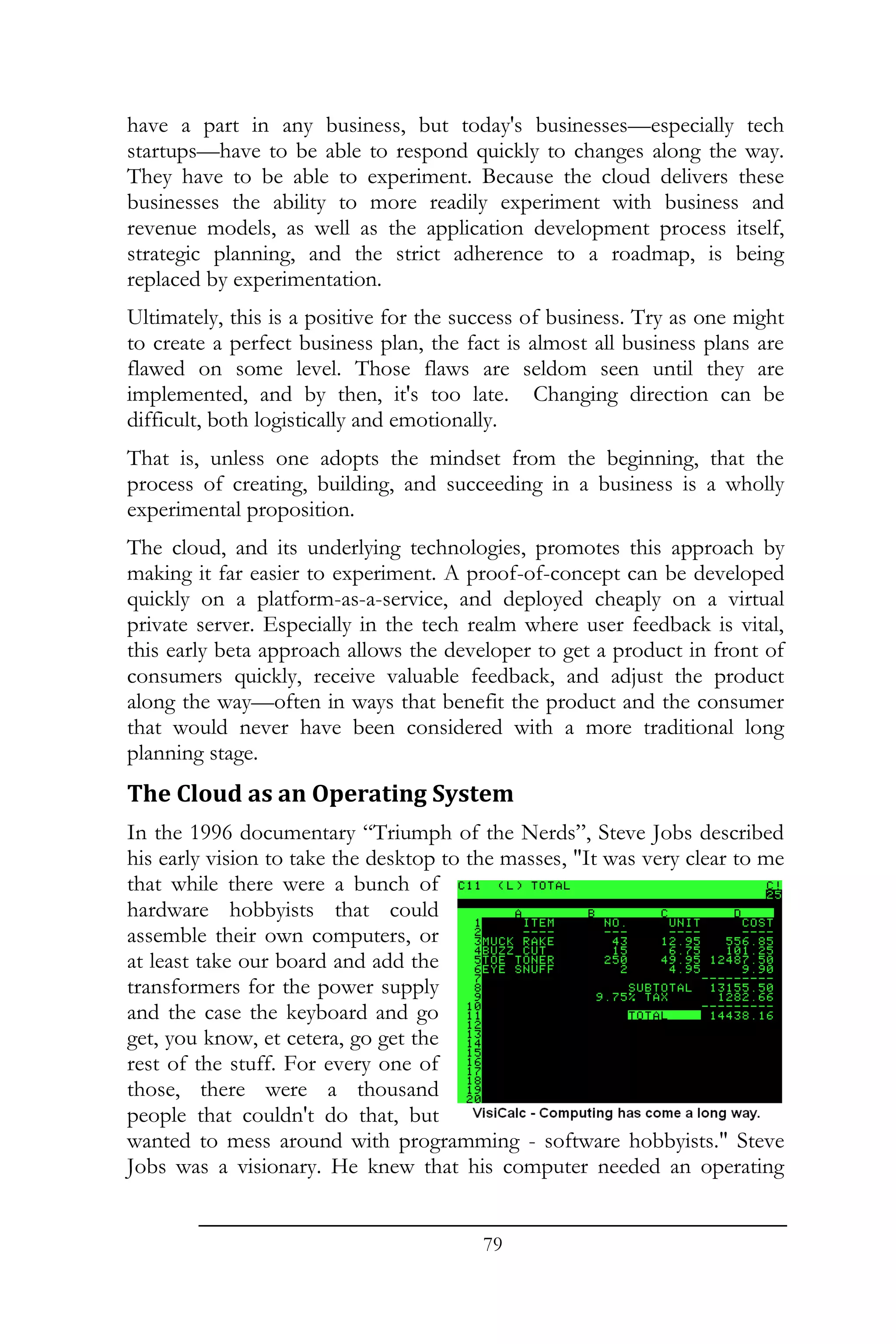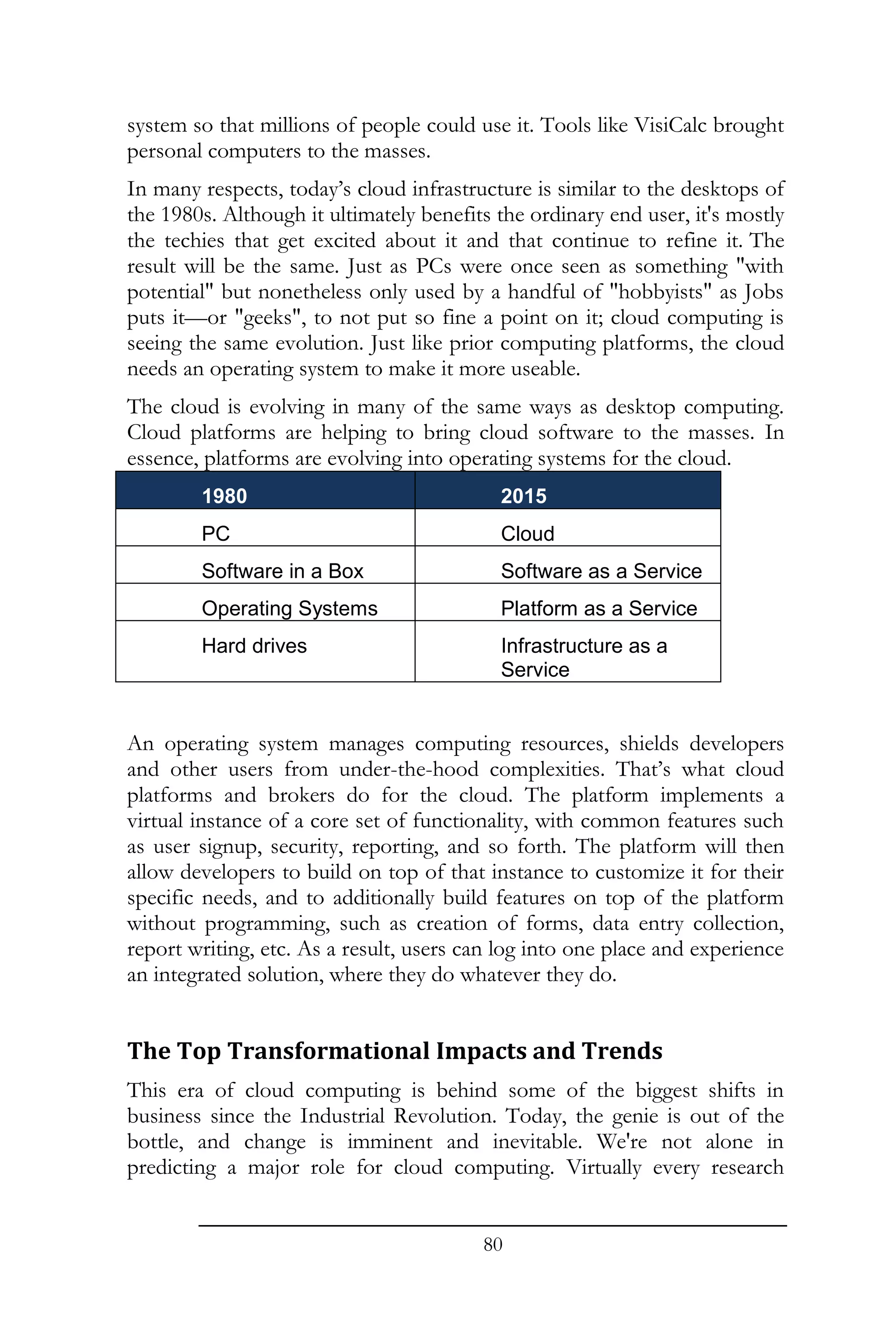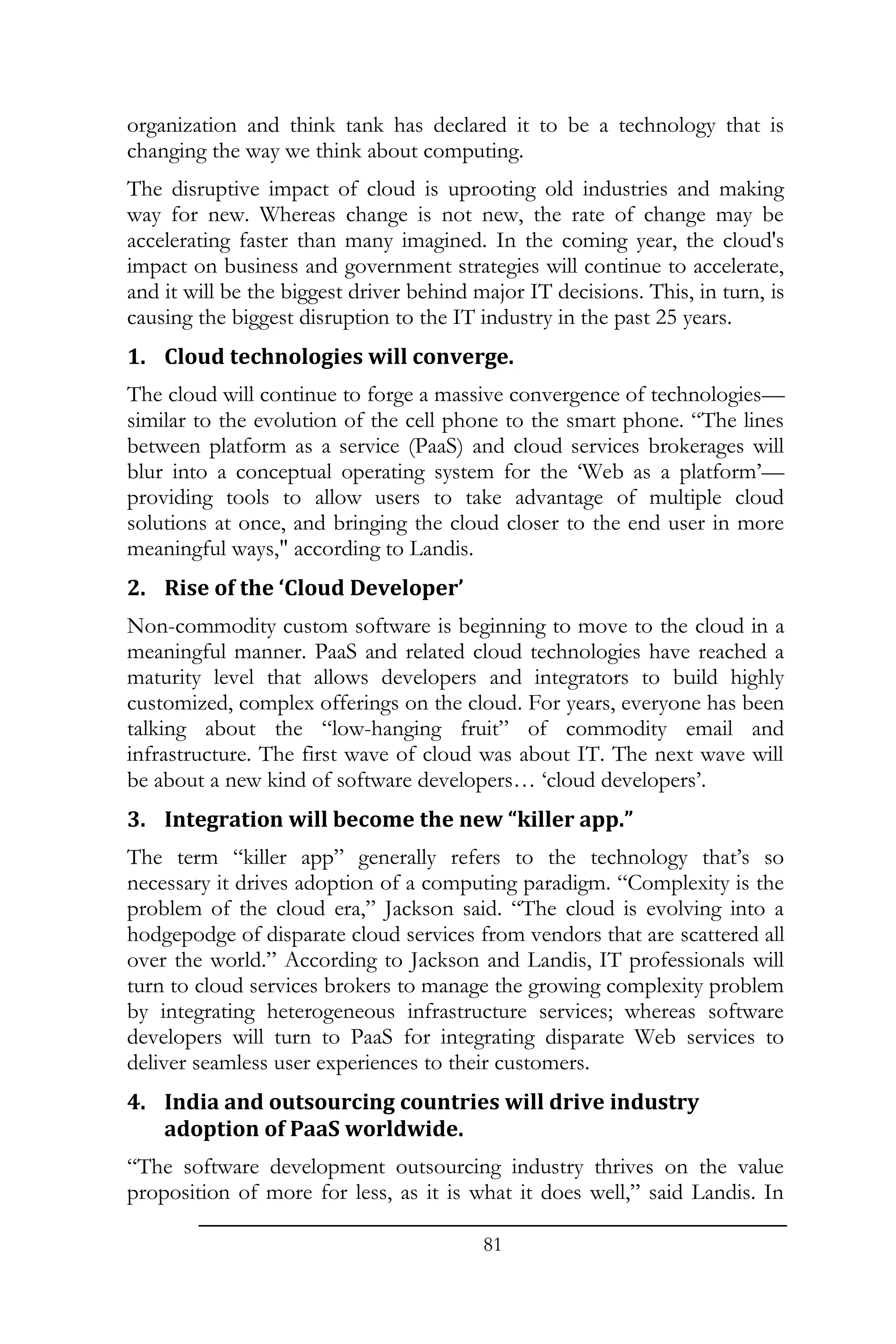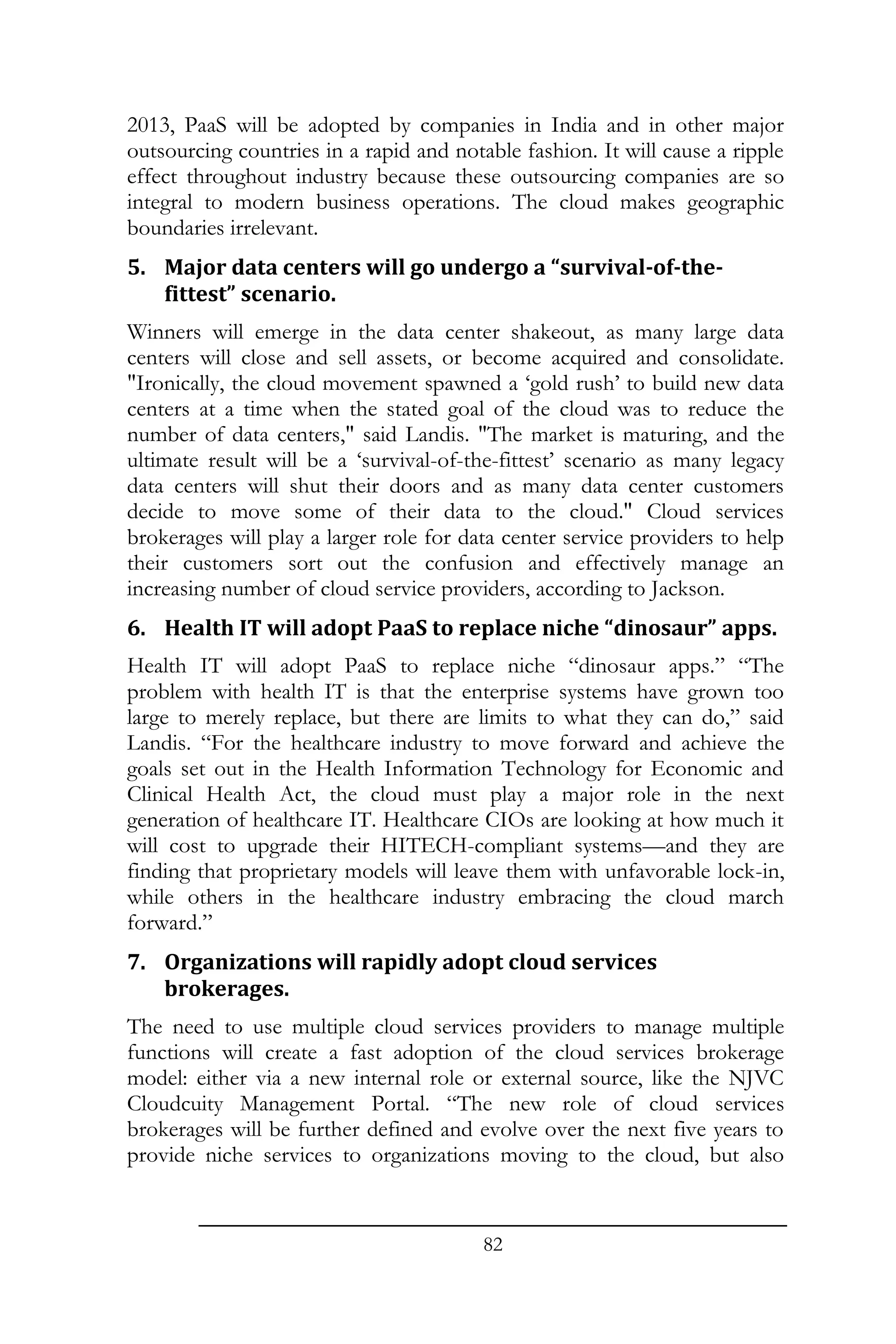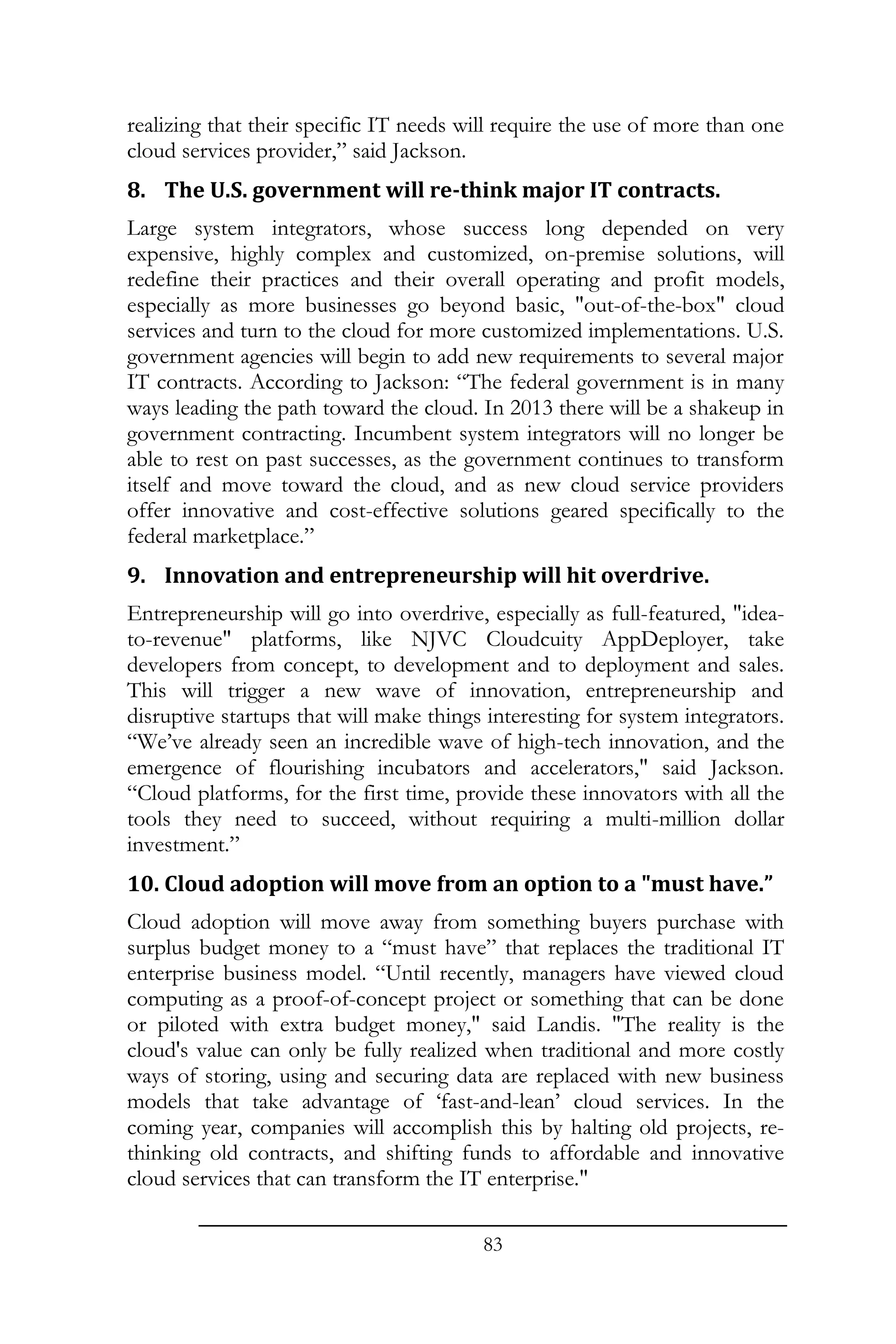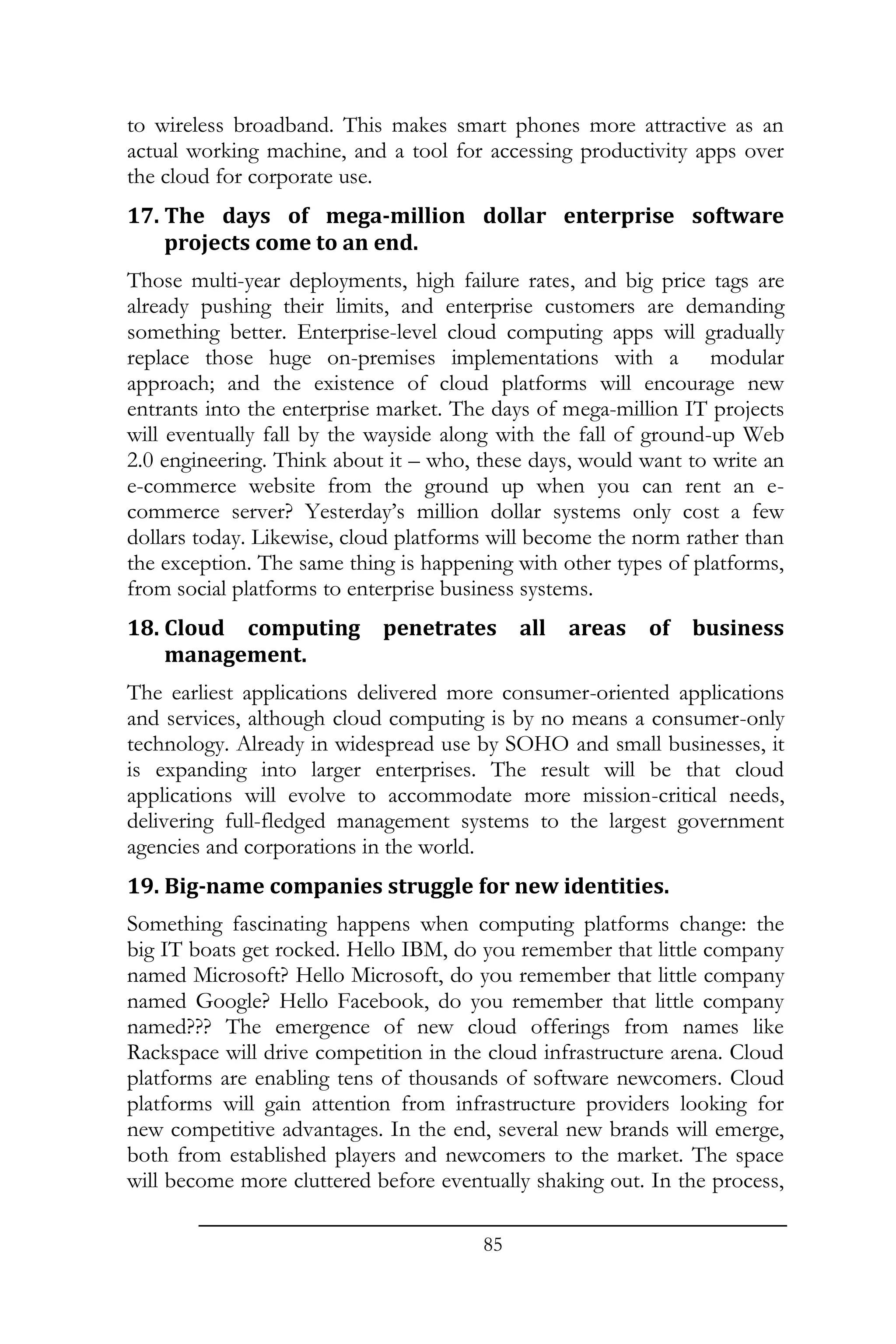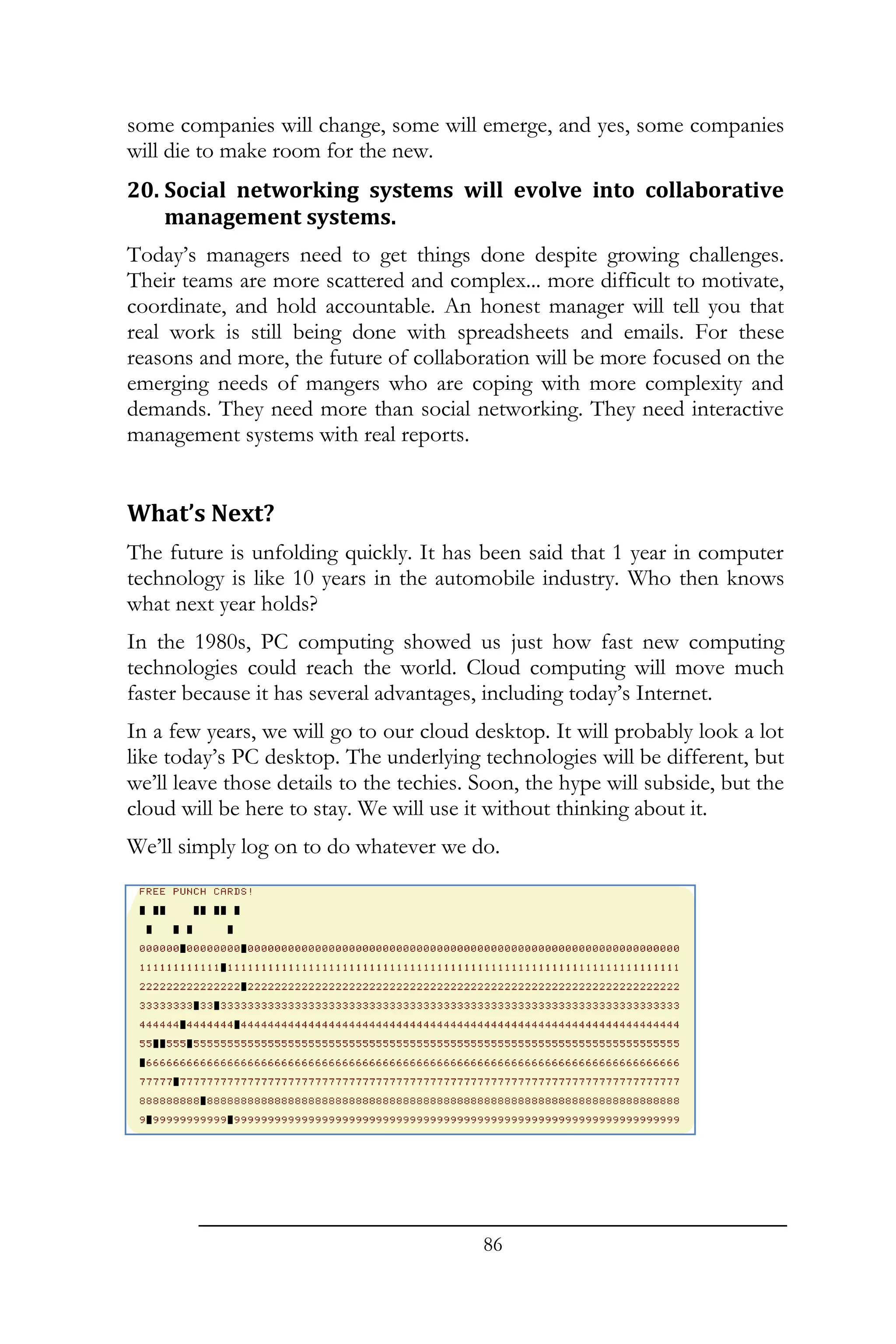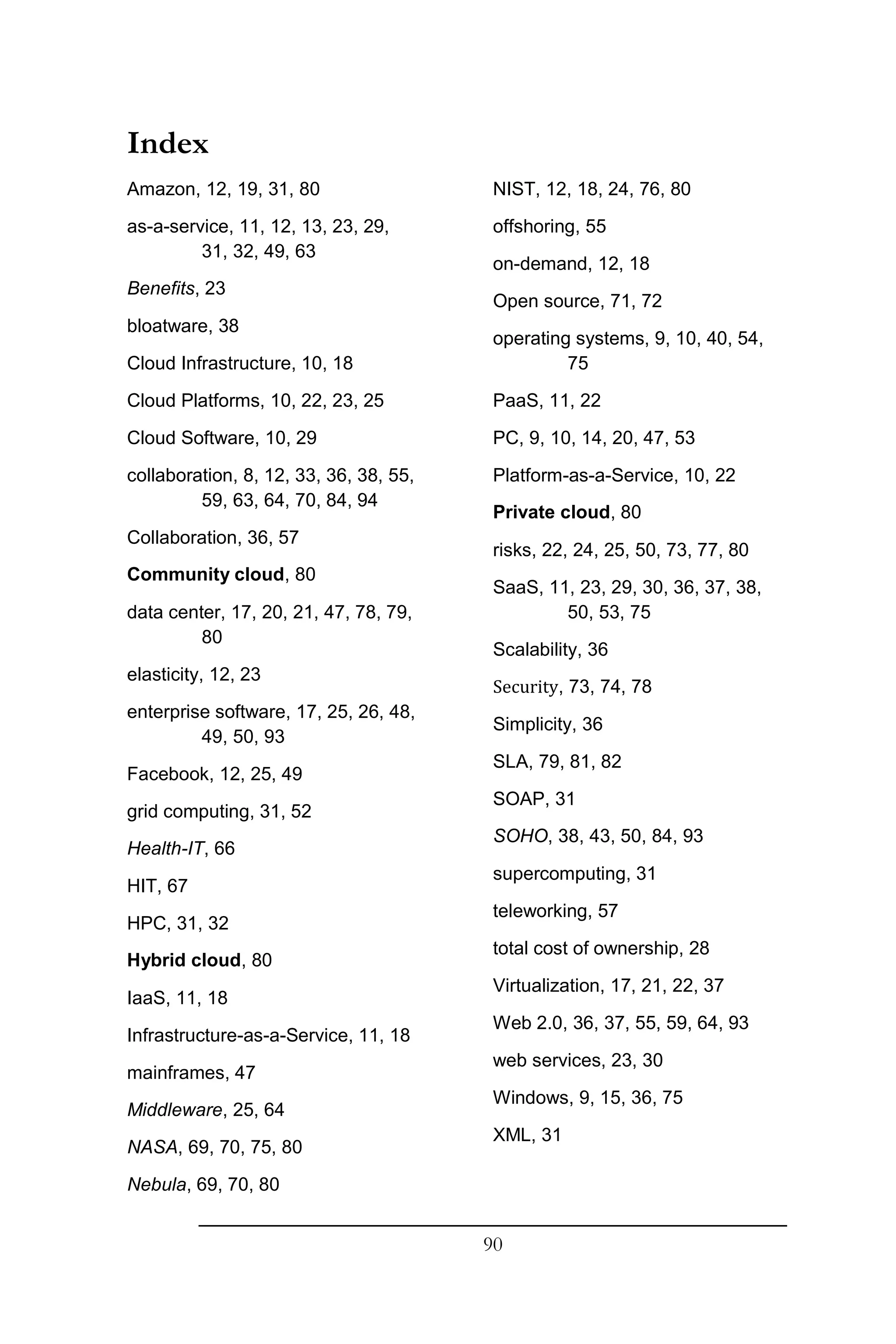The document provides an introduction to cloud computing, defining it as "pay-as-you-go computing on the Internet" where users can rent infrastructure, platforms, and software instead of purchasing them. It discusses how cloud computing encompasses hardware, operating systems, and software delivered as services over the Internet. The cloud allows users to access computing resources without large upfront costs and manage resources remotely. While the terminology can be confusing, cloud computing represents a significant shift in how organizations access technology.
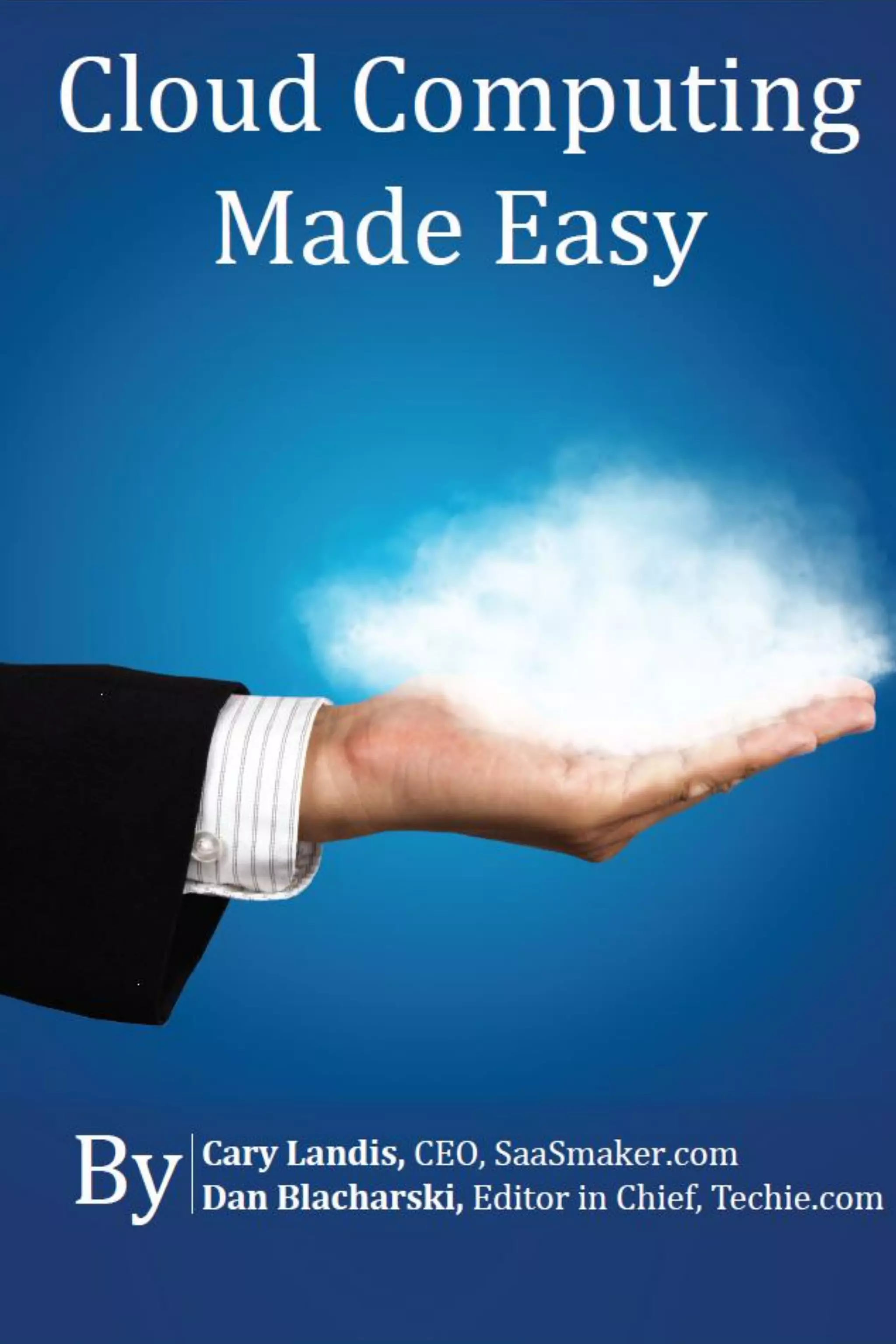
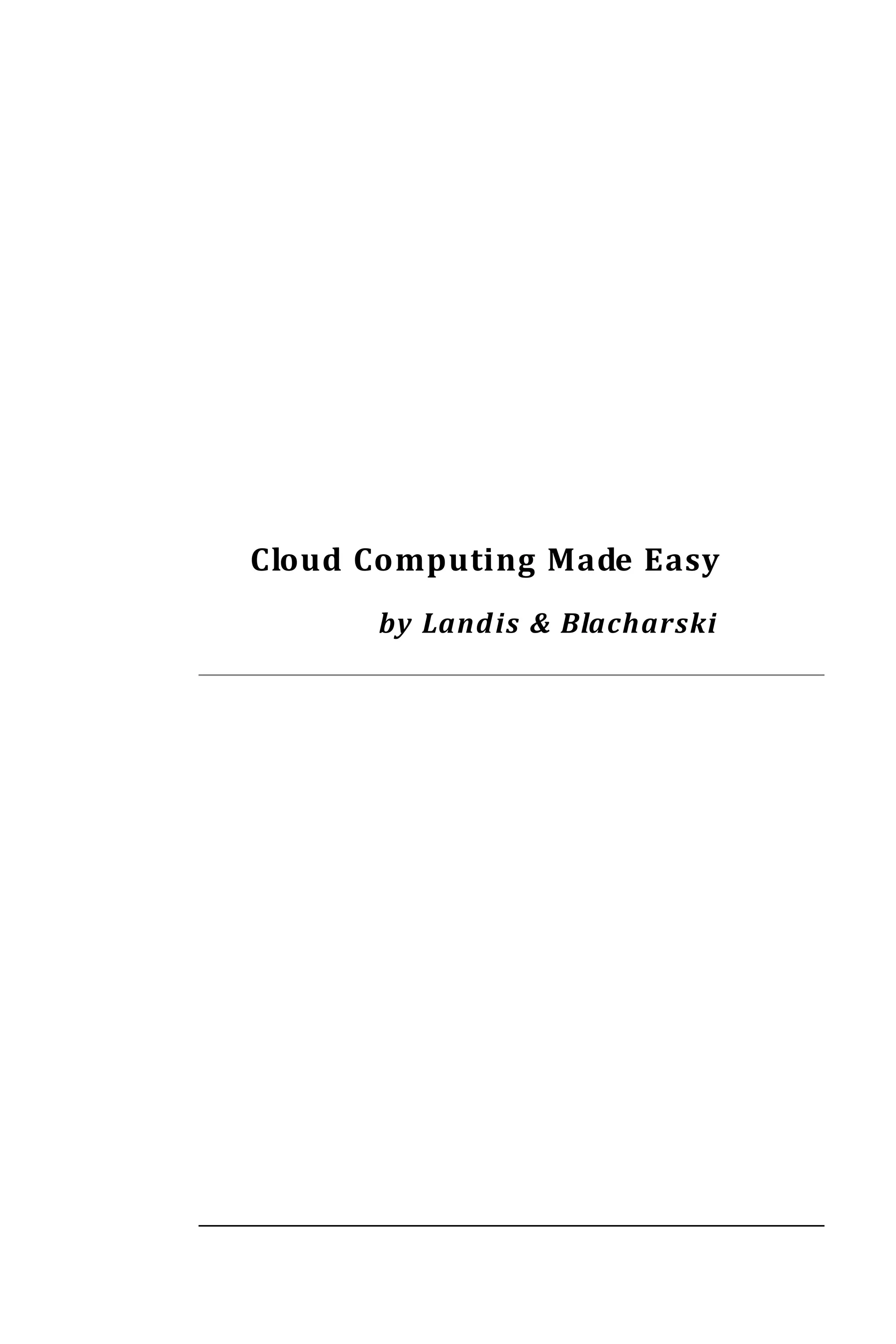
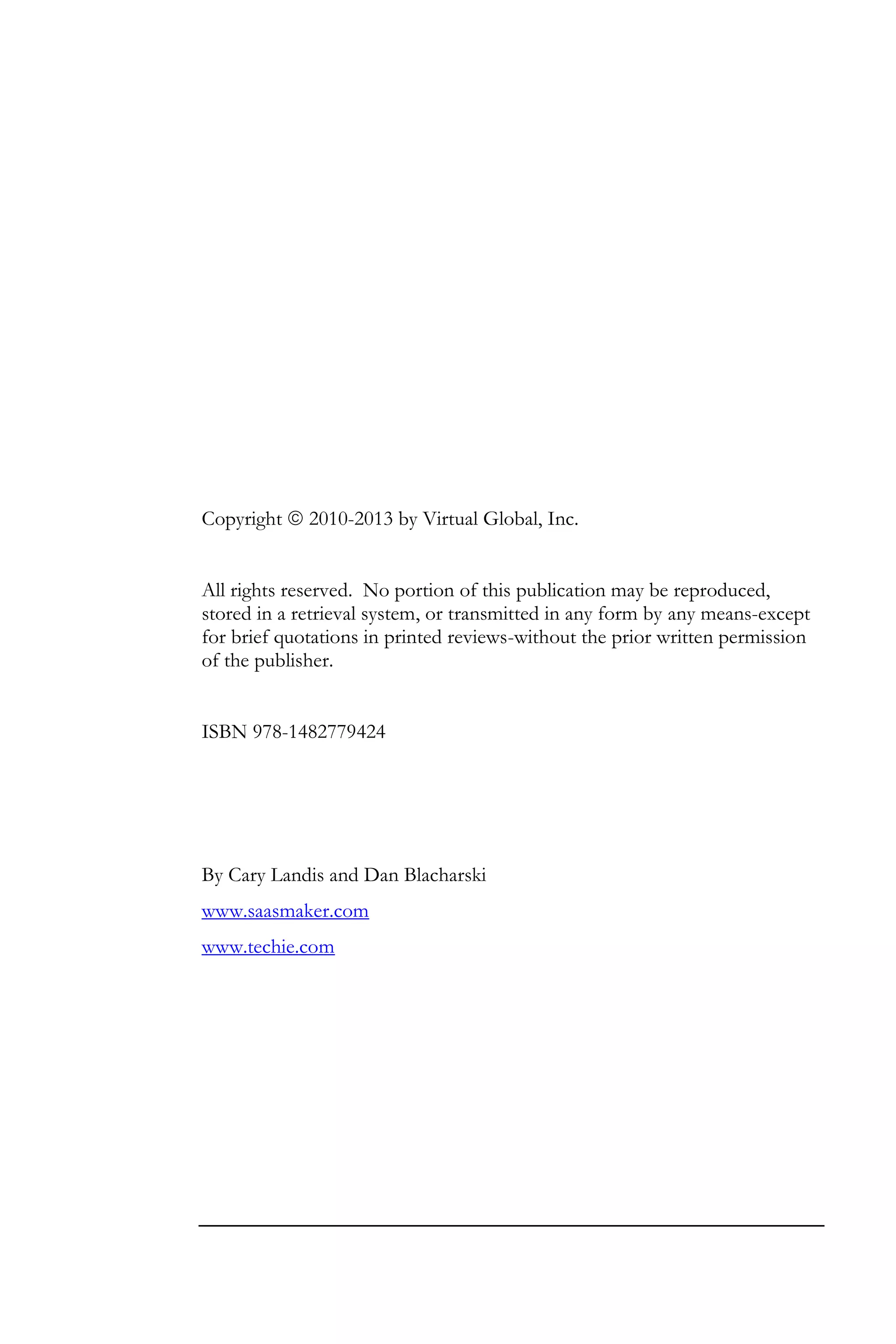
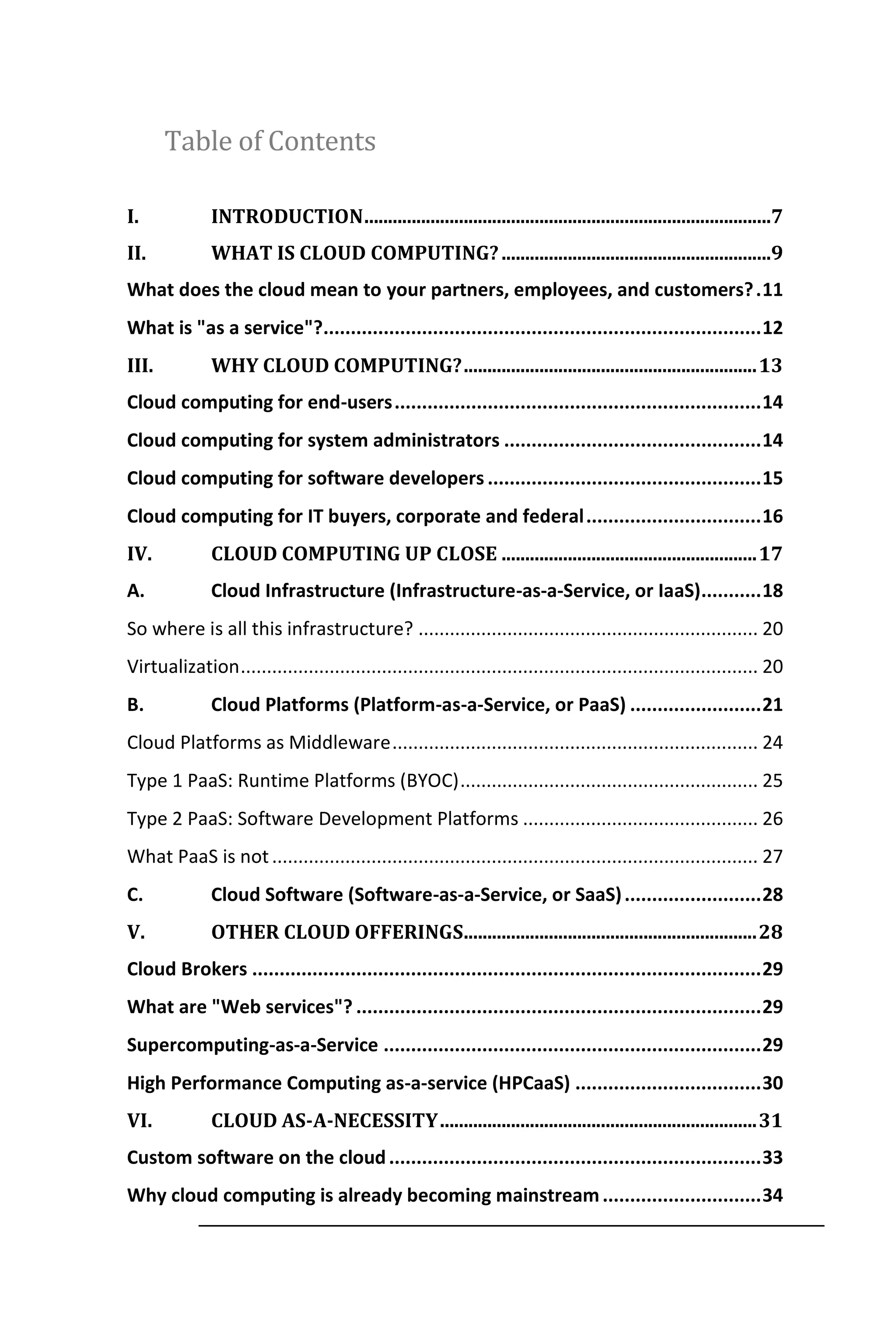
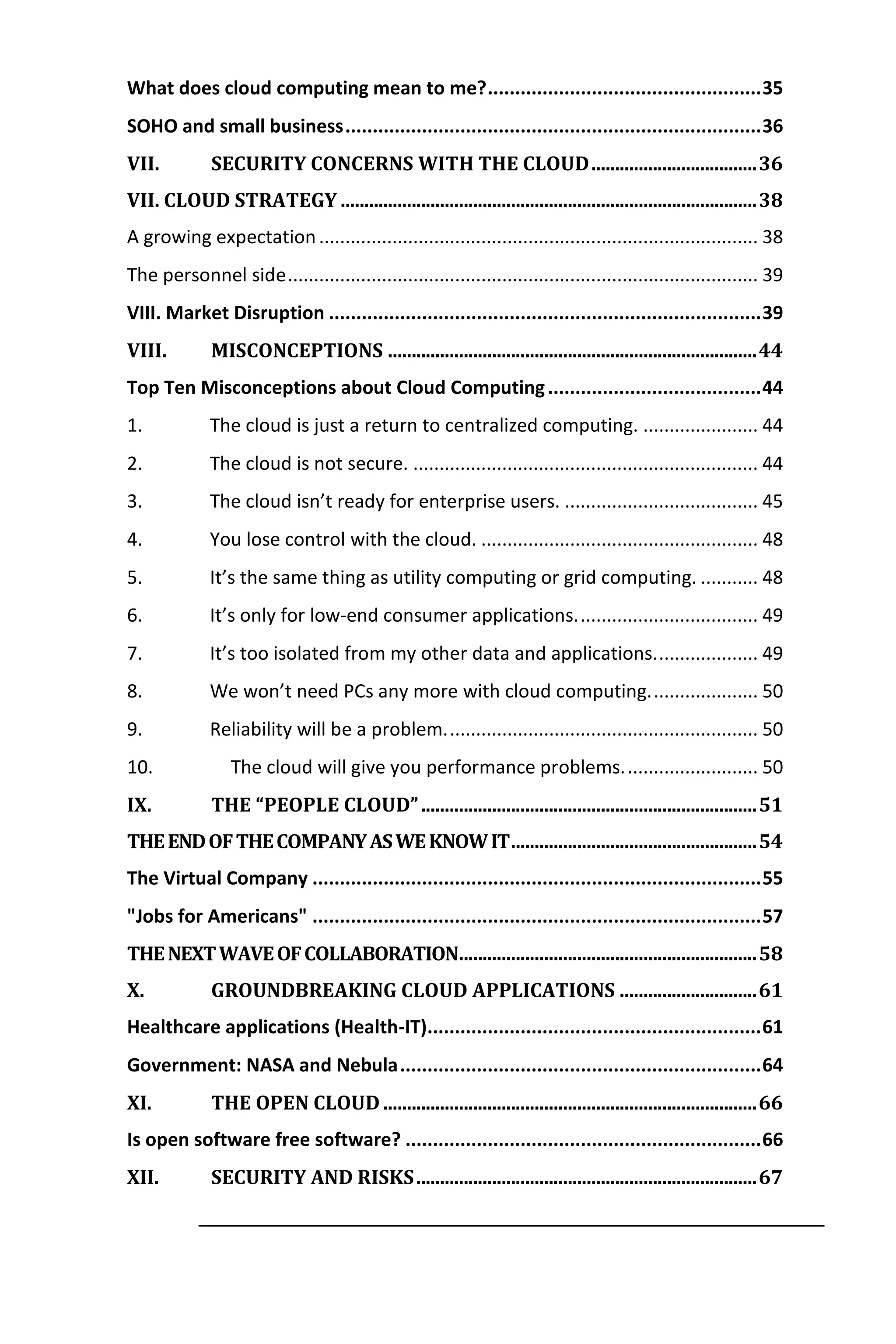
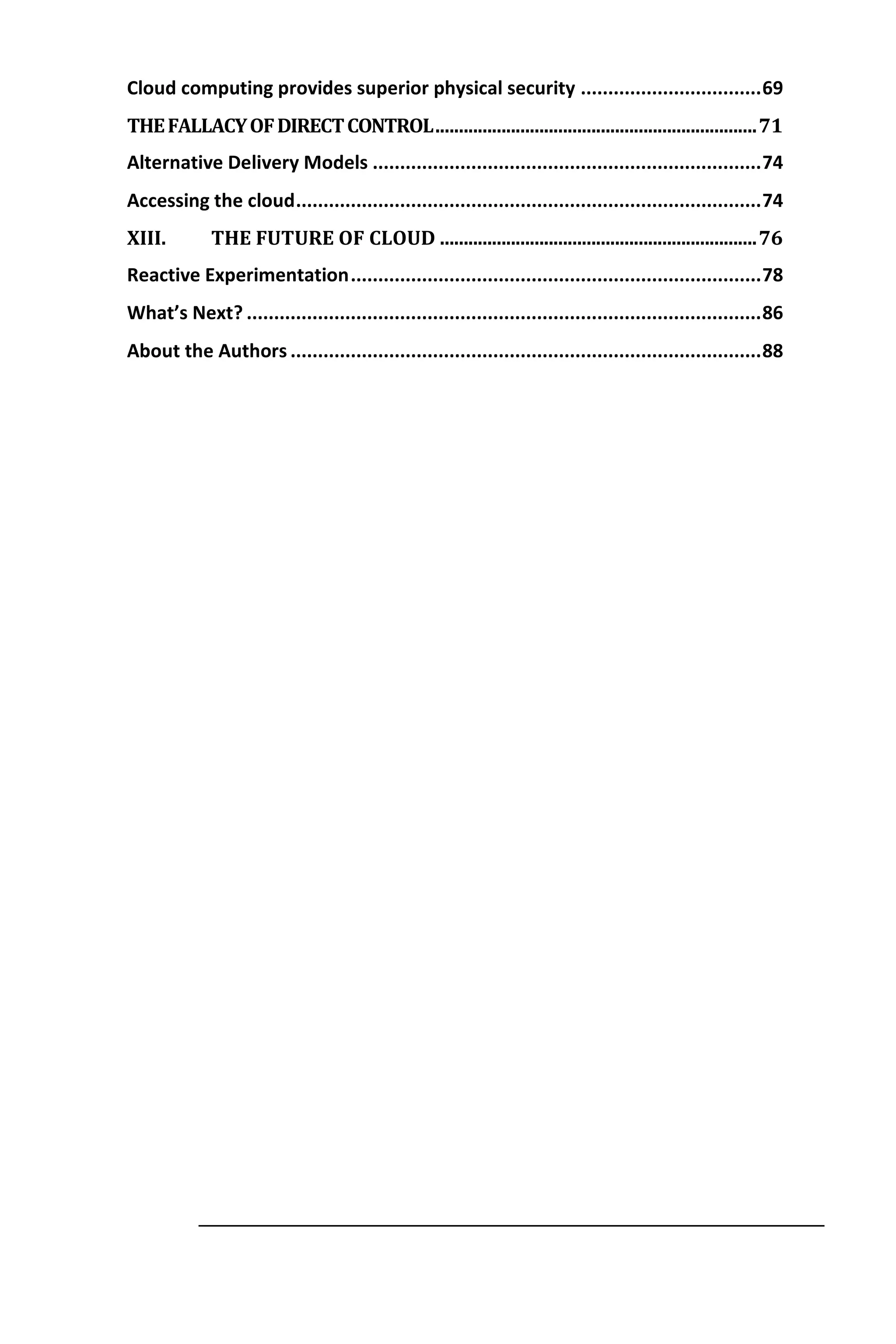
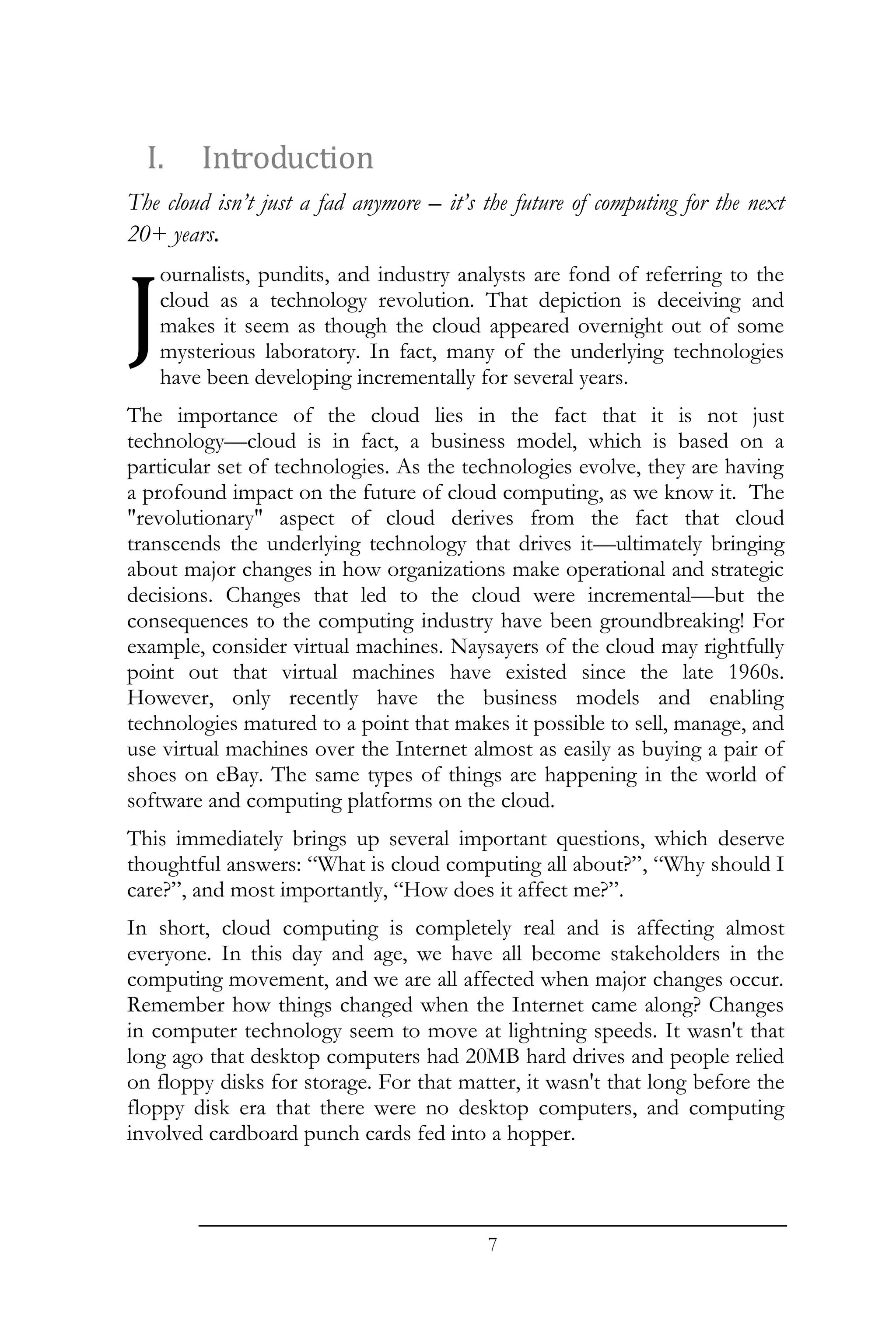

![At this juncture, cloud computing is more than a fad – it’s here to stay.
The cloud has become the computing platform of the future. There is a
popular quote attributed to Thomas Watson, founder of IBM: "I think
there is a world market for maybe five computers." That quote assumed
that computers were
only for the very
largest customers. “We are at the beginning of the age of planetary
We've come a long computing. Billions of people will be wirelessly
way since that interconnected, and the only way to achieve that
speculation, and the kind of massive scale usage is by massive scale,
general trend has brutally efficient cloud-based infrastructure.”
been to move
computing into the --Dan Farber, Editor-in-Chief, CNET News
hands of everybody
from big business
users, all the way down to preschool children. Cloud computing continues
that trend by bringing greater levels of access to high-end applications and
data storage, as well as new techniques for collaboration to the smallest
mom 'n pop businesses, telecommuters, and independent work-at-home
contractors.
Mr. Watson got many things right and to his credit once again, what if his
quote was saner than we once imagined? The term "cloud" refers to the
computing power that is available across the Internet. In a sense, the
cloud is rapidly transforming a worldwide network of computers into the
largest single [virtual] computer in the world.
II. What is cloud computing?
If the term “cloud computing” sounds confusing, then you are not alone.
Cloud computing sounds like a very fuzzy term, and like a literal cloud in
the sky, you can't really put your finger on it. It may help to understand
WHY cloud computing is so hard to understand:
First, cloud computing is an extremely broad term. It’s as
broad as saying “desktop computing” (i.e. the PC), which
encompasses everything from the microchip to the Windows
operating system to the software. As we will learn in this book,
cloud computing encompasses all the same elements as the
desktop.
Second, you cannot touch the cloud. Desktop computing is
easy to understand because you can see, touch, and feel your PC.
9](https://image.slidesharecdn.com/cloud-computing-made-easy-130330161904-phpapp01/75/Cloud-computing-made-easy-9-2048.jpg)

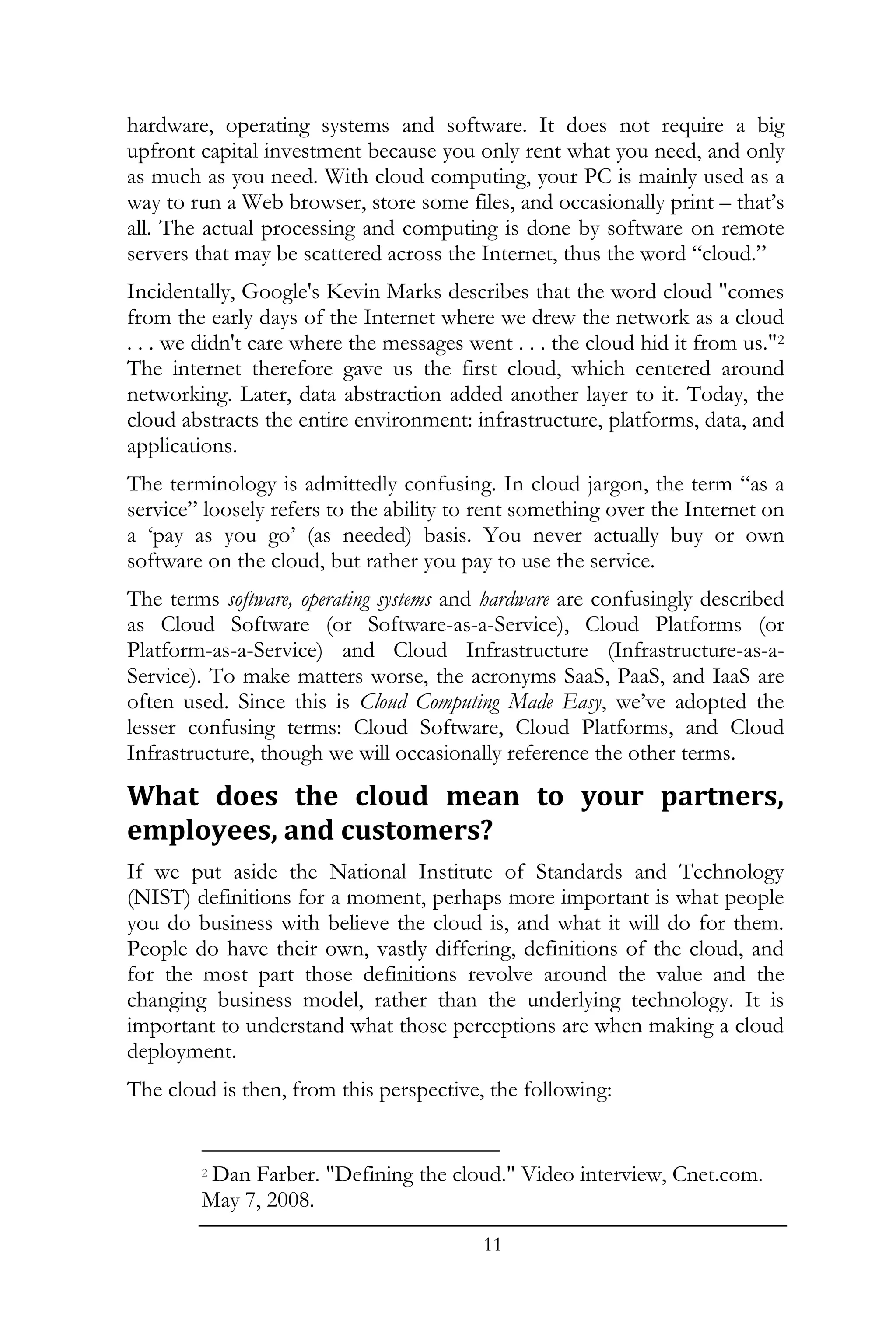
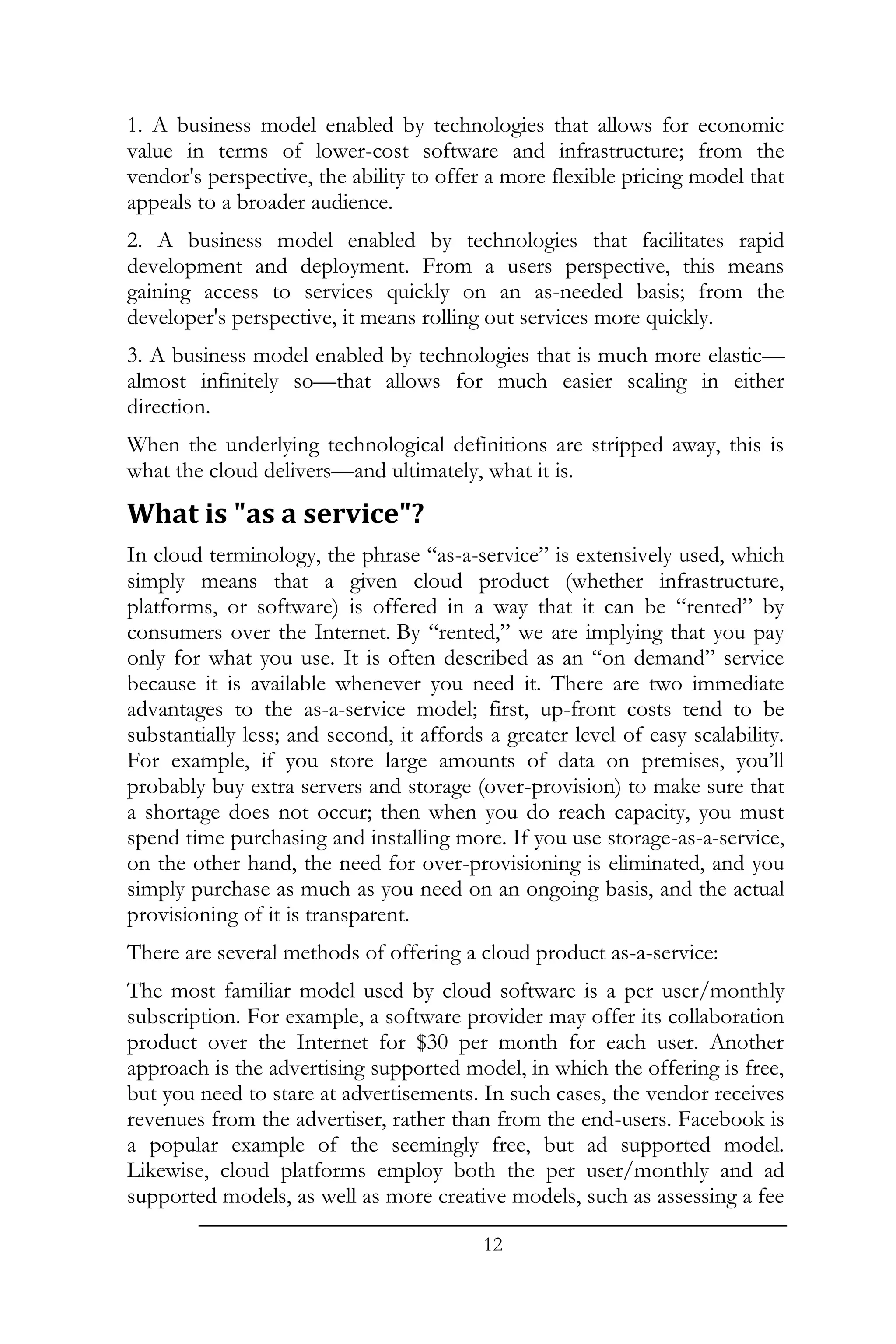
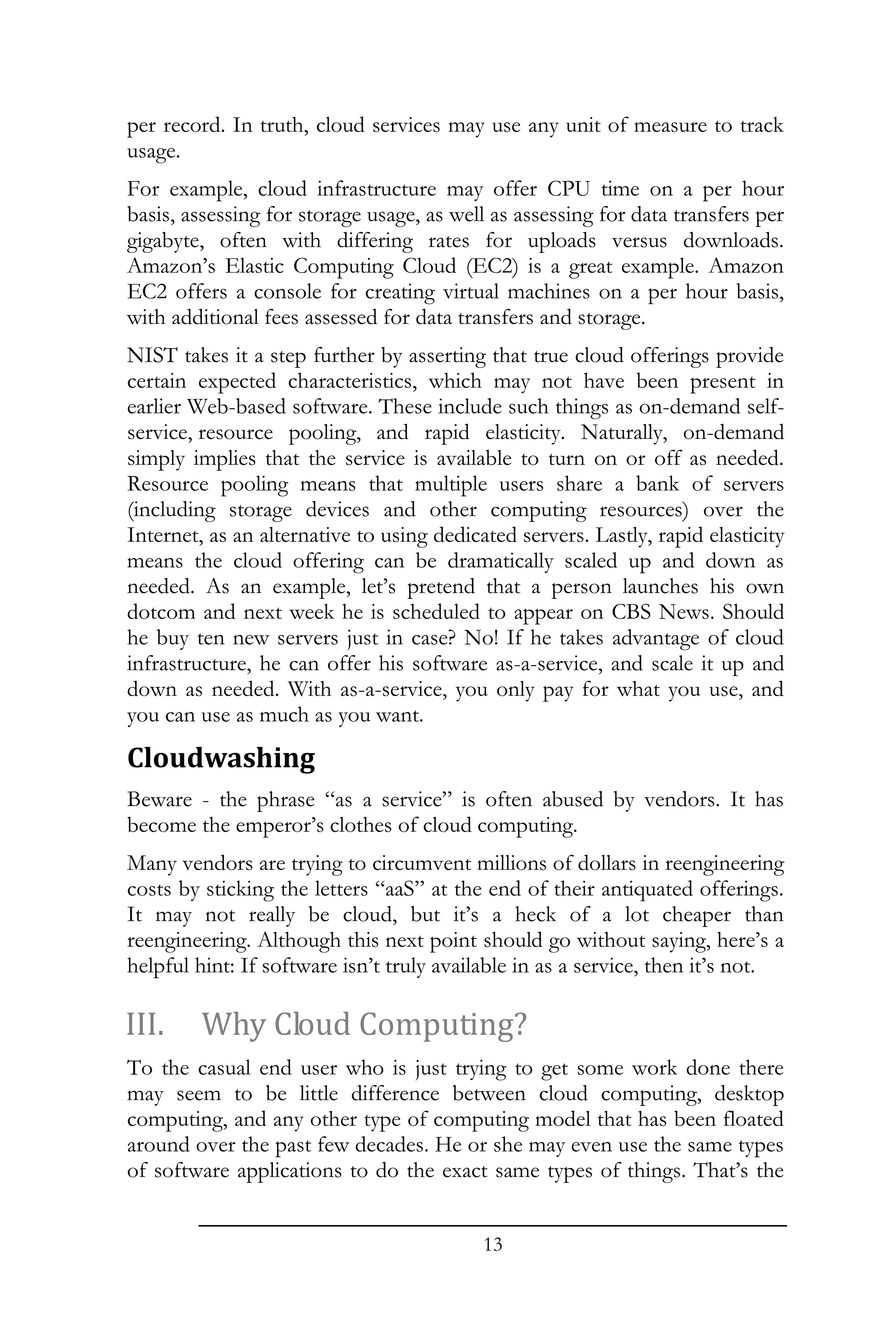
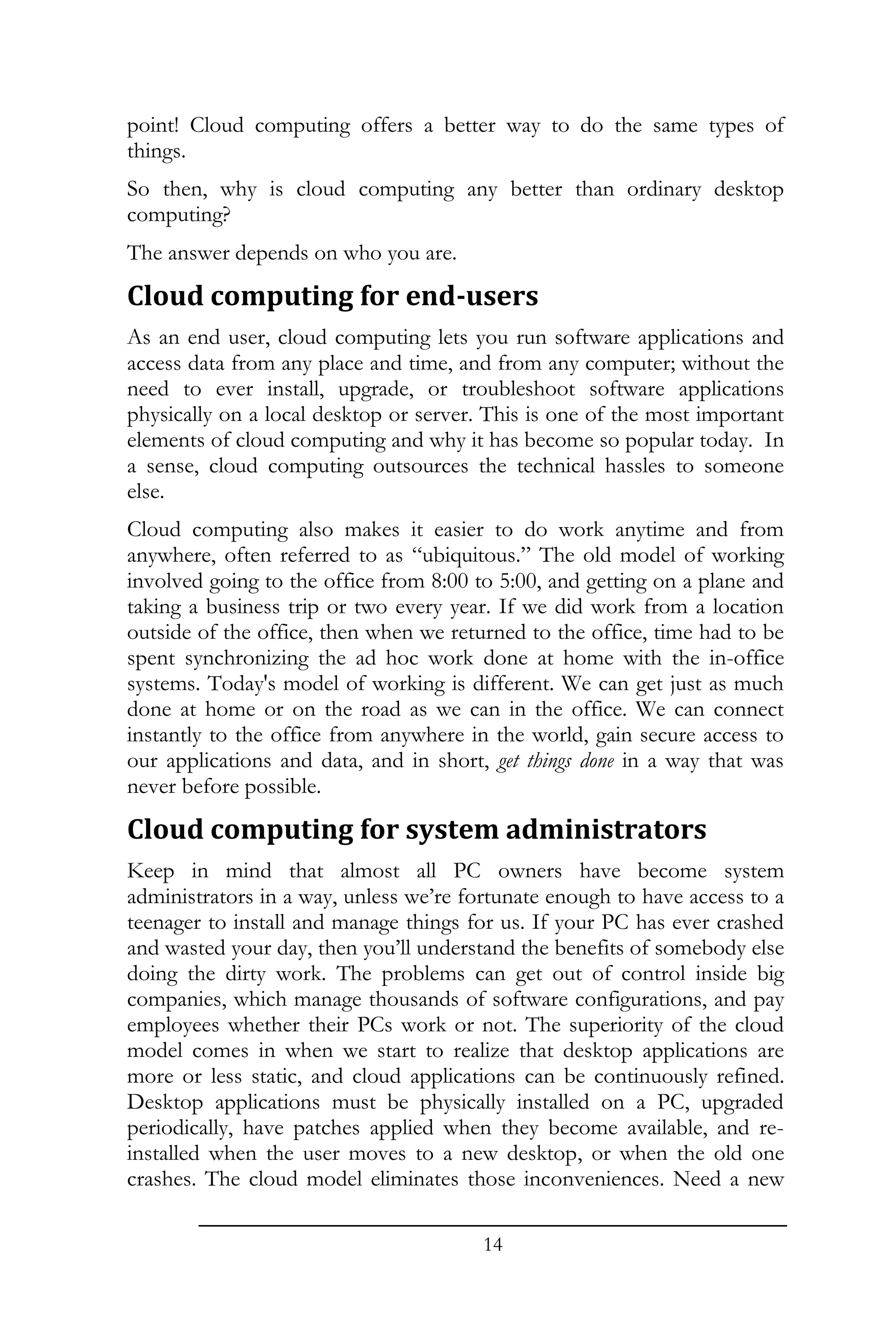
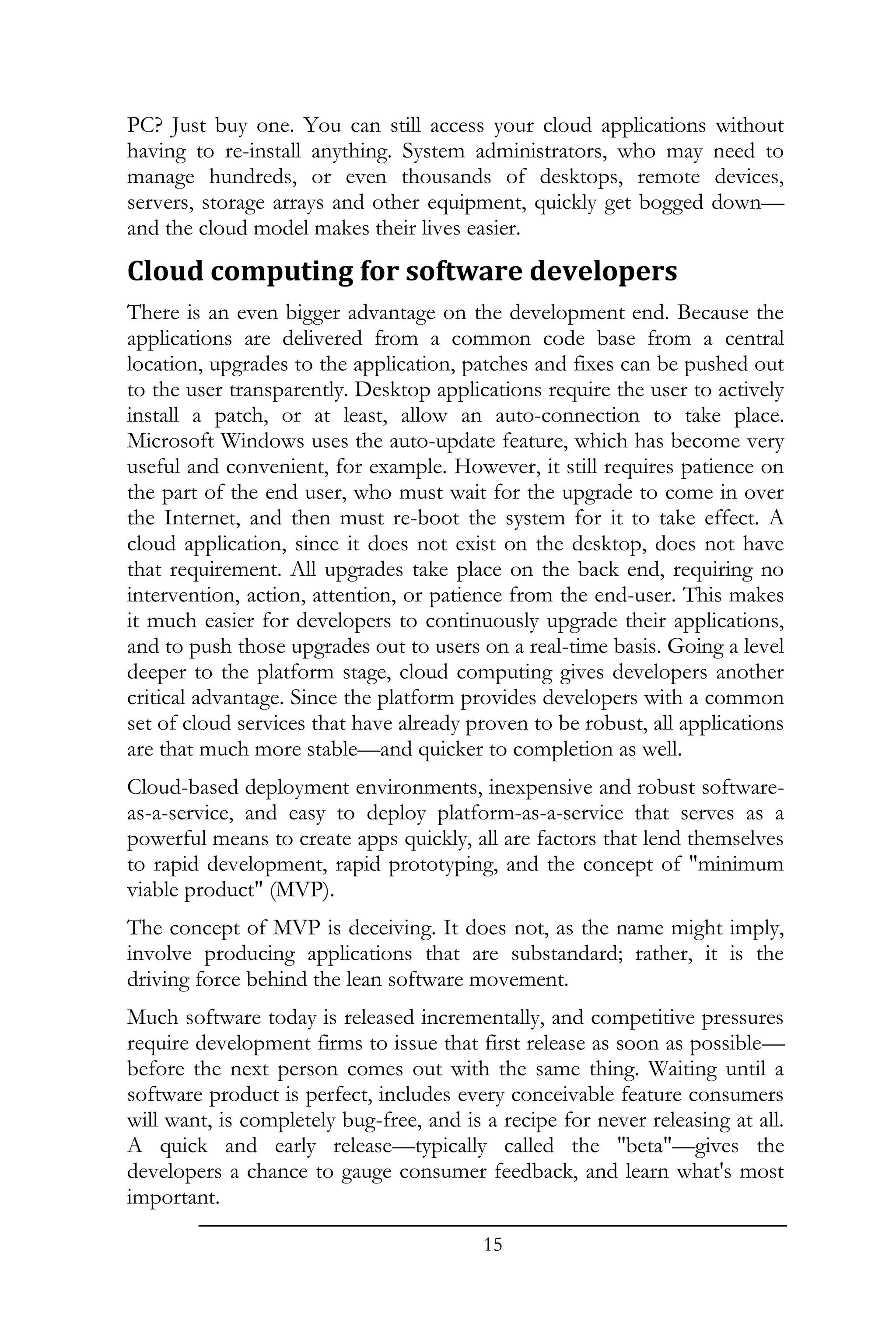
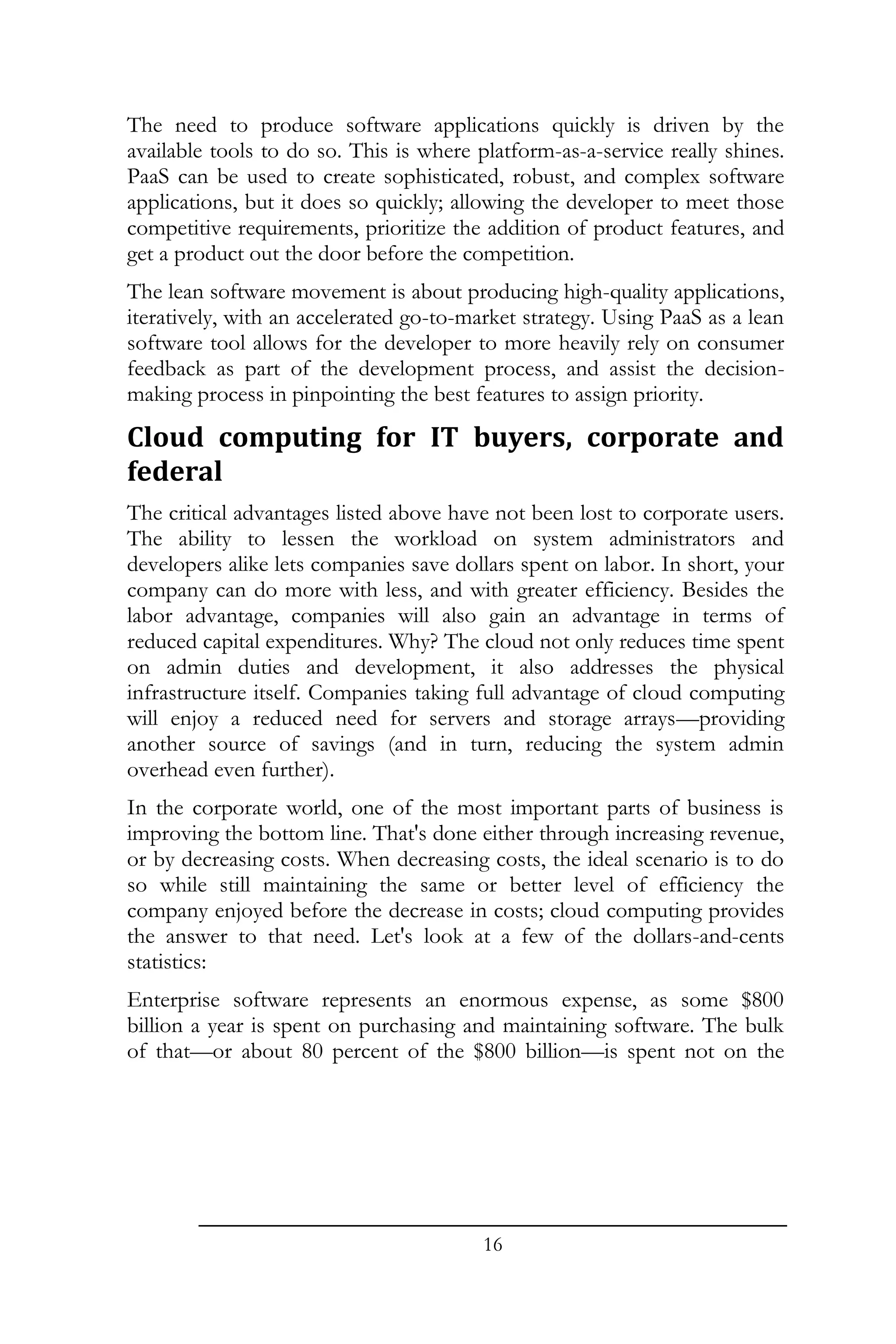
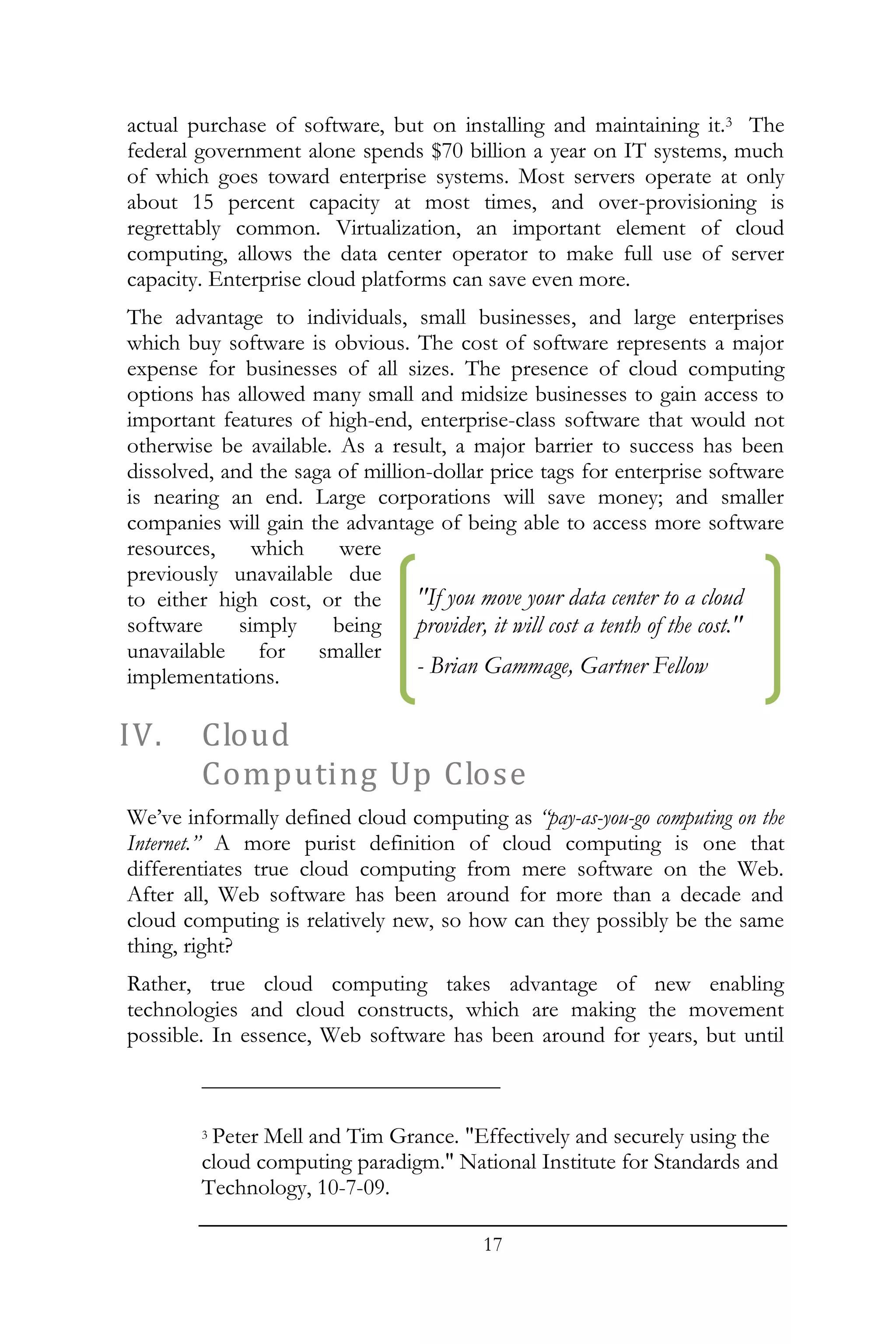
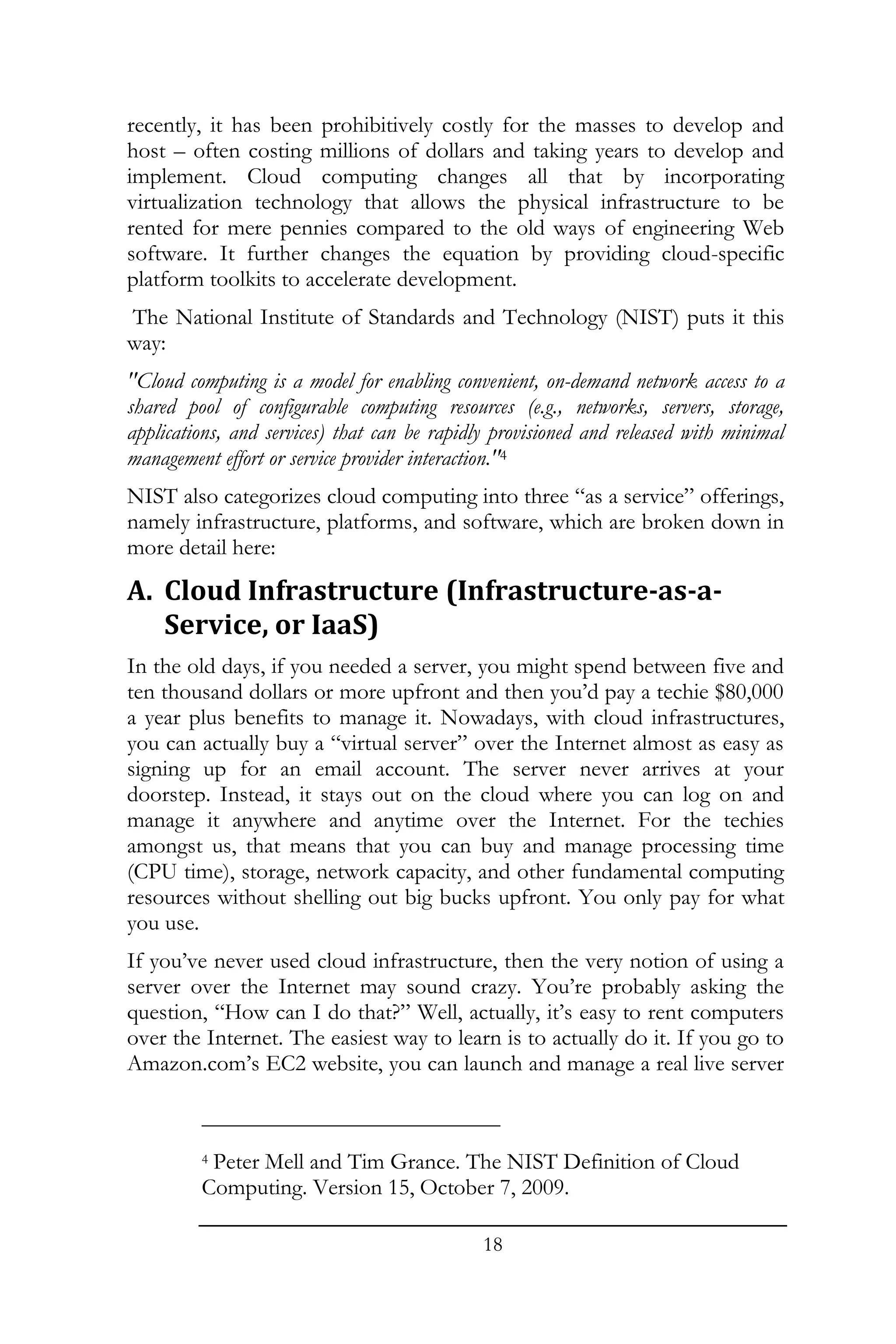
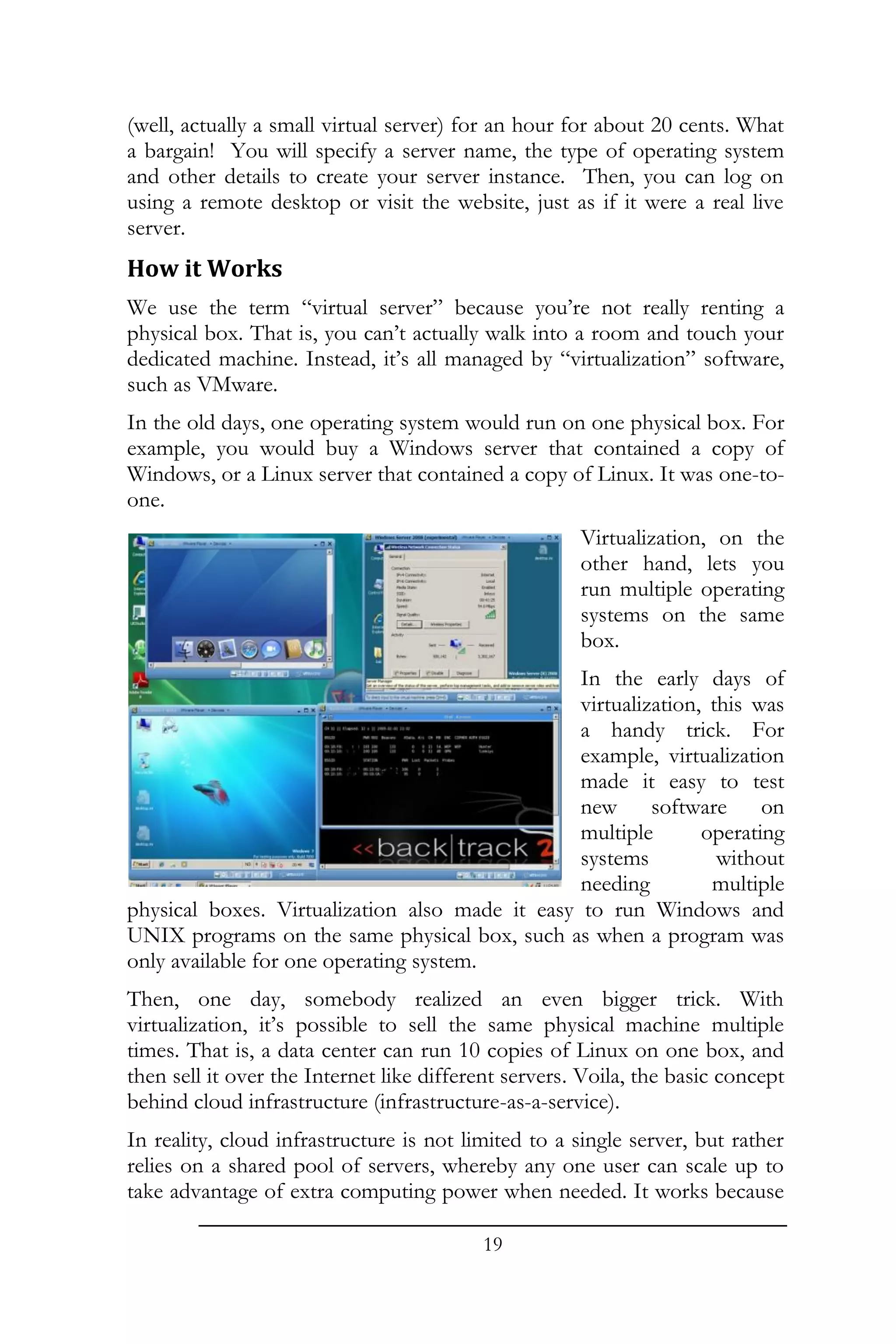
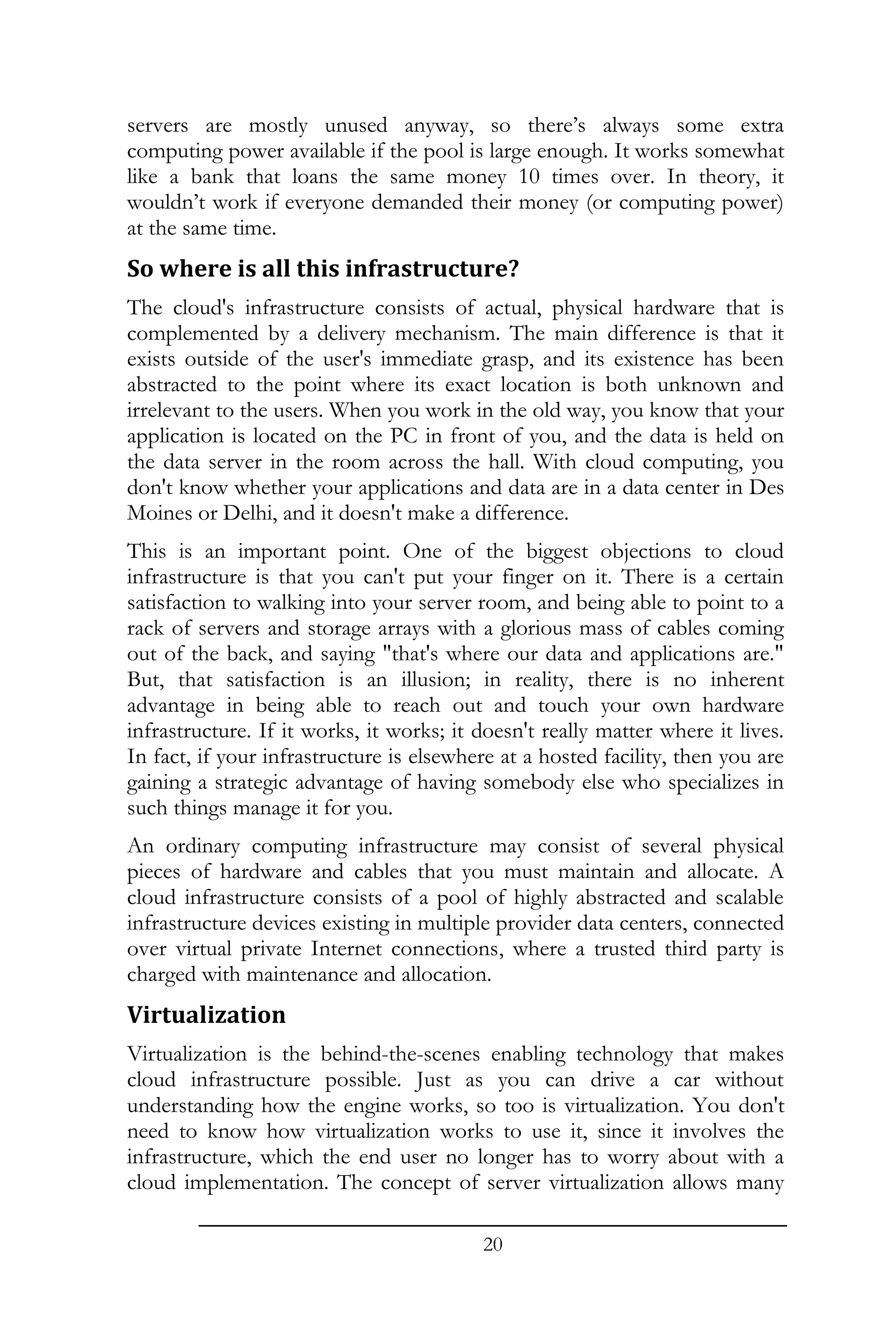
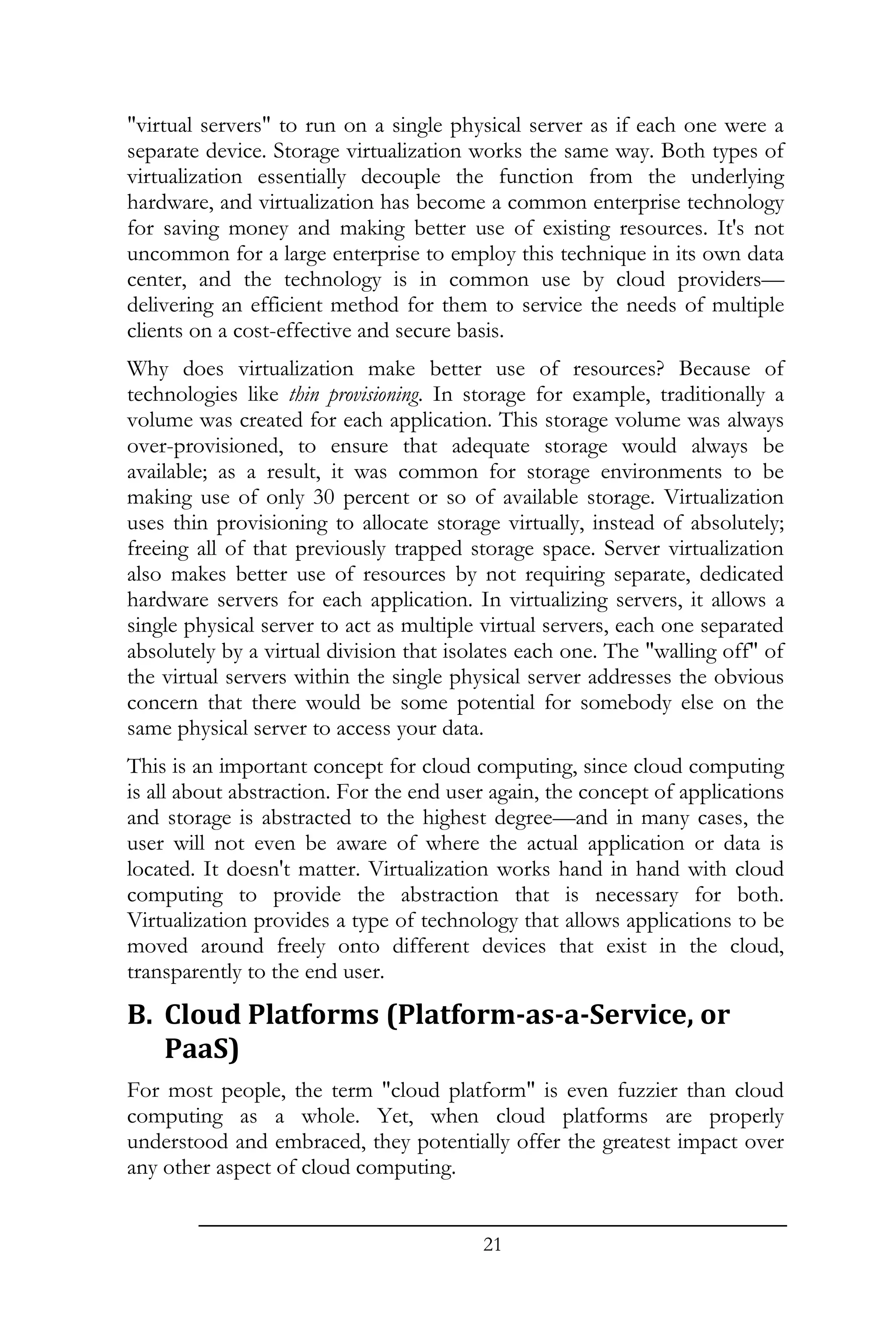
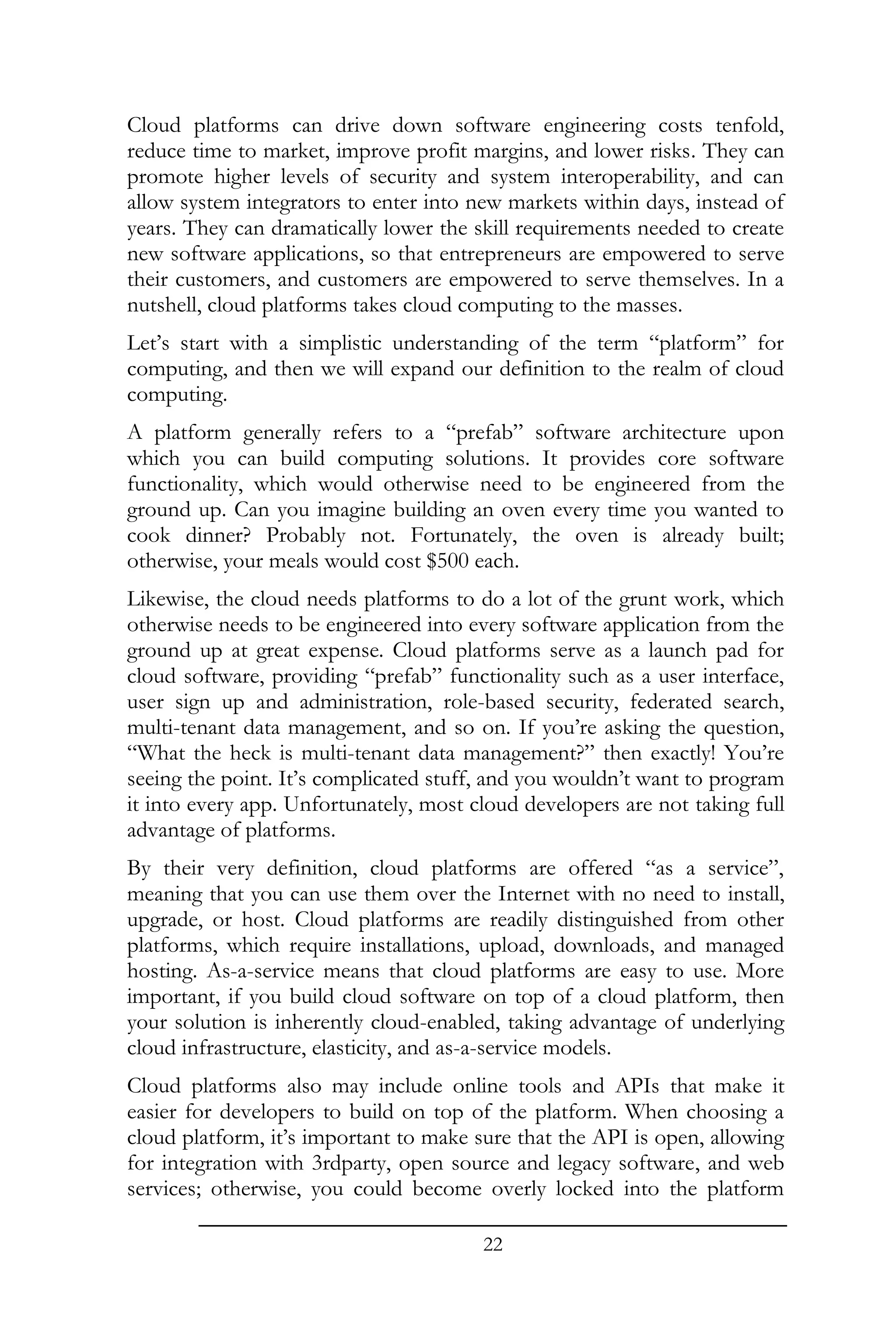
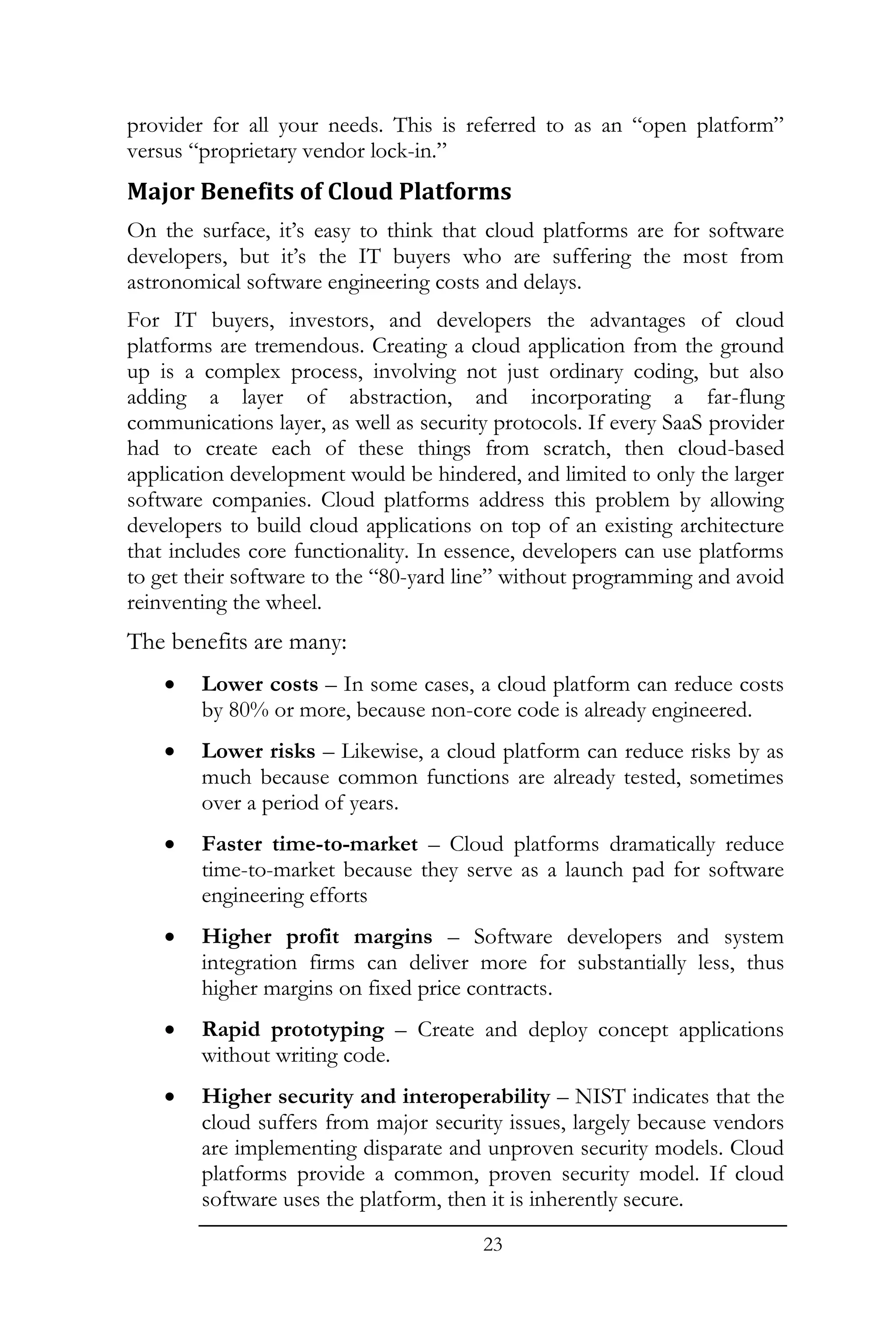
![As an added advantage, cloud platforms shield both software engineers
and end-users from the behind-the-scenes complexities of the entire
cloud. Dan Tapscott, the author of Wikinomics, talks about the growing
complexity problem this way, “the Web look[s] increasingly like a
traditional librarian’s nightmare --- a noisy library full of chatty
components that interact and communicate with one another.” He is
referring to the cloud as a cluttered hodgepodge of Web apps and
services, each with their own logins, data sources, and security/resource
functions. In the absence of cloud platforms, we are recreating the wheel
millions of times over. In a few years, the redundancies will drive up costs
by billions within federal IT systems, health-IT systems and other
enterprise IT systems that rely on cloud services. All these IT systems will
struggle with disparate security models and interoperability concerns.
Unfortunately, cloud platforms remain vastly underutilized. That’s why
some enterprise software systems unnecessarily cost millions of dollars
and take years to implement, only to eventually fail! The resistance to
platforms is sometimes baffling. It’s almost as if the logic is to stick with
what we know, even though it doesn’t work. Ironically, some software
integrators are creating totally proprietary stovepipes from the ground-up,
just to avoid platforms. As a result, IT buyers are paying more than twice
as much for their systems, and being locked into developers. Instead, they
should be taking advantage of open APIs that are available with some of
the more open cloud platforms.
Cloud Platforms as Middleware
It may also help to think of a cloud platform as the middle layer of a
three-layer cake, in that it rests between the hardware and the software.
Sure, you can remove the middle layer, but in doing so you’re also
removing a lot of important “cake” that somebody needs to bake from
scratch. In the case of software engineering, that’s some expensive cake.
This means that software can be built without using cloud platforms, but
the costs of doing so can be detrimental; creating a barrier to entry for all
but the largest development shops. You see – platforms actually do a lot
more than just provide core functionality for software. They also lower
the time and risks of engineering software dramatically because the
platform engineers have already worked out the devils in the details on
their own dollar.
Platforms also reduce the software footprint and maintenance costs,
because the responsibility for maintaining platform code is essentially
outsourced to a platform provider, who achieves economies of scale by
maintaining one system.
24](https://image.slidesharecdn.com/cloud-computing-made-easy-130330161904-phpapp01/75/Cloud-computing-made-easy-24-2048.jpg)

